LIEN’S ENVIABLE CALVES LEAVE ME IN HIS WAKE AND RAPIDLY PROPEL HIM UP THE MOUNTAIN.
Allows the user to create Feature Articles
LIEN’S ENVIABLE CALVES LEAVE ME IN HIS WAKE AND RAPIDLY PROPEL HIM UP THE MOUNTAIN.
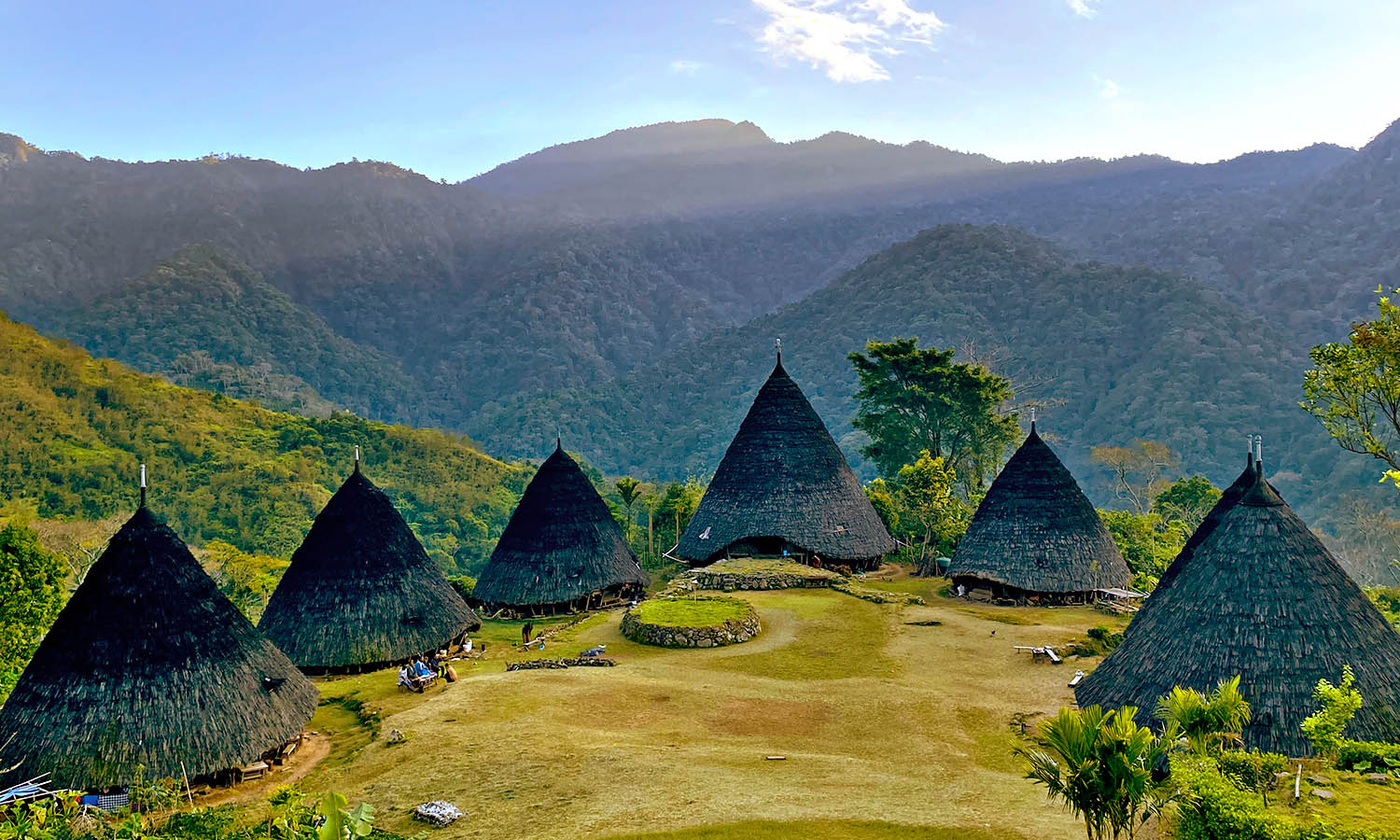

As the only point of entry into his home village, Lien has made this steep journey many times. The trek itself isn’t long – only about six kilometres – but it’s through dense mountainous jungle at a vicious incline.
I sweat profusely, I swear often. We arrive late in the afternoon, and I’m surprised at how taken aback I am.
As travel writers, we’re priveleged to be sent around the world to see some very beautiful places. Because of this, we’re not easily left in awe. But it’s immediately plain to me that I’ve climbed to a truly exceptional corner of the planet.
This is the village of Wae Rebo, on the island of Flores.
Click PLAY to watch


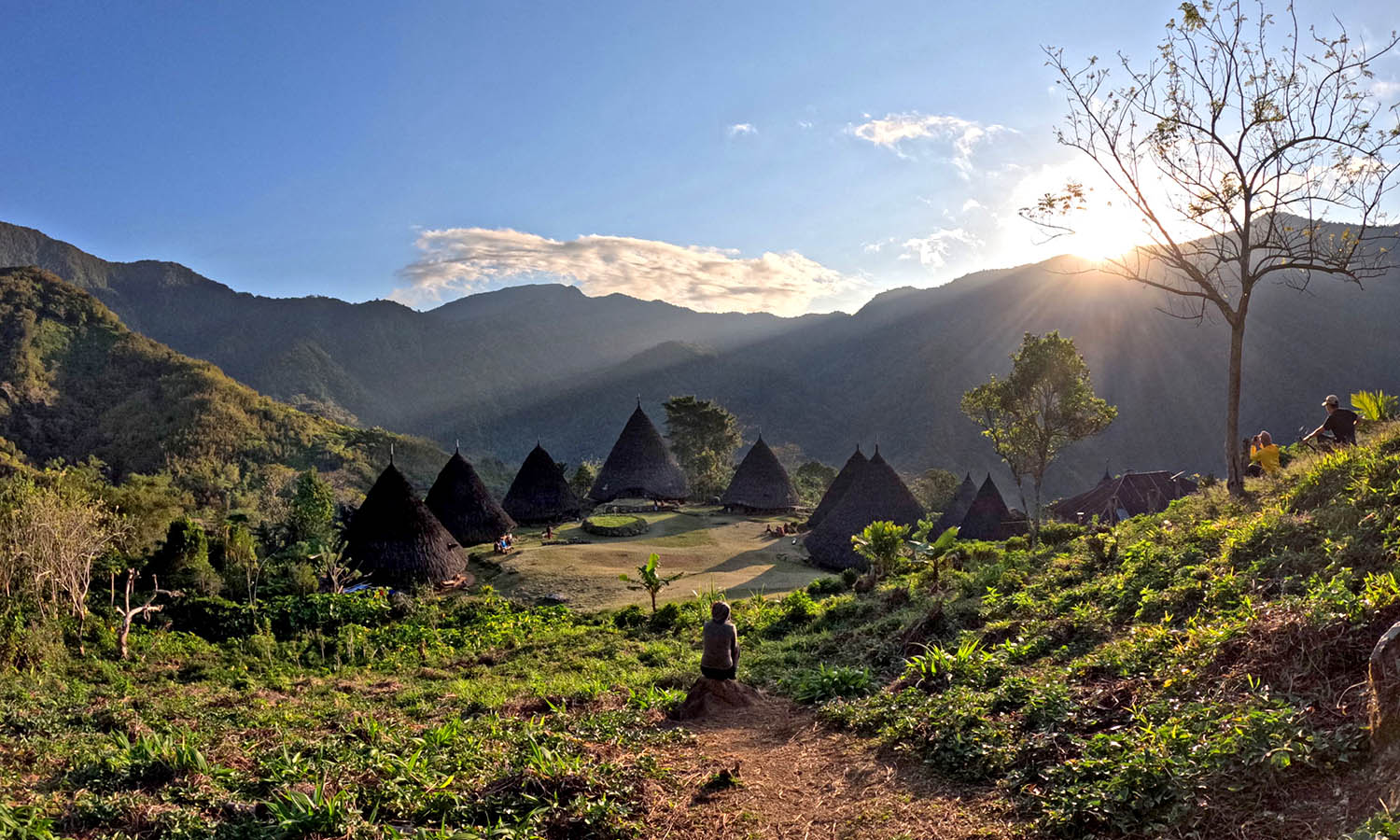

We leave Labuan Bajo, a diving mecca on the lesser-visited Indonesian island Flores, at the crack of dawn and drive for four hours along winding, hilly roads to the town of Denge. We encounter qualms at a river crossing but a particularly entrepreneurial bunch of barefooted lads—none older than 12—help us cross the river by manoeuvring a bunch of stones (for a small fee), like a bunch of tiny proverbial Moses’ parting the sea.
After a hairy 30-minute motorbike ride (that my insurance company definitely wouldn’t have had any interest in) we reach the base of the mountain and find a local person abandoning the trek—the going too tough. Ominous sign.
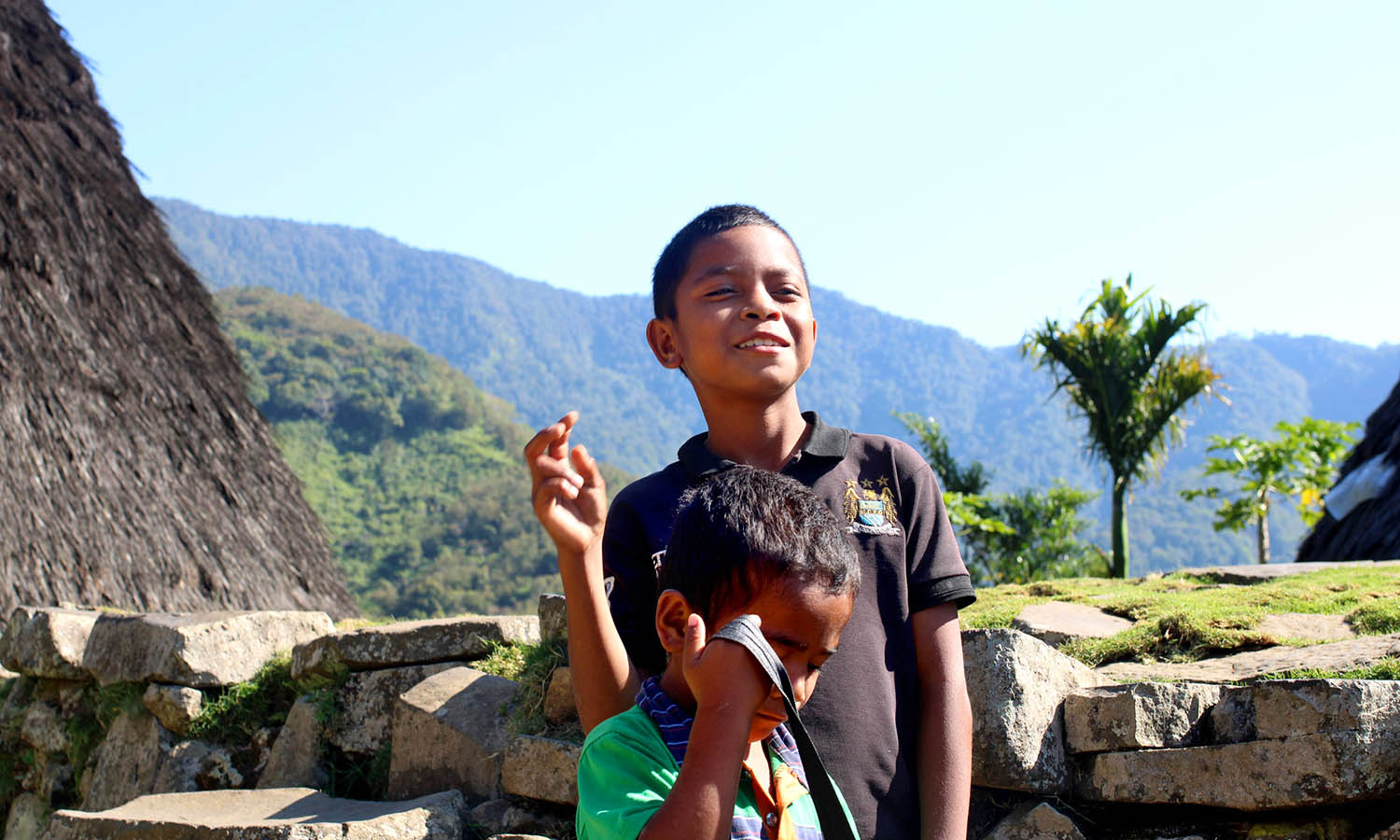

Entering the rainforest at the mountain’s base feels like you’re being teleported somewhere else, not least because of the change in temperature; we go from a humid 33 degrees to something much, much cooler. Sometimes it is muddy, sometimes it is slippery, sometimes it is rocky. A fiery red insect crawls by me at water break. Lien isn’t sure of the name but he’s certain of its intentions: “Danger, danger, danger,” says Lien wagging his finger, as if to say “don’t fuck with that insect, bruh.”
Lien’s father is the leader of the village, but he’s in Labuan Bajo for Lien’s sister’s wedding. I feel guilty at taking him away from the celebrations, but glad to have him with us on account of his knowledge of both village, and deadly insects.
“How long has your family lived there?” I ask.
“Twenty,” he answers, but then pauses; “But we count in generations. When the leader of the village passes away, he is replaced, and then we have a new generation.”
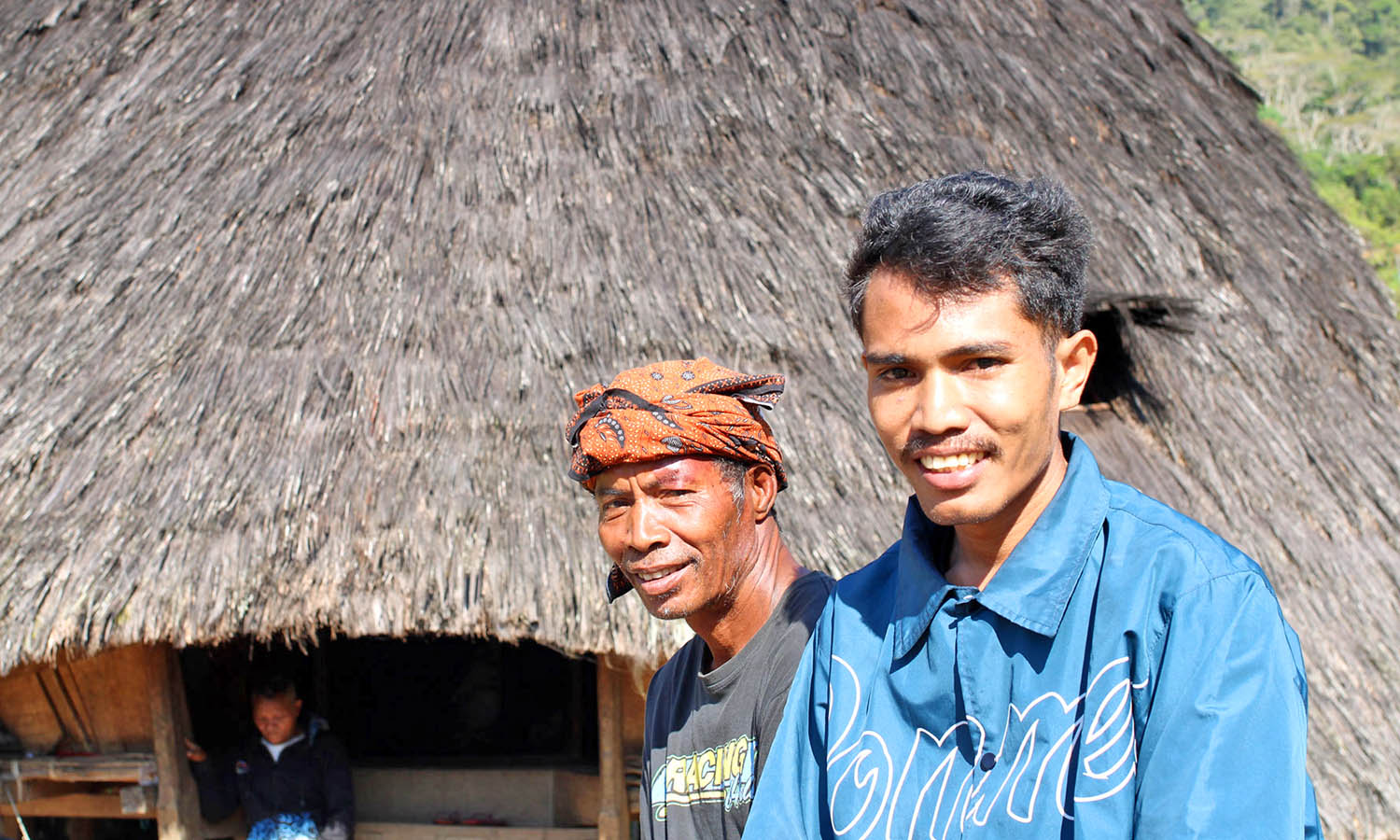

So if we conservatively estimate the average head of the village to last at least 50 years each, that means the Manggarai people have been living at Wae Rebo for…
“Over 1,000 years,” he says, as if he can hear the math crunch in my brain. “It is probably more than 1,200 years, but no-one really knows exactly.”
The Mbaru Niang are wooden, cone-shaped, thatched-roof huts that the Manggarai people call home. Roughly 10 metres tall and situated in a semi-circle at the entrance to the village, the huts are flanked on one side by the elevated village cemetery and stunning mountain views to the other. They are unlike any dwelling I’ve laid eyes on.
When you combine this with the extraordinary location of the village – perched 1,100 metres above sea level in the jungle – it makes for a surreal scene.
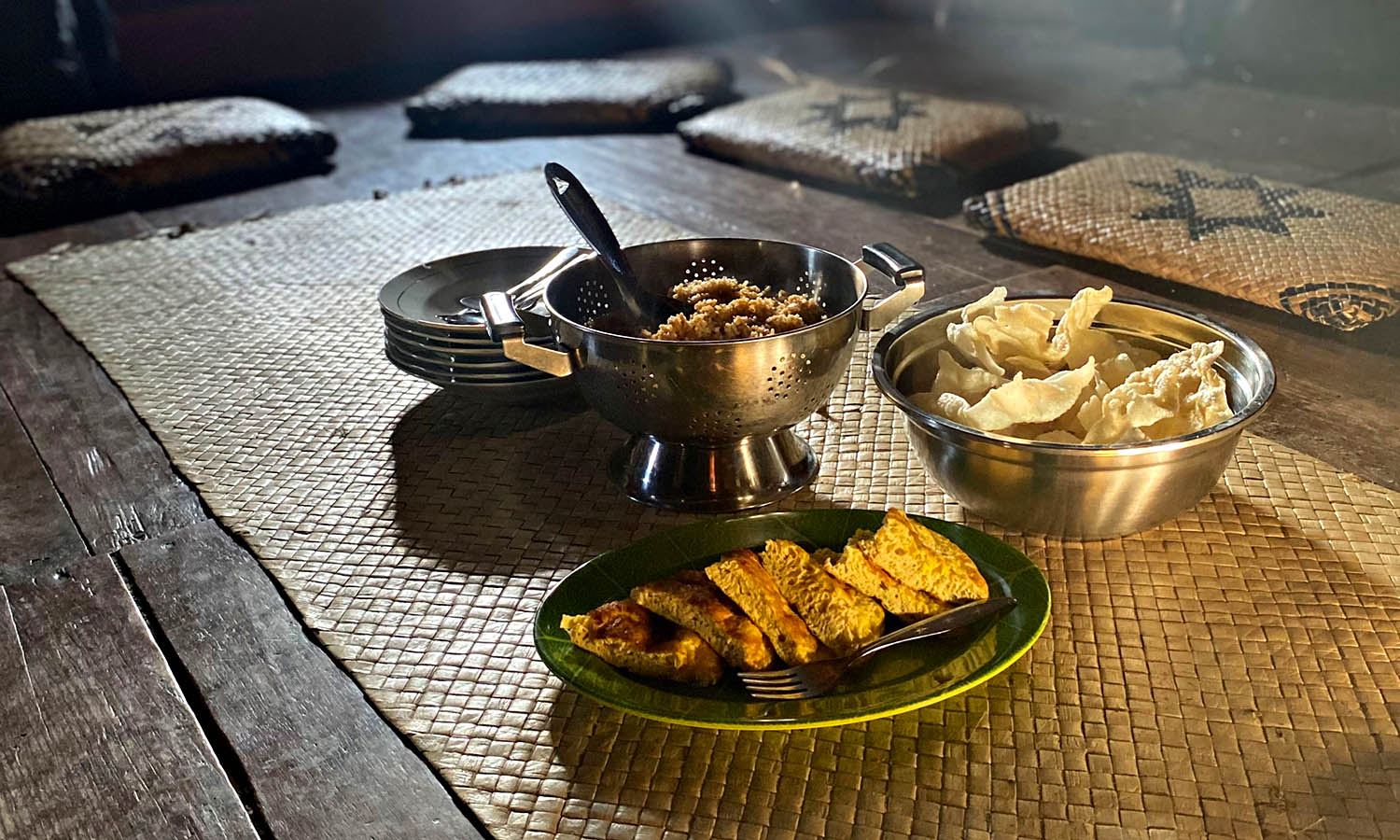

There are as many as five floors in each hut, with different families living quarters’ taking up each level, and a communal eating and greeting area at the bottom. There is seemingly always coffee brewing on the bottom floor, the smell percolating through the entire village.
The best place in the Mbaru Niang, however, is by the windows where light softly filters through. I’ve drank some coffee in my time but perhaps no cup has been as peaceful as the fresh coffee I have sitting here in the cool of the hut, coffee warming my insides and sunlight warming my face.
It is good coffee too. The Manggarai people have been making their own Luwak coffee for about ten generations. Luwak coffee is the most expensive coffee in the world, taken from the faeces of Asian palm civet native to the area. Unlike other Luwak coffee, where the civet are kept in cages in an intensive, battery-cage operation, the civet here run wild.
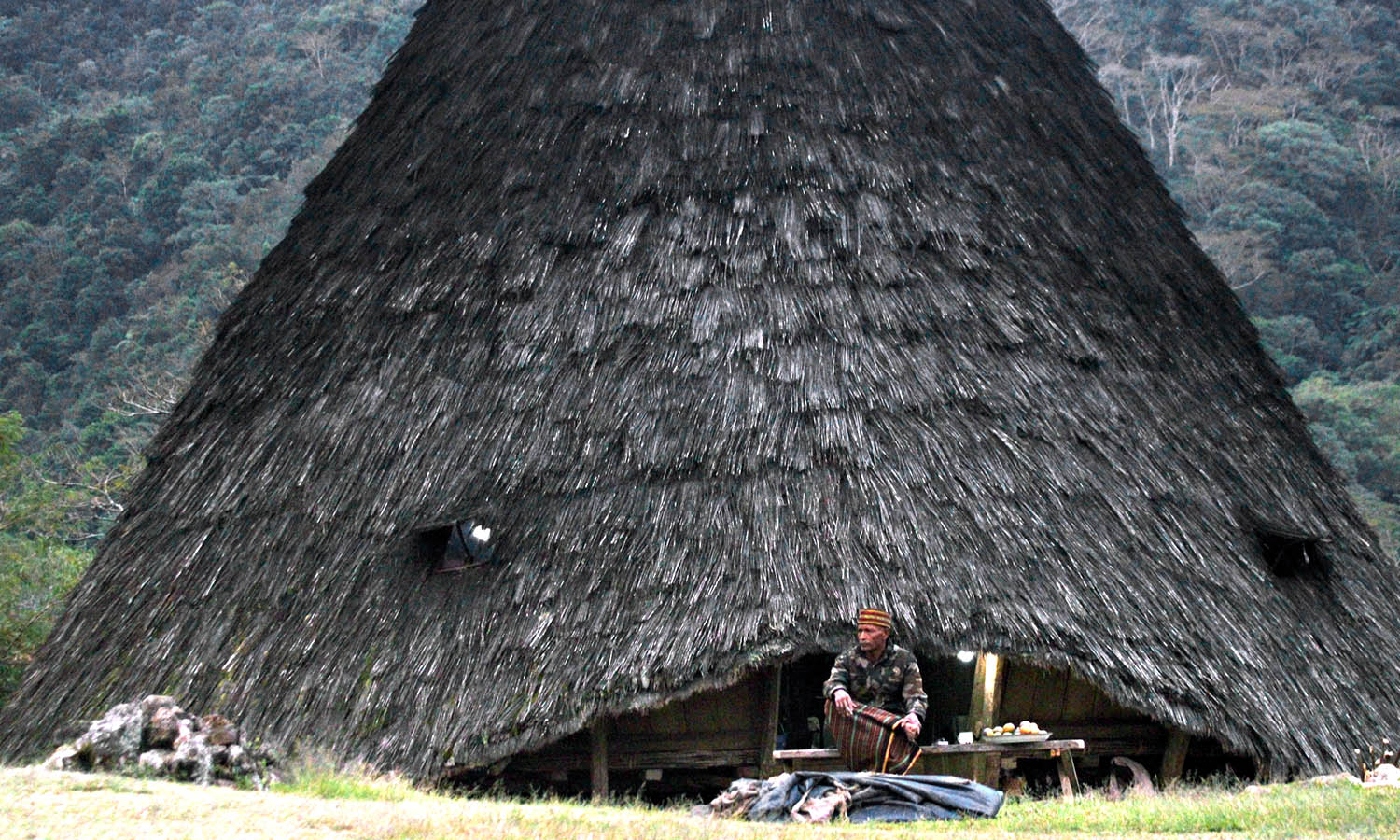

It makes collecting the poo—just imagine searching for the shit of a tiny cat in a big jungle—and brewing the coffee very time consuming. But it also makes for a far better product than most commercial Luwak. It is also delicious. Lien says he drinks six cups a day, I get close to this. I also buy so much that I’m forced to declare it on my way back to Australia.
For a long time coffee was the Manggarai’s currency; representatives would head to the bottom of the mountain and trade with it, mainly for rice. Even today, in 2023, the village doesn’t lack for much—it sees to its own livestock, harvests its own vanilla, fruit, vegetables, honey and produces its own arak.
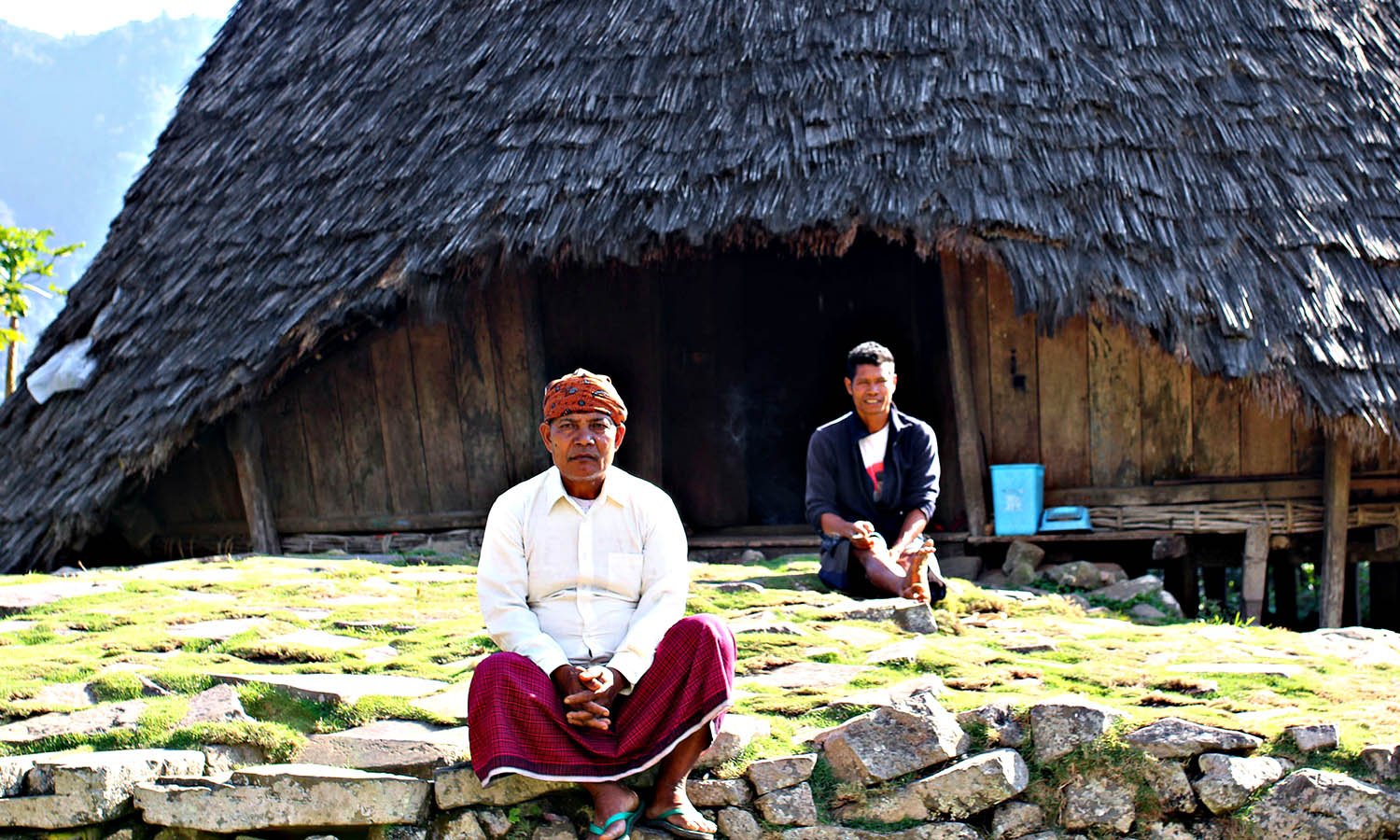

A man named Benedictus pours me a shot of half honey, half arak (produced from sap of nearby palm trees). The glorious sweetness of the fresh honey hits my senses just before the explosiveness of the arak.
Benedictus says they measure the alcoholic content by lighting the arak on fire—the easier it lights, the more alcoholic it is. A few more honey araks and I feel like I am on fire, or flammable at the very least.
We spend the night wandering around the village in complete darkness, thanks to the cloud cover. At one point I find myself at a small waterfall, bathing my face in the dark to wash away bad spirits. The arak stays with me.
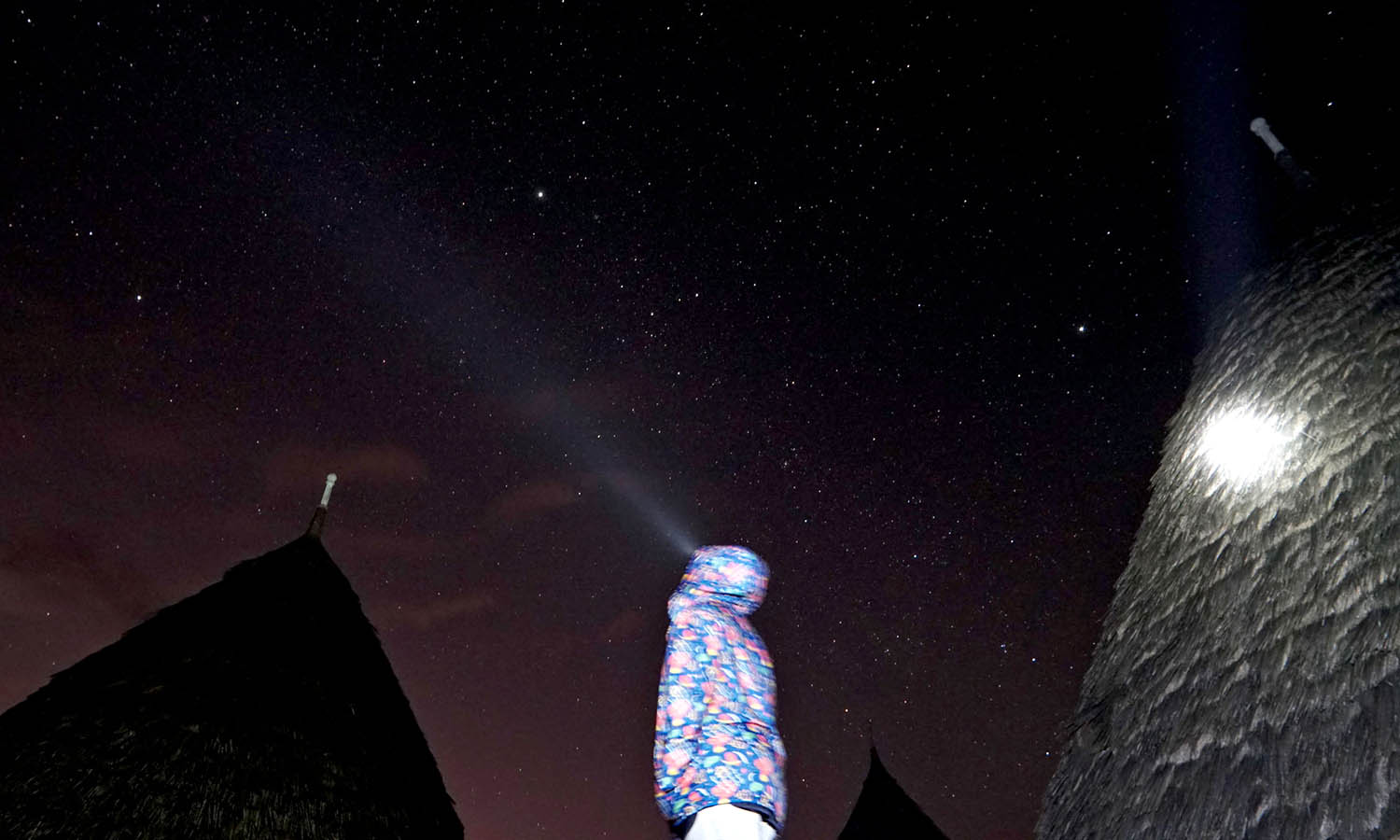

The clouds eventually clear and the village is illuminated. We lay on the grass outside the Mbaru Niang and gaze at stars that have gazed back at the Manggarai for over a thousand years. It’s 1am and I can still smell coffee somewhere.
“Take an Onsen. You will feel new again” says Kazuhiro Otani, the owner of Bettei Otozure, a ryokan that blends tradition with a luxurious hint of modernity.
Click play to WATCH
I’ve just arrived in Nagato Yumoto, a stunningly picturesque mountain village in the Yamaguchi Prefecture on Japan’s westernmost tip. I’m bleary-eyed, aching and only just starting to feel my feet again after far too long up the back of a Qantas A330, boarded in Sydney.
“Are you sure?” I ask. “It seems odd to have a bath at two in the afternoon.”
“Trust me,” says Kazuhiro with a look of intense assurance. “This onsen is very special. We onsen here whenever we need it.”
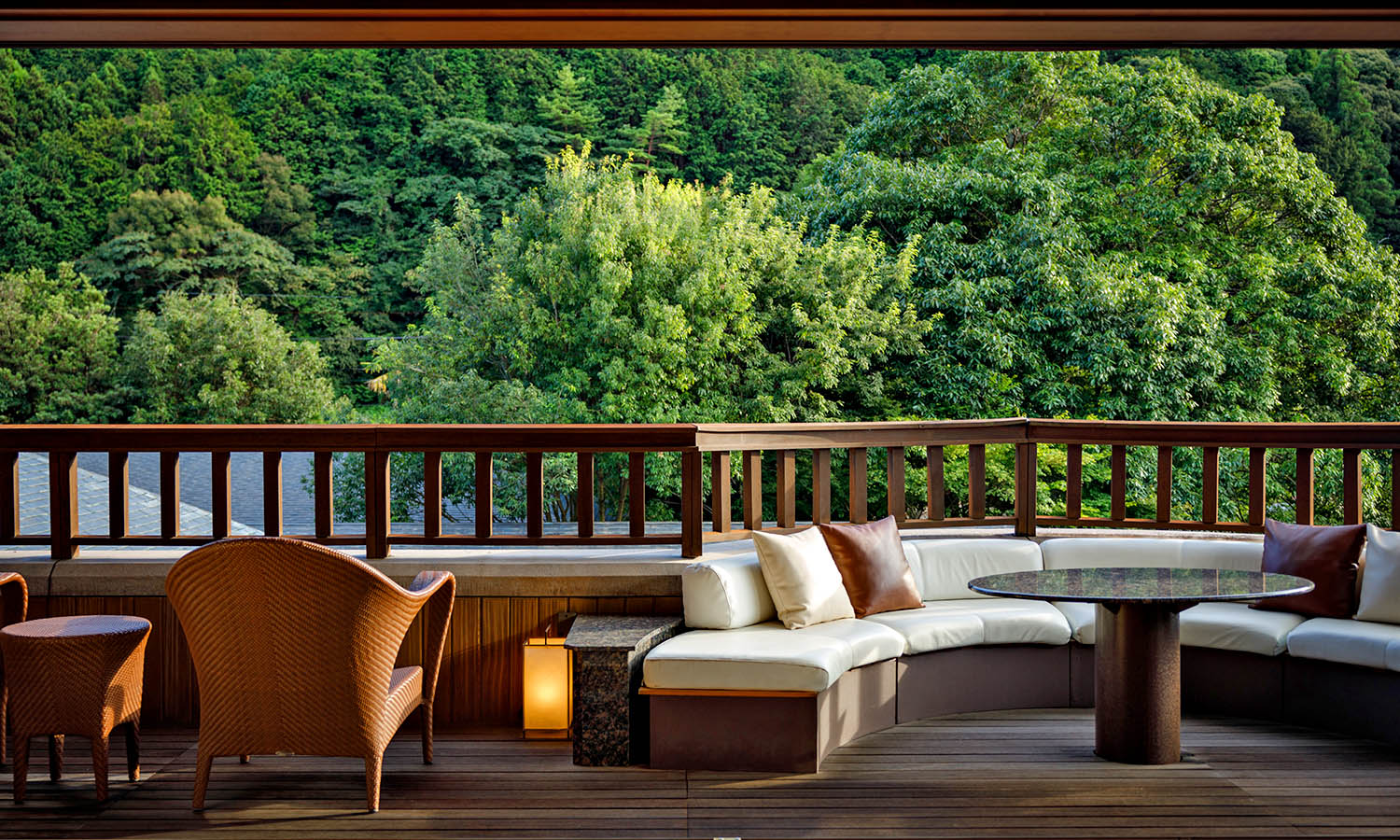

This exchange marks the first, but certainly not the last time, on this trip that I feel like Tom Cruise in The Last Samurai as he takes lessons from Katsumto—a man with more mystic wisdom in his little finger than in Cruise’s entire (albeit little) body.
It’s said that 600 years ago, the god—Sumiyoshi Daimyojin—blessed this village with the Onto hot spring to thank the local Buddhist monks for instructing in the way of the Buddha. The hot spring grew in fame, and for centuries locals and travellers alike have bathed in its soothing, spiritual waters.


Kazuhiro is a sixth generation Nagato Yumoto resident. So he knows a thing or two about the healing powers of this water.
“Rest up,” he says. “And I will see you for dinner. Six o’clock. Plenty of time to feel better and tonight we eat kaiseki!”
I slip into my private-balcony onsen, and with the water at a strict 39 degrees Celsius, things happen quickly. The bath is square and deep; crystal-clear hot spring water pouring from an ornate miniature Japanese waterfall. The result: absolute bliss.
I don’t know if it is the supernatural hot spring water, or the exhilaration of being in rural Japan for the first time, but after just 15 minutes, I’m feeling back to one hundred percent.
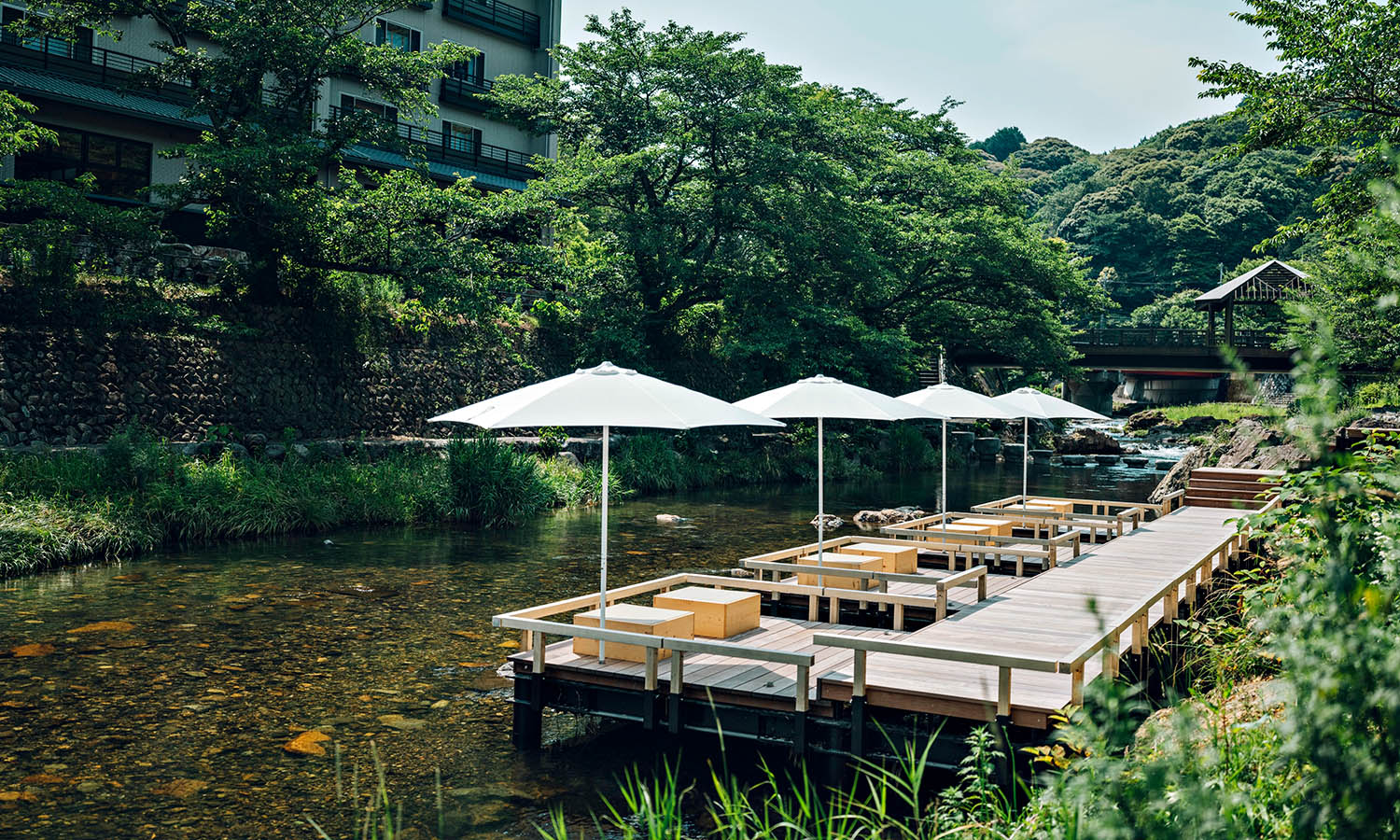

Refreshed—and now famished—I don my perfectly-pressed yukata (a kind of dress kimono and required dining attire when staying in a ryokan) and make my way to meet Kazuhiro. I’m led to my table, a private partition with window views to the surrounding pine trees.
The table is immaculately laid out and a smiling waitress bows and pours a local craft beer. She bows again as she leaves, and I feel obliged to bow back. I nod my head awkwardly, much to her amusement.
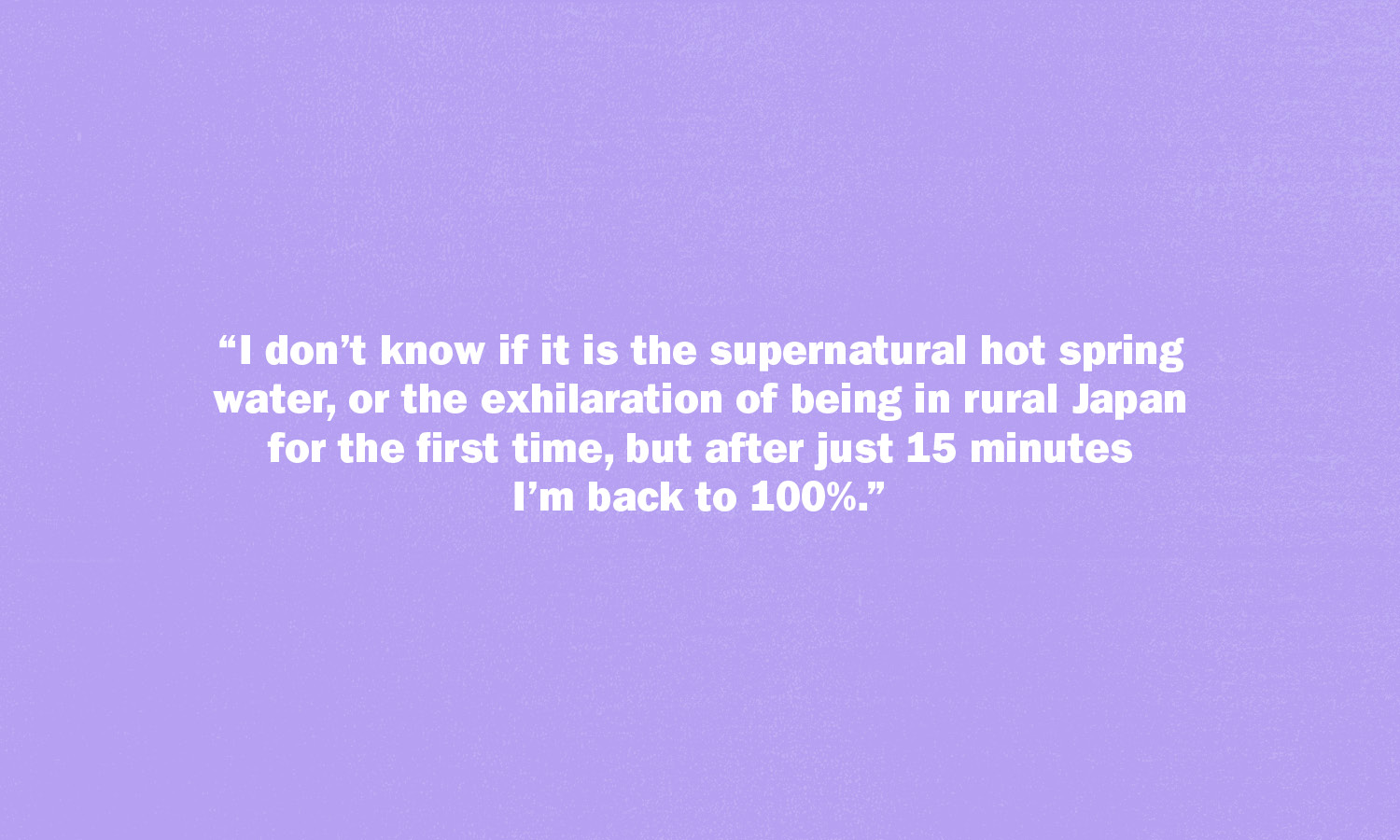

The Japanese are renowned for their attention to detail, food not excluded. But kaiseki dining is on another level again. The best way to describe this style is it’s an uber-fresh. Kazu (we’re into the sake and so we’re on a casual name basis) insists I first try dishes individually and then mix.
“Now you taste the real flavour,” he says.
There’s a broth-y miso-type soup with several miniature pickle dishes. A plate of soft sashimi fresh from the nearby Japan Sea is matched with a plate of Fugu sashimi, a fish more poisonous than cyanide and deadly if not prepared correctly.
“Only a few each year,” answers Kazu to the inevitable question.“But no one has ever died here… yet.”
Desserts are served and then promptly demolished, and after 10 courses I’m not bloated or nauseous; rather I feel perfectly fed.
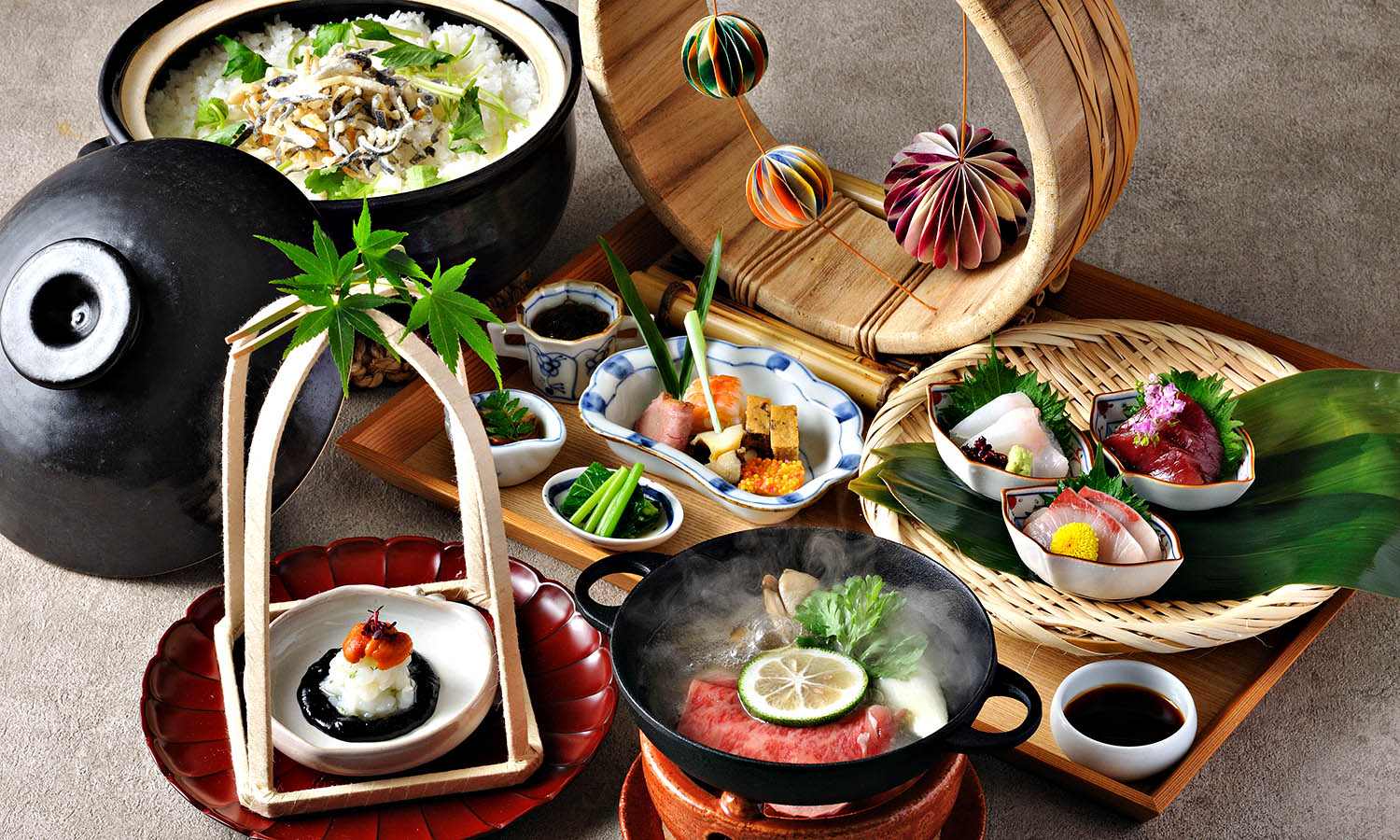

Nagato Yumoto itself is quaint and quiet, with the Otozure River splitting the town in half. There’s a sense of calm, as if the town itself has just bathed in the hot spring. Terraces are scattered along the riverside for people to sit and enjoy the fresh air.
Central to the town is the newly built Onto Onsen, an architecturally-designed structure where you can bath in the waters directly bubbling from the bedrock—just as people have done for the last 600 years.
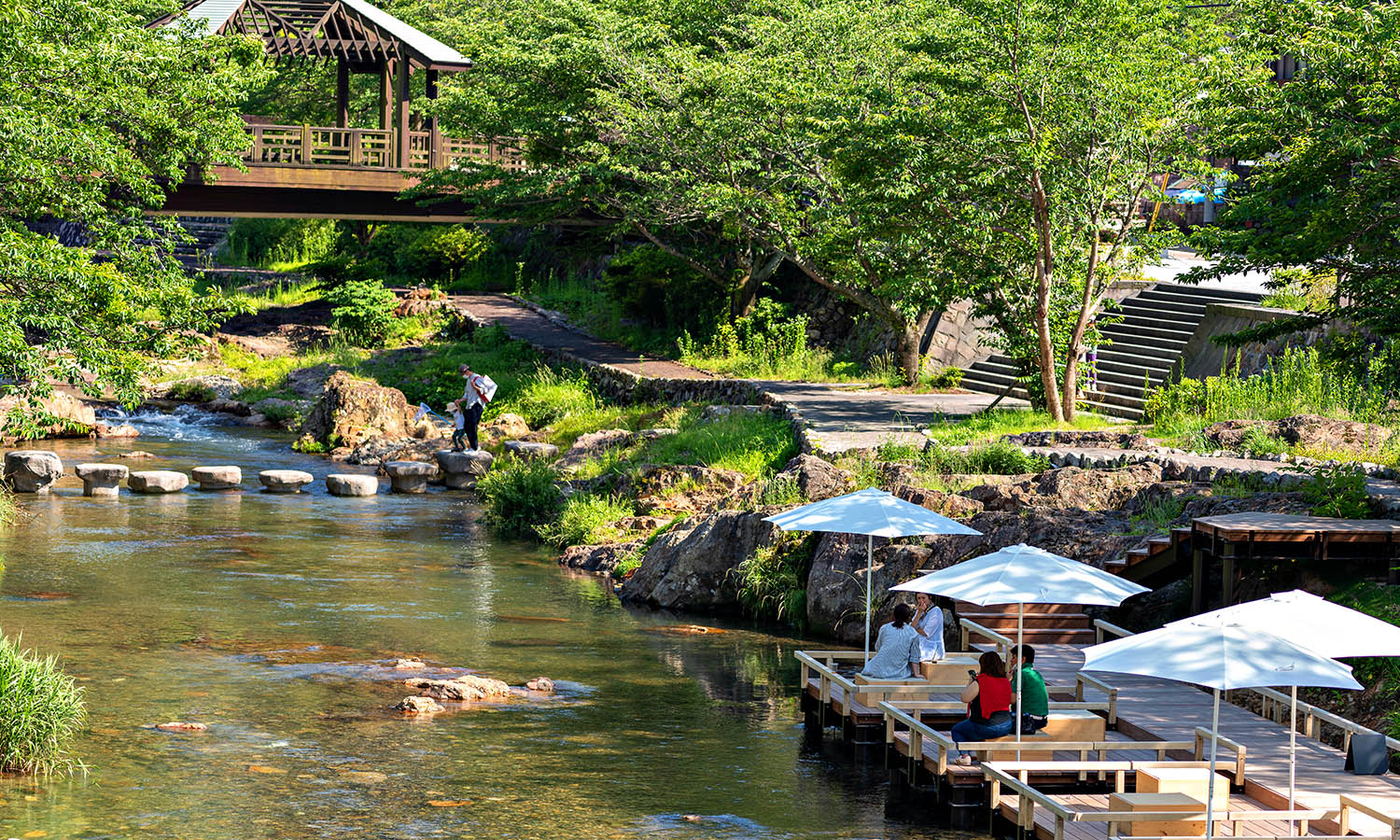

We meet Masahiro Sakakura, a sixteenth-generation sculptor (16!) and unassuming genius, whose family began crafting masterpieces in the region no less than 350 years ago. He shows us around his workshop and the 100-year-old Fukawa kiln, and as we sip bitter green tea from one of his great grandfather’s teacups I ask what it would be worth. Answer: about US$12,000. I carefully put the cup down.


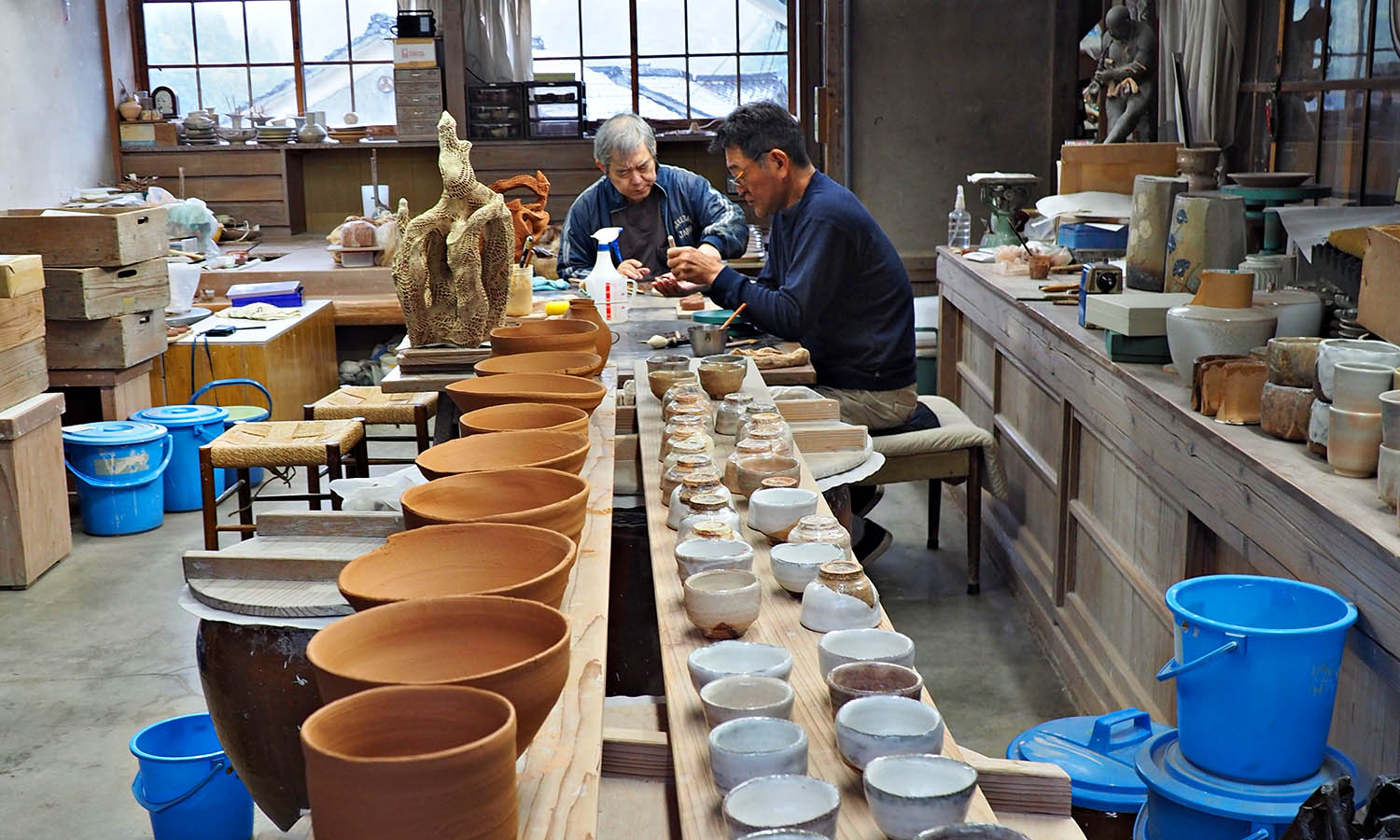

Rural Japan is time stood still, but younger generations are beginning to add their own touches, influenced by the outside world. The best example of this is Ohmine Shuzou, a sake brewery a short drive from town. Here, the ancient method of sake brewing has been restored (the original brewery was unused for over fifty years) with a modern twist. The building is an architectural feast for the senses, with clean design and a modern café and tasting room.
We order a tasting plate of four limited edition sakes all of which are smooth and subtle. Which makes sense considering they’ve been brewed with so called ‘Water from the Gods’. I’m thankful I’m not driving.
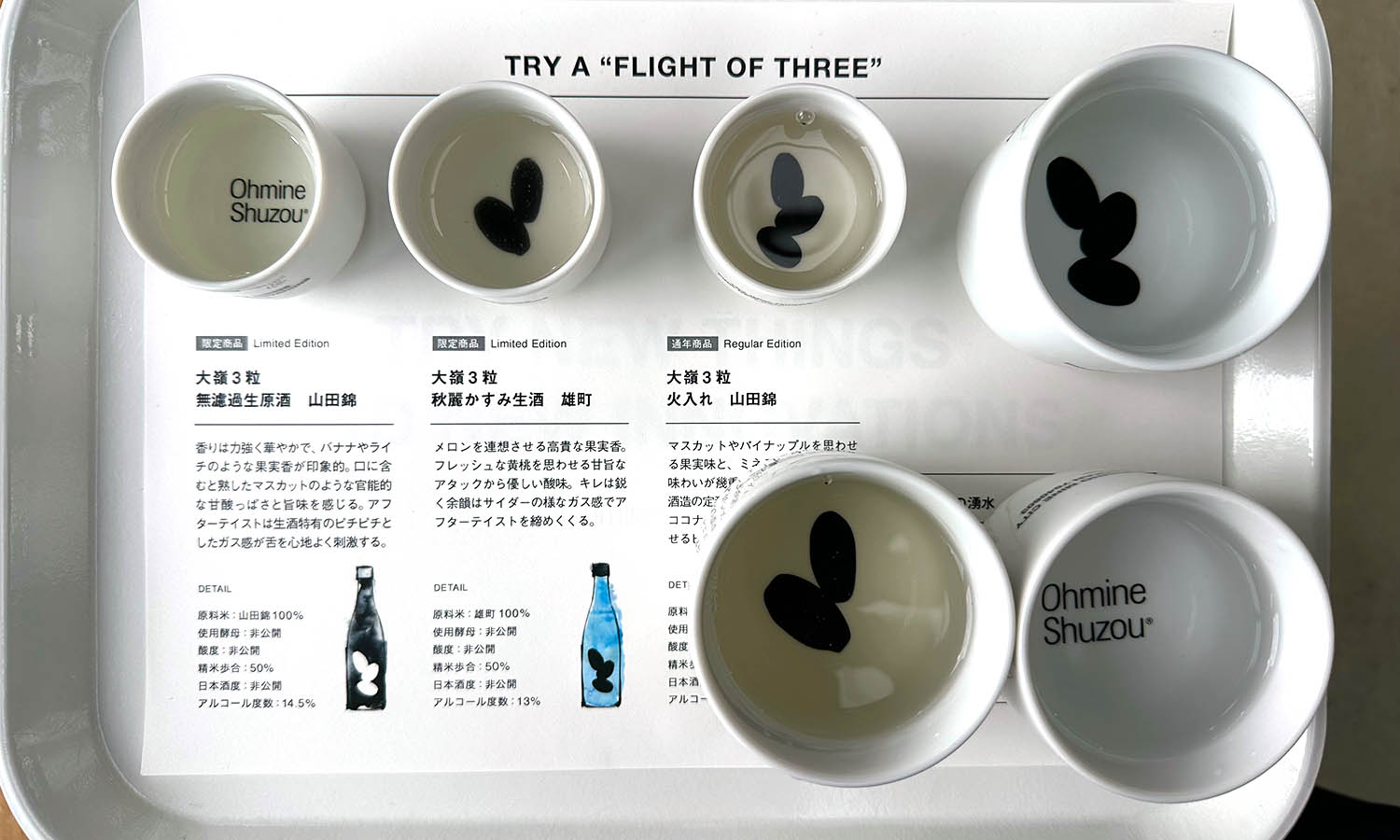

On our last afternoon Kazu takes me to his favourite yakitori bar, Komori in Nagato town.
It’s a small hole-in-the-wall with the traditional noren (vertical cloth slits) entry. Kazu is a popular figure here. He tells me his perfect day off is eating yakitori and enjoying the beers. Normally from 4pm until closing.
“What time is that?” I ask.
He smiles broadly. “About 9 o’clock.”
I get the feeling he does this often.
The bar Master and his wife hold court of conversation, and while beer flows to the ten or so patrons (at capacity) his wife tends to a small coal-fired barbecue, laying on sticks of chicken, pork and beef yakitori. Kazu tells me the chicken here is the best in Japan and I find it hard to argue.
I promised myself I’d try everything on this trip and so when Kazu orders a plate of raw liver, I again take his word for it.
For the first time since I arrived I lose my smile.
Thankfully the Master is on hand with a beer to wash the taste away.
Click play to WATCH
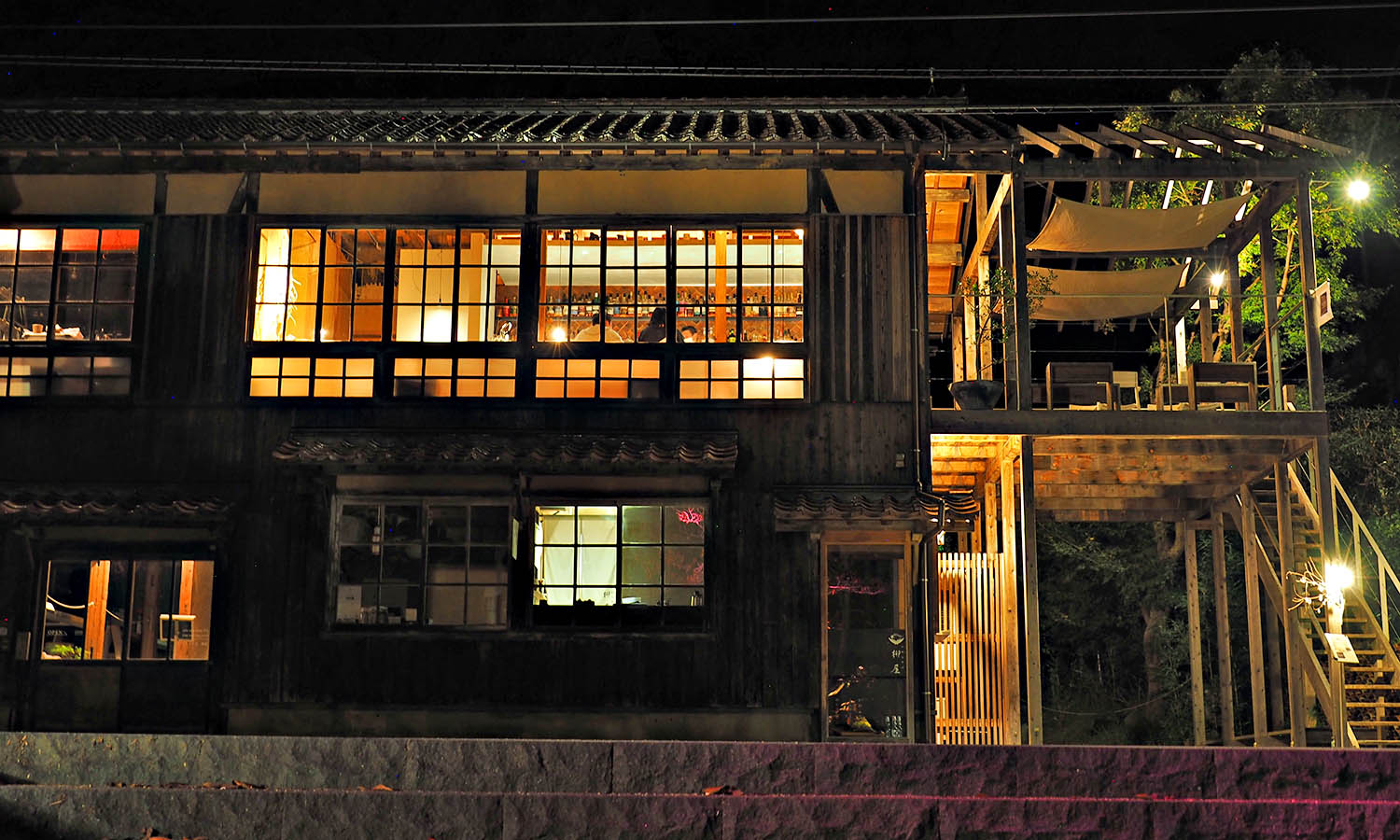

We finish the evening at The Bar Nagato, an upstairs speakeasy looking over the Otozure river. Presiding over proceedings is Daisuke Kuroda, a mater barman with over 30 years of experience. He’s dressed in a white jacket and black tie, and takes his time with every minute detail, concocting a martini so delicious, one is not nearly enough.
“You’ll be having an onsen in the morning I think,” says Kazu.
And he was right.


People are staring, cheese fondue is flying and there’s a small dog sitting in the passenger seat.
It’s my first night in Switzerland and I’m seeing Zurich’s historic Altstadt (Old Town) in a rather unconventional manner—from the back seat of an electric tuk tuk that’s serving up fondue by the caquelon (pot).
Click play to WATCH
At first I was sceptical. Hot cheese and cobblestones sounds more like a recipe for second-degree burns than a good Euro night out. But once I master the art of skewering small bites of bread while bouncing down a 14th century stone alley, I come to appreciate the fresh breeze that’s cooling my stick of molten cheese.
Our etuktuk driver, who navigates Zurich’s Augustinergasse like Keanu à la Speed, lets me in on the Swiss fondue secret: dip your bread in white wine before dipping it in cheese. It’s a culinary revelation; I think I might have found heaven.
Click play to WATCH
It’s not even my first brush with the afterlife today. This morning we spent an idyllic Sunday cruising the city on e-bikes (which you can rent from one of many docking stations in the city). The sun was out, batteries fully charged, bellies full of pretzels.
Then I put the bike in Turbo Mode, shouted “let’s go Turbo Mode!” and proceeded to stack it in a Zurich gutter. My life, and all the pretzels I’m still yet to eat, flashing before my eyes.
Click play to WATCH
Turbo Mode is a pretty accurate description of the next six days, when I’ll be going from city to summit to city to summit (that’s right, two cities and two summits) in an effort to identify what makes Switzerland so… well, Swiss. Besides economic prosperity and internationally renowned chocolate—what’s at the heart of this landlocked country? And what will I find at the top of its mountains?
Hit play!
I can’t see my hand in front of my face. The menu is in braille. And with my loss of sight, I’ve also lost my appetite—an interesting neural connection. I’m at Blindekuh, the world’s first restaurant in the dark. Having been led (literally single file, hands on shoulders) into the darkened dining hall, the blackness is overwhelming. Borderline claustrophobic.
The experience is designed to offer sighted people an insight into the world of those who cannot see. All our waitstaff are sight-challenged, the menu is a chef’s surprise and I’ve already surprised myself by starting to eat with my hands. Wielding a knife is proving both difficult and dangerous. Flavour identification has also gone to hell—is this a bread dumpling or slice of veal? Who am I? Is there life on other planets? What happens if you type google into Google?


Search out the Bäckerei Vohdin in Old Town, a family-run bakery that’s been doling out cinnamon cookies and city-best pretzels since 1626.
Grab a city key from Zurich’s Town Hall these keys open up some of the city’s private, most historic laneways. You’ll feel like a VIP.
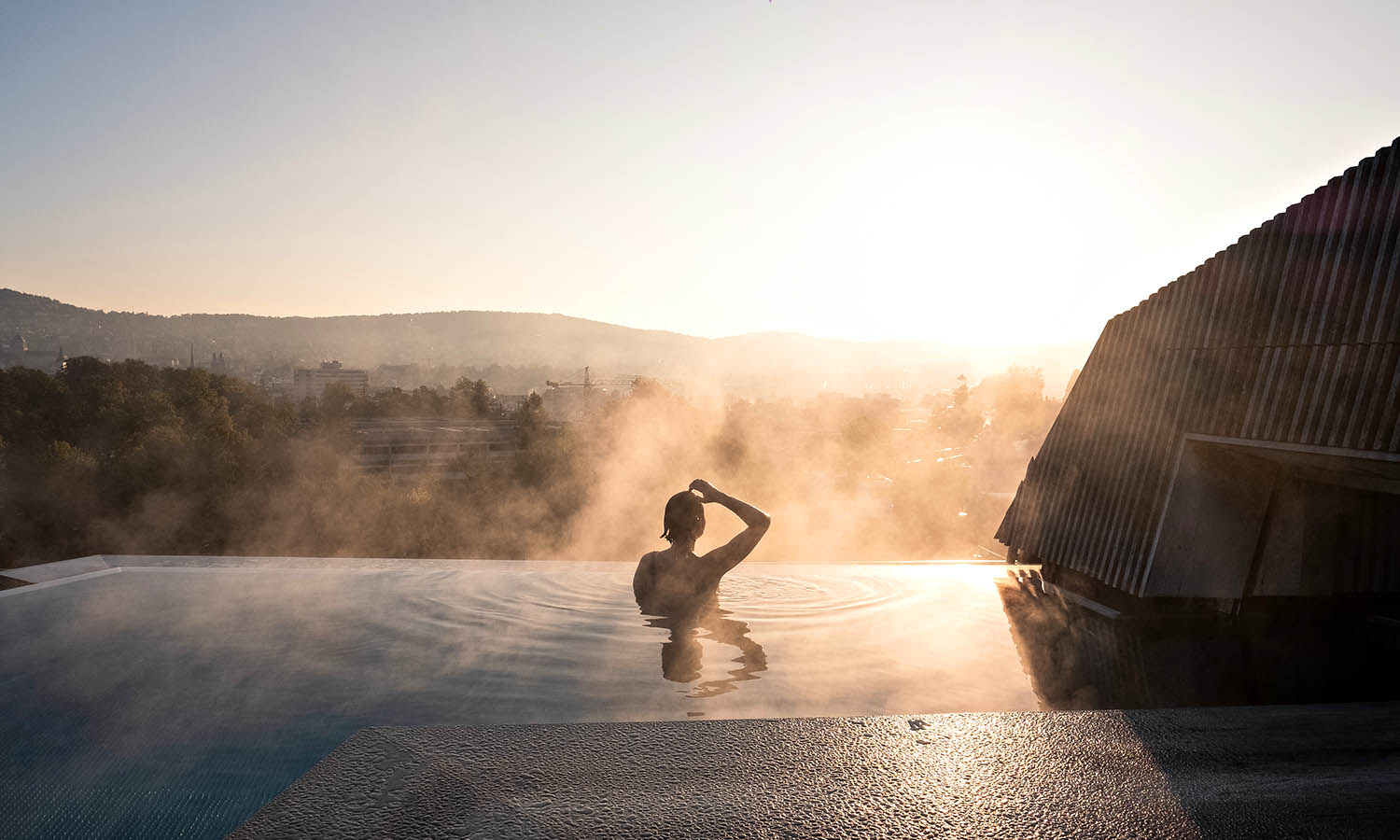

I’m soaking in a bath in a century-old vault that used to be a brewery. Earlier this morning I watched the sunrise above the Zurich cityscape from a thermal rooftop pool. In a few moments I’m going to move into the floral steam room to detox the floral gin highballs I downed last night.
The Hürlimannbad & Spa, located in the former site of the Hürlimann brewery, is both an ode to brewing and a take on Roman bathing rituals. Neither of which are surprising to me. The Swiss love beer, with records showing that brewing was taking place as early as 754 CE in St. Gallen. And they’ve also got a tonne of Roman artefacts floating about, as Zurich was once a Roman army stronghold. Frothies and forums, that should be Zurich’s historic motto.
Venture to Langstrasse, formerly the red light district and now prolific bar street. According to our guide “it’s the dirtiest you’ll get in Switzerland”. In the best kind of way.
Head to Industriequartier, a neighbourhood in Zurich’s west, for super trendy nightlife. We saw Malian jazz legend Boubacar Traoré at Moods. And it was a big mood.
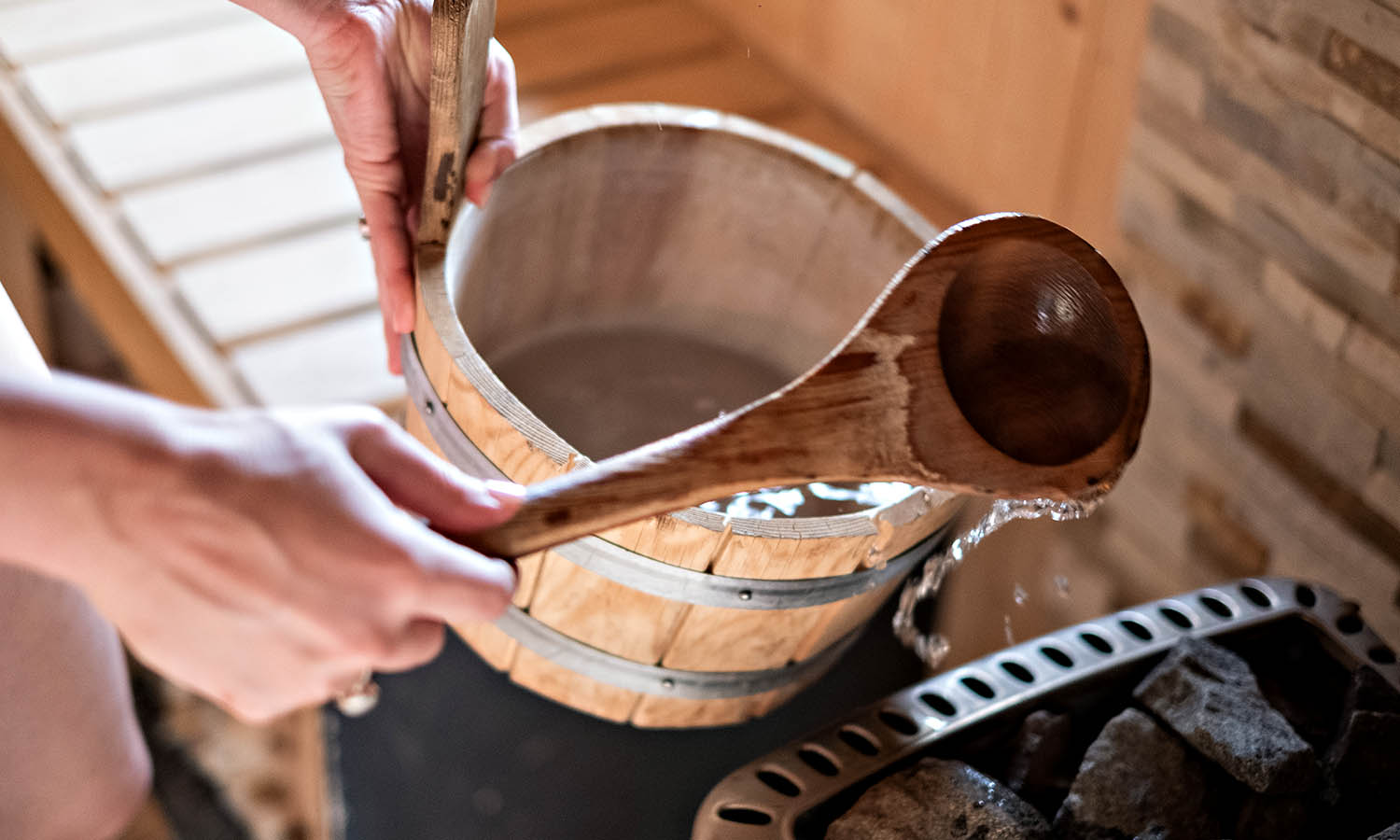

Click play to WATCH
Lake Lucerne is 114 square kilometres of cobalt blue and I’m kayaking a fraction of it with Kanuwelt Buochs en route to a lakeside sauna. My paddles glide through the placid water; the surrounding mountains are hazy in the morning light; the tinkling of cowbells float in on valley winds.
We caught two trains and a bus to get to evergreen Buochs and if I learned anything about the Swiss today it’s that their public transport is terrifyingly punctual.
With the traditional sauna cranking at 70 degrees celsius, I alternate between sweating and (very cold) swimming. I feel like every man I’ve ever dated who has told me about Wim Hof would be proud right now. I also feel like my Swiss grandparents (if I had any) would be proud of me too. This is how you stay healthy in Switzerland, apparently.
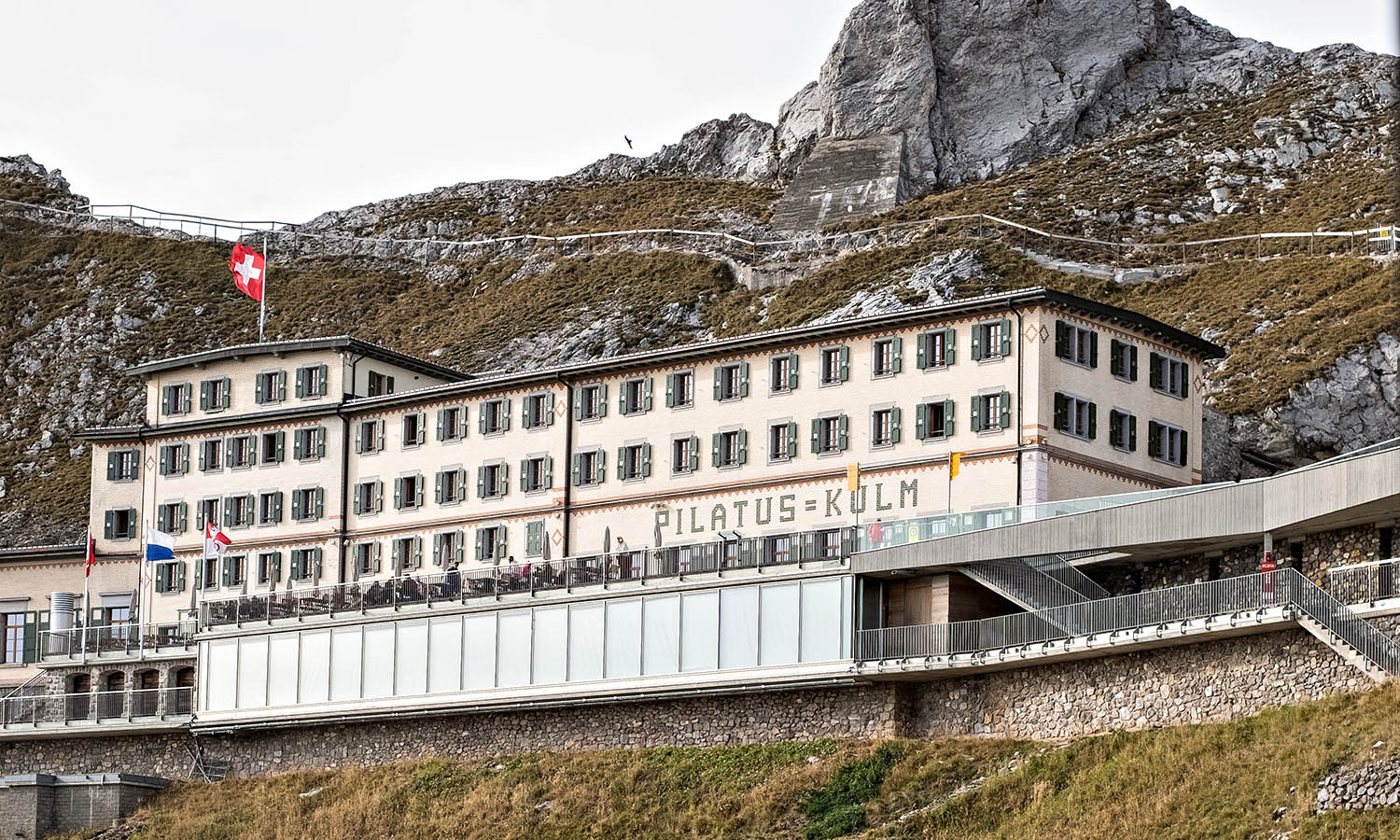

The world’s steepest cogwheel railway is, as you might expect, really freaking steep. I try not to think too hard about the Swiss engineering required to drag this giant red caterpillar car up a giant alpine mountain. But the panoramic views are out-of-this-world, and the hotel—Pilatus Kulm—is straight out of a Wes Anderson movie.
Mount Pilatus stands 2,132 metres above sea level and proudly overlooks central Lucerne. In the Middle Ages, people believed dragons with super healing powers lived in the mountain’s craggy crevices. I see no evidence of dragons, but I do watch a sunrise so beautiful it has me believing in magic.
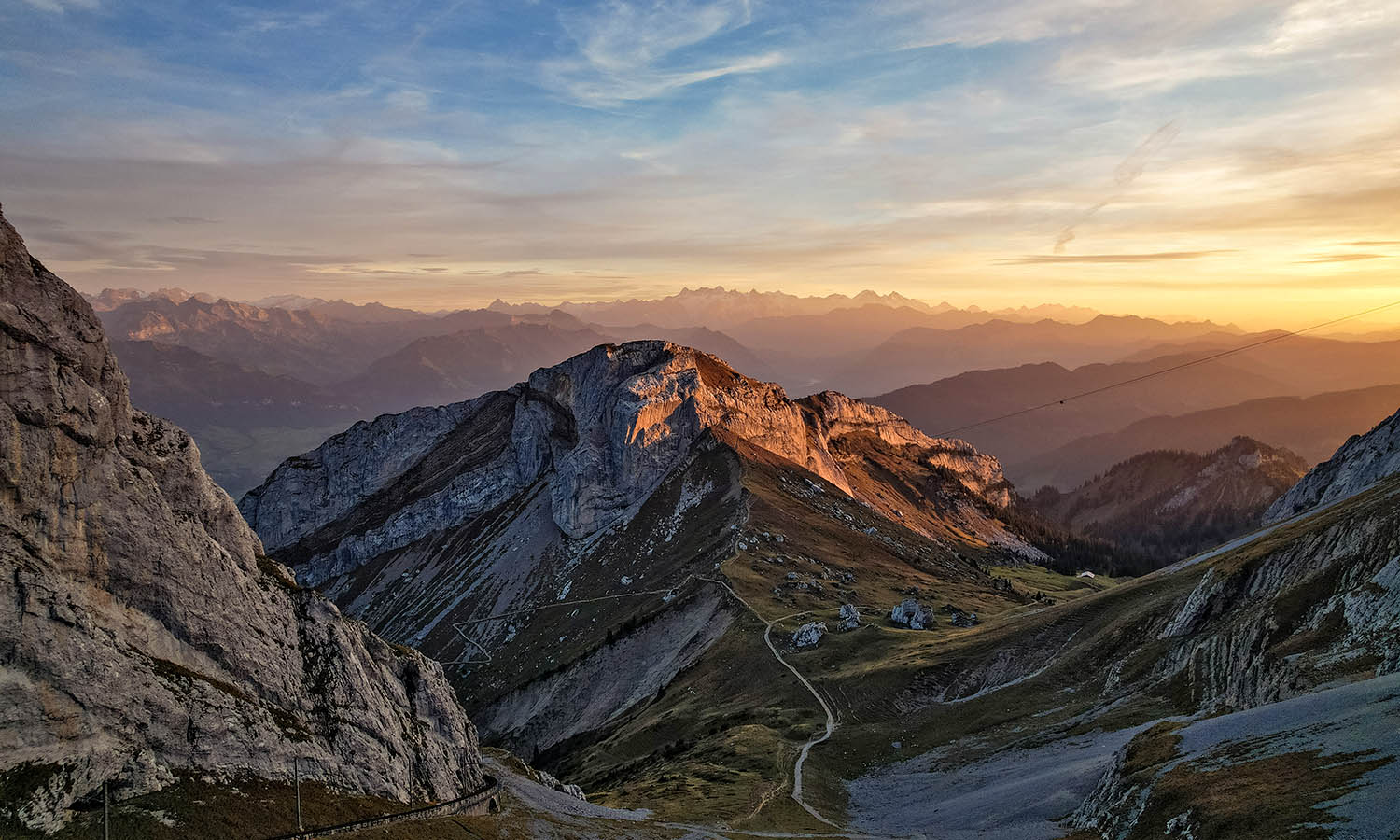

Dragons, angels, castles on hills. Lucerne, also known as the ‘City of Lights’, is a fairytale—and I’ll fight anyone who says otherwise. This is where mythical Switzerland comes to play. As the story goes, an angel landed on a hill just outside of the valley and showed the first arriving settlers where to build a chapel in honour of St. Nicholas (note: not Santa Claus), the patron saint of fishermen, sailors, archers, repentant thieves, brewers AND pawnbrokers.
Angel or no angel, I eat the best sausages of my life, cry at a statue of a dying lion (in memory of the French Revolution), walk the Carpe Diem bridge and am told in no uncertain terms by a chocolatier that I have a “very educated palate”. How do you say “I love Lucerne” in Swiss German?


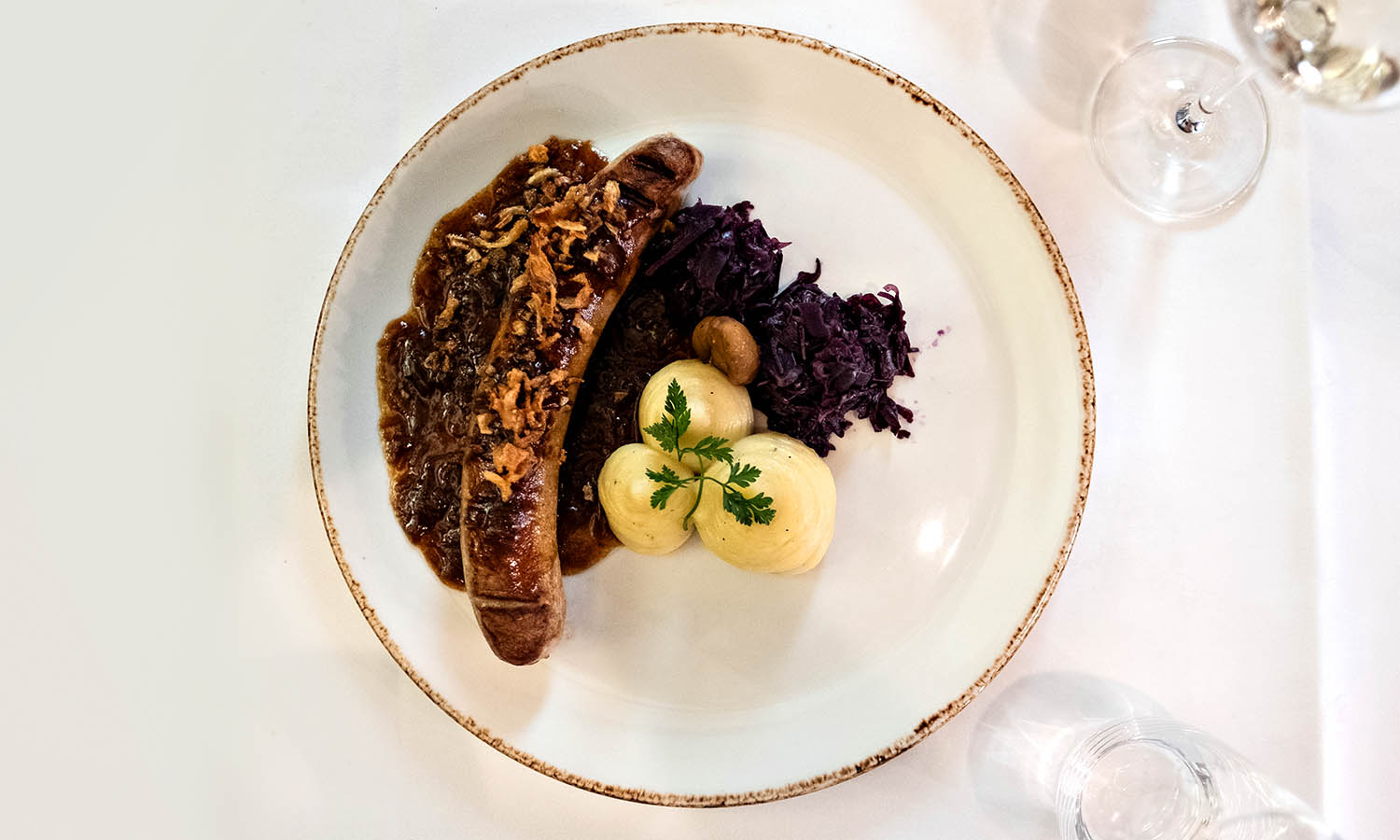

Try your own hand at a bespoke chocolate tasting at Max Chocolatier. As they say “trying single origin will turn you into a chocolate snob”.
For a bonafide slice of Swiss history, stay at Hotel Schlüssel. This boutique hotel has been welcoming guests since 1545, and is a picture-perfect heritage site.


Cable cars and cog wheels and gondolas, oh my! We make moves to Engelberg—adorable ski town, picturesque valley, delightful train station—only to make further moves up the mountain to Titlis. At 3,238 metres above sea level, my Converse sneakers slip in the snow. That’s right, snow. I don’t regret much this trip, but I do regret my shoe choice today.
The TITLIS Cliff Walk is the highest suspension bridge in Europe, and I squint against the bright sun as I try to spot Germany. I squint again in the low light as we walk through a slippery glacial cavern. Then I cradle a hot coffee and squint at the epic view to the Uri Alps, and wonder what they’d look like in the winter.
Click play to WATCH
It’s at this moment I realise I’m not done with Switzerland. My seven day odyssey might be over, but I’ve only just scratched the Swiss surface.
Yes, the Swiss are perennially punctual people. Yes, their menus are overwhelmingly dairy heavy. Yes, the grass here is, quite literally, greener than Australia (where I call home). But I’ve also learned that Switzerland’s cities are laden with centuries of history, their mountains are sprinkled with magic, and their culture is warm and welcoming but forthright and fair.
It’s a place where you can eat pretzels made to a centuries-old recipe one day, and drink schnapps in the Alps the next.
In Switzerland, you really can have your fondue (in an electric tuk tuk), and eat it too.
get lost travelled as a guest of Switzerland Tourism.
At this time of year, everyone’s dreaming of a white Christmas.
If you can’t be in New York, Chicago, Berlin or London, the next best bit is dreaming about it.
We asked some of our contributors a pretty simple question:
At the age of 25 I’d actually never seen snowfall. When I eventually did, I easily matched the Nintendo 64 kid for excitement.
This took place in Ulaanbaatar, Mongolia — the world’s coldest capital city. I’d consumed quite a lot of vodka inside a dark, dingy bar with two Canadians, a Dane and a Norwegian, with no windows from our vantage point to the outside world. When we left the bar to find it snowing heavily, it felt like I had exited a tunnel and entered one of the Christmas snow globes which had enchanted me so much as a child. Although my cooler-climate friends couldn’t have given less of a fuck, drunk and seeing snowfall for the first time is an experience I’d recommend to anyone.
Coming from Long Island, NY snow is a force to be reckoned with. So anything I find more extreme than a good ol’ fashion February you’re-not-going-anywhere-buddy blizzard is a thrill. For me, I found that thrill in Iceland, which seems name appropriate. Snowmobiling Langjökull Glacier was not only an extreme rush, but a rare one, since, if we keep going the way we are, it will be dirt bikes soon.
Growing up, my family didn’t do ski holidays. We were more of a beach kind of gang. So I actually didn’t experience snow until I was 26 and on a shoot in Patagonia. We’d gotten up before sunrise to trek it out to this remote glacier, the sun was starting to rise and these flakes started falling on my face. It was honestly otherworldly. I think I cried.
I joined a sail boat in Tonga with the idea I would spend a month or two sailing the South Pacific, but a year later we found ourselves having sailed through the north west passage above Alaska, Canada and over to Greenland deep in the most remote parts of the Arctic. We got iced into a bay for a month, nearly got crushed by ice, had encounters with polar bears, lost a mate overboard in the ice briefly, hung out with Inuit hunters, sailed under the northern lights, faced epic storms and crossed some of the roughest oceans on the planet.
Click play to WATCH
I land in Reno and am immediately charmed by the old world glitz and glamour of the smallest big city in Nevada. I mean where else are you gonna see Journey, Denis Miller and Blake Shelton all in one place? But alas, I can’t stay. I have a date with Highway 50 – the loneliest road in America.
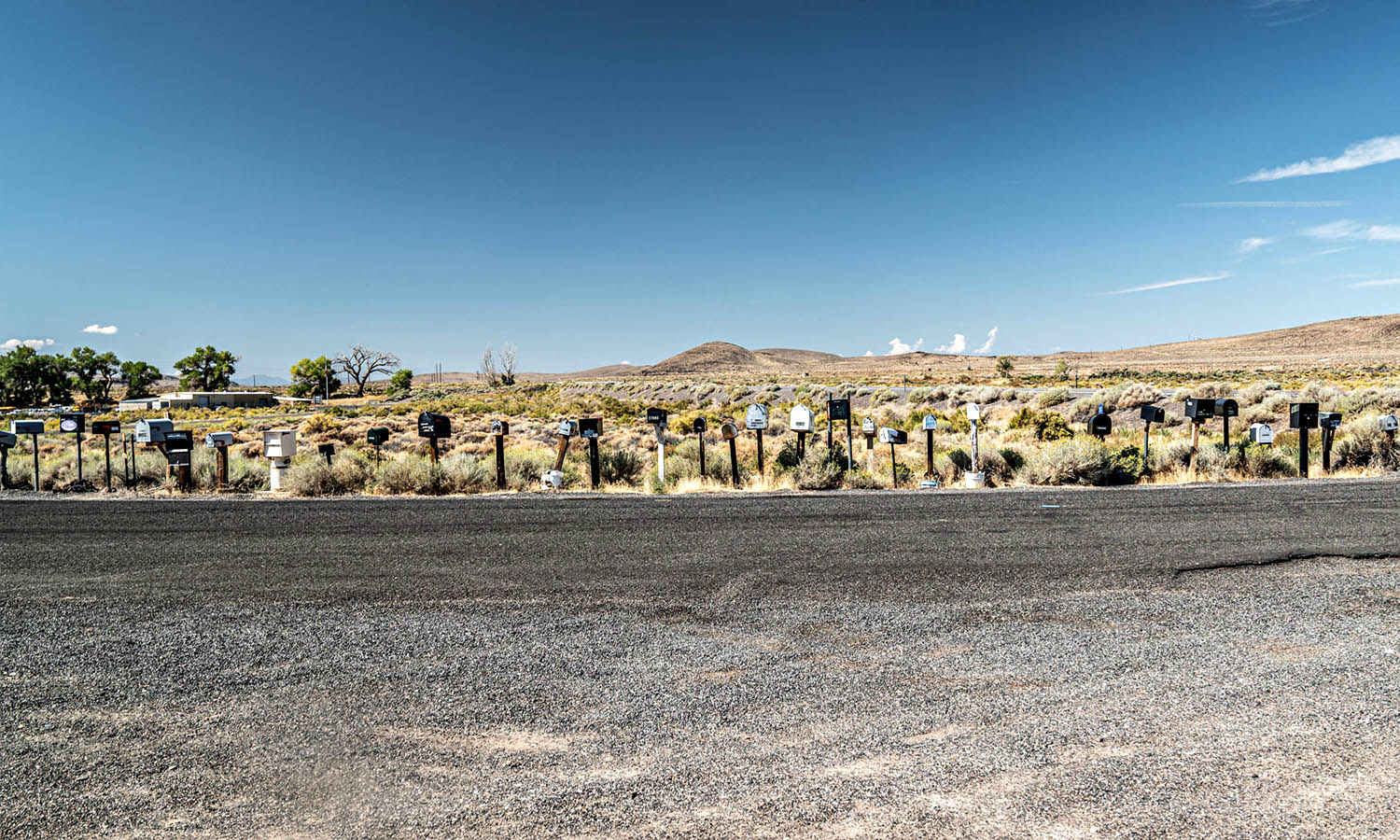

Two hours north, I find myself in Gerlach, the gateway to Burning Man. And home to all of the spare Burning Man bikes, apparently. Visiting during off-season actually affords you some pretty special scenic moments at Black Rock City’s seasonal home, from the dramatic desert-scape to the art that’s left behind as a more permanent fixture. The nature here is also super unique, with natural geysers that continually bubble and spurt out of rainbow-coloured volcanoes.
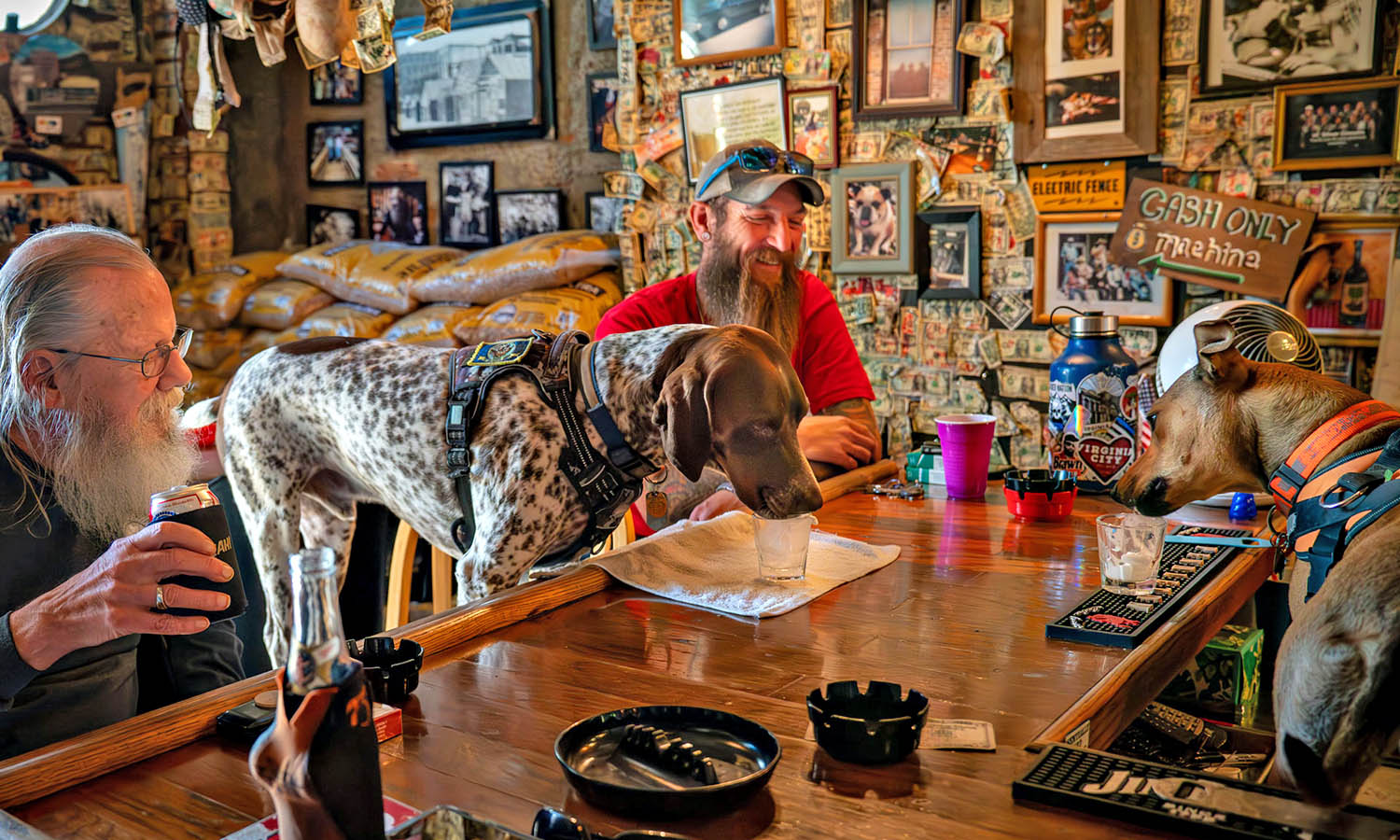

Happily Burn-ed out, I head down to Virginia City, which–no joke–is my new favourite Western town. After a few hours of driving, priority number one is a drink, and for that I literally stumble into bar gem, Silver Dollar. Voted best dive bar in the world, according to its signage anyway, this place has infinitely interesting decor and very, very good (very cheap) Bloody Mary’s. If that isn’t enough, the bar also serves dogs. Real dogs. Real dogs who drink shots of whipped cream like sailors and damn, it’s adorable.
Click play to WATCH
Hit PLAY, we dare ya
Properly sauced I tour the Washoe Haunted Saloon with a digital ghost detector which, frankly, looks like a garage remote. And yet despite it being broad daylight outside, this place is still creepy. Our ghost host shows us a picture of a spook she spotted last week and my detector goes off the charts every time I pass a doll. Maybe this really is a three-storey dungeon of demons.
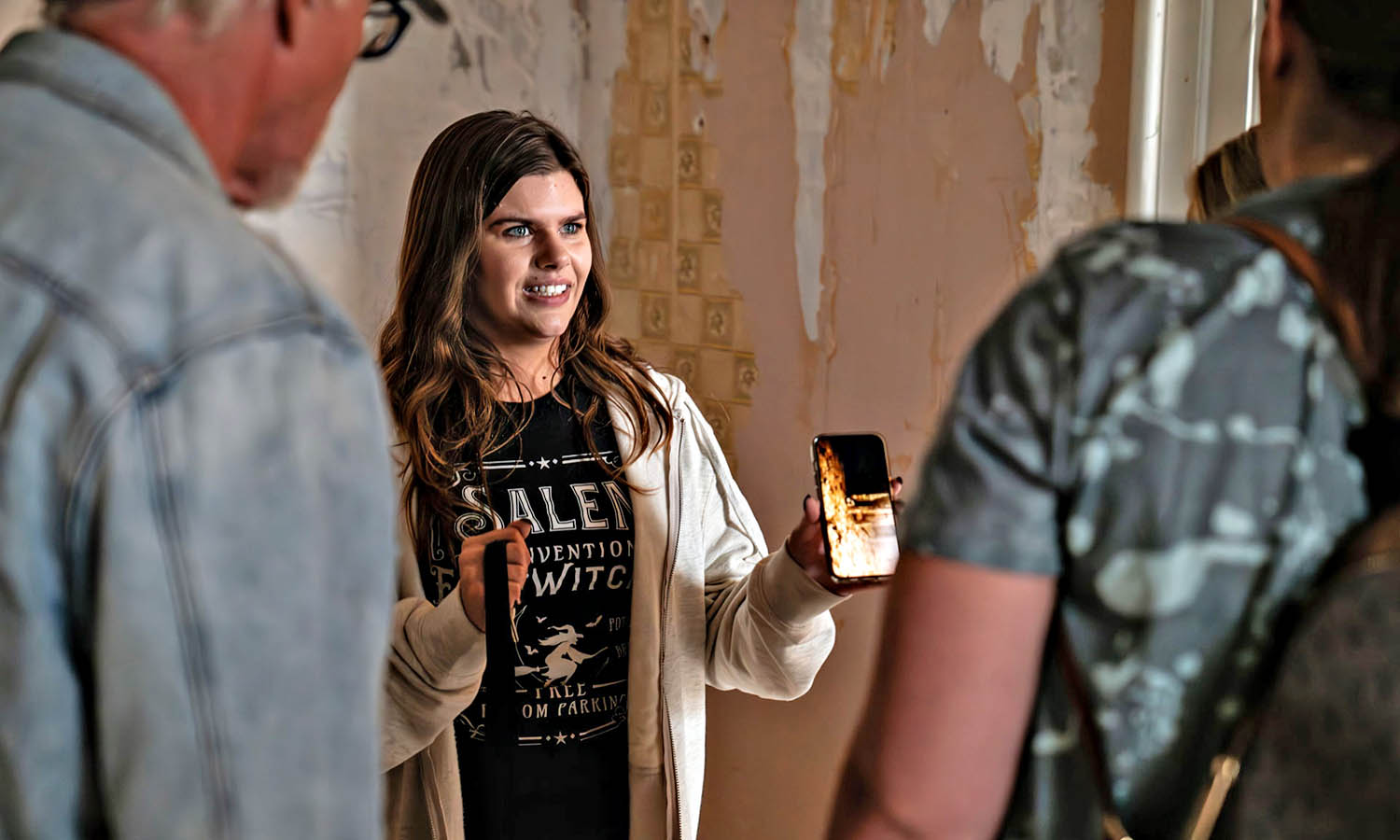

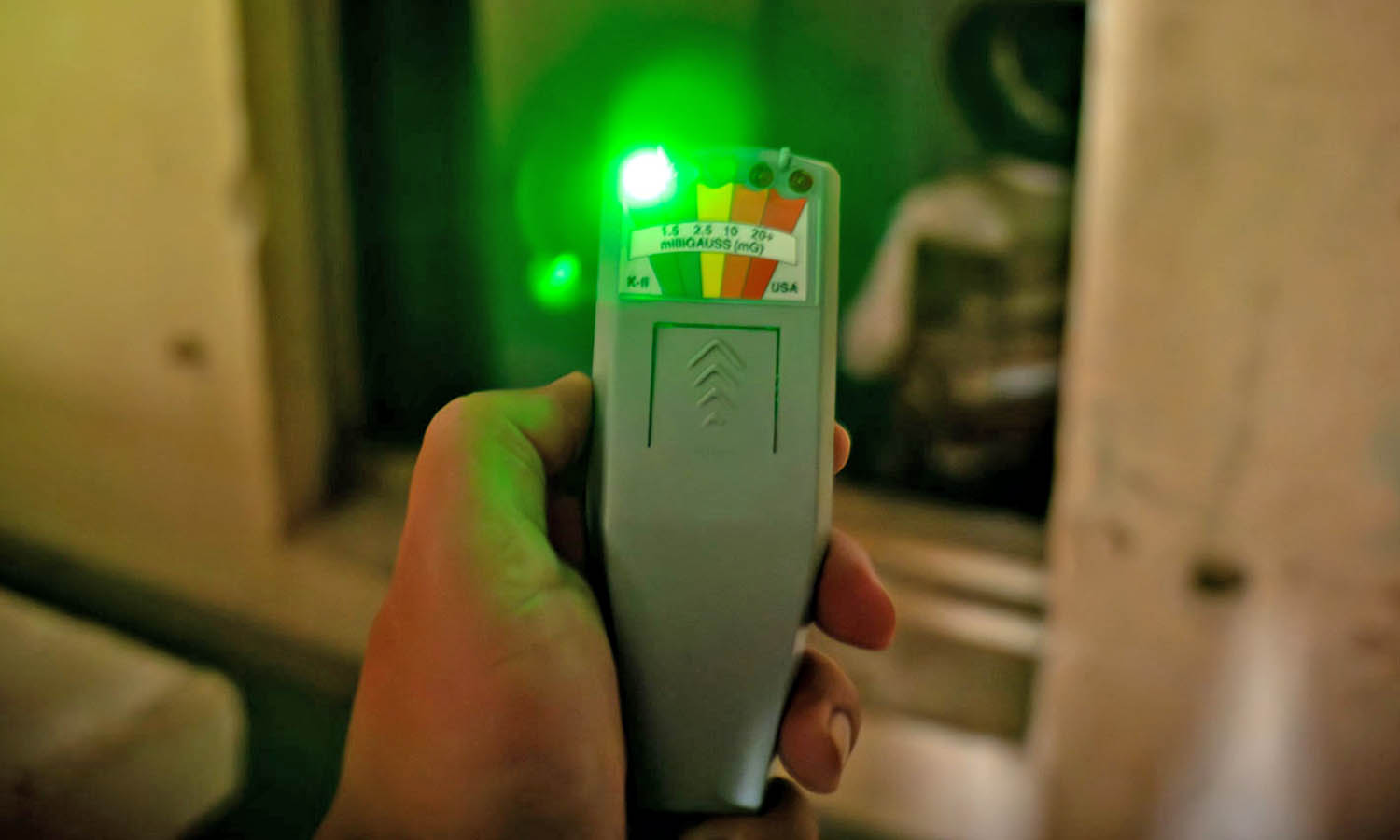

Pants properly soiled, it was time for more liquid courage. At a nearby bar, I grab a muddled Manhattan and pull up a perch to listen to some live country music. Then I gamble a little bit and meet a lovely lady who owns the World Record for knowing the most piano songs by heart. She favours a rowdy honky tonk tune.
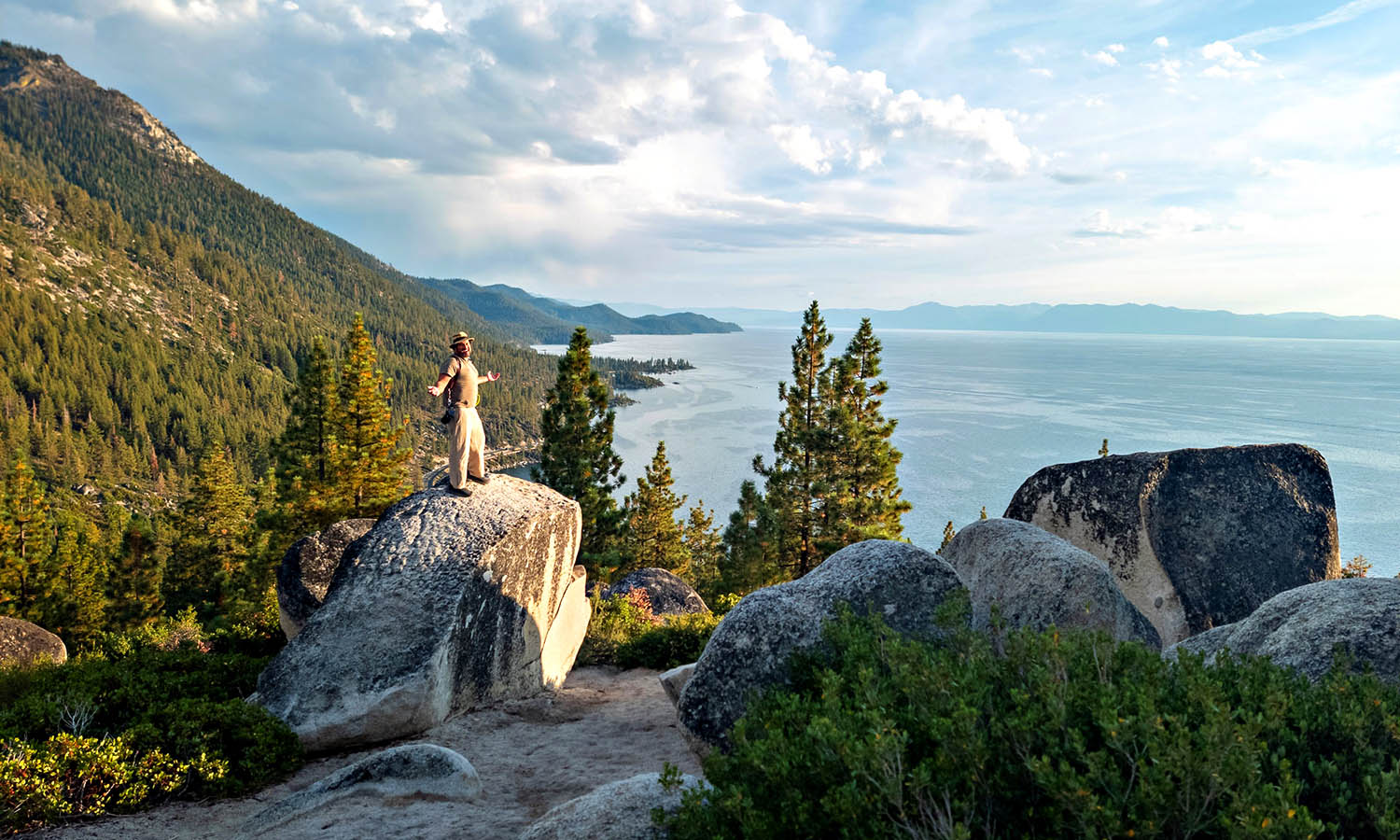

From V-city, glorious Lake Tahoe is a mere sneeze away. Here the air is cool and fresh and the green alpine roads make you feel like you are in a completely new state, if not planet. This ancient body of water is surprisingly one of the deepest in the world, and is by far one of the clearest I’ve ever seen.
Having been high (altitude-wise), I start to drive lower on Highway 50. This highway, the self proclaimed loneliest road in America, really is quite a desolate experience. But I find places like this more appealing than an insufferable mid-summer in Santorini; here the winding road is the attraction and the vast drive gives you a unique perspective on your place in the world.
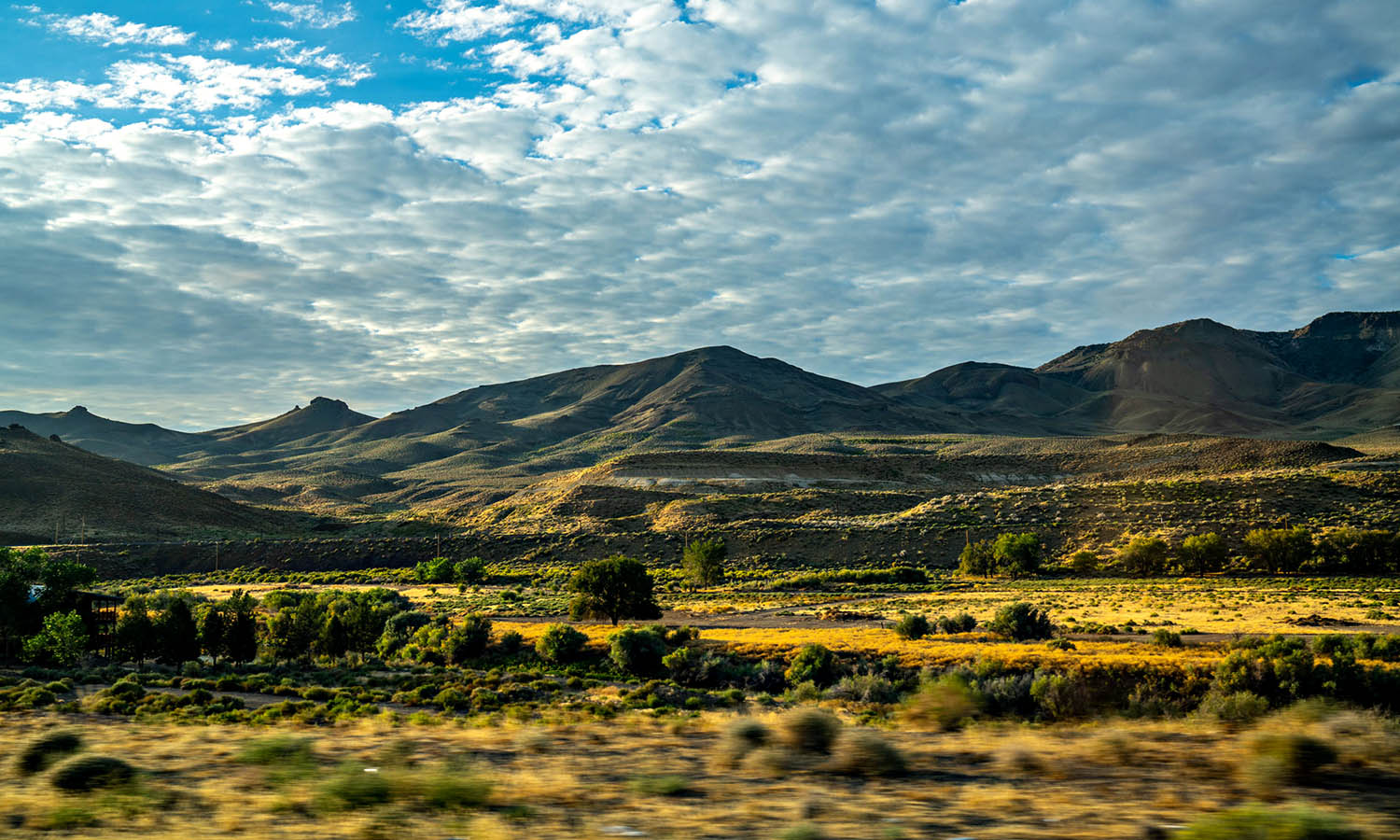

Just as the emptiness of my stomach starts to mimic the emptiness of the road, I cruise into the ‘town’ of Middlegate which consists of a soon-to-be-condemned roadhouse and not much else. This place is a dream for dreamers.The deal here is the “Middlegate Monster”; an eight pound burger. If you finish it without leaving the table, you get a t-shirt.
Challenge well and truly accepted.
I ready myself for a competition worthy of my time, but upon its arrival I know it’s going to be a battle to the death. Try my hardest I failed. Vanquished, I tuck tail, drop two Alka-Seltzer® from the general store and pray for indigestion salvation as I hit the road.
Click play to WATCH
Needing to walk off my caloric embarrassment, I stop at Cathedral Gorge State Park, which is, well, gorge-ous. This stunning geological wonder is just next to the highway, which means within minutes you’re wandering into a literal void. Your feet kicking up red dust clouds with each step.
From the depths of the gorge, I journey back to the top of the world and find myself in sleepy ol’ Baker. This alpine region is incredible, with lots of hiking trails and the amazing Lehman Caves if you fancy a rare look at a perfectly preserved, prehistoric limestone cavern over 500 million years in the making.
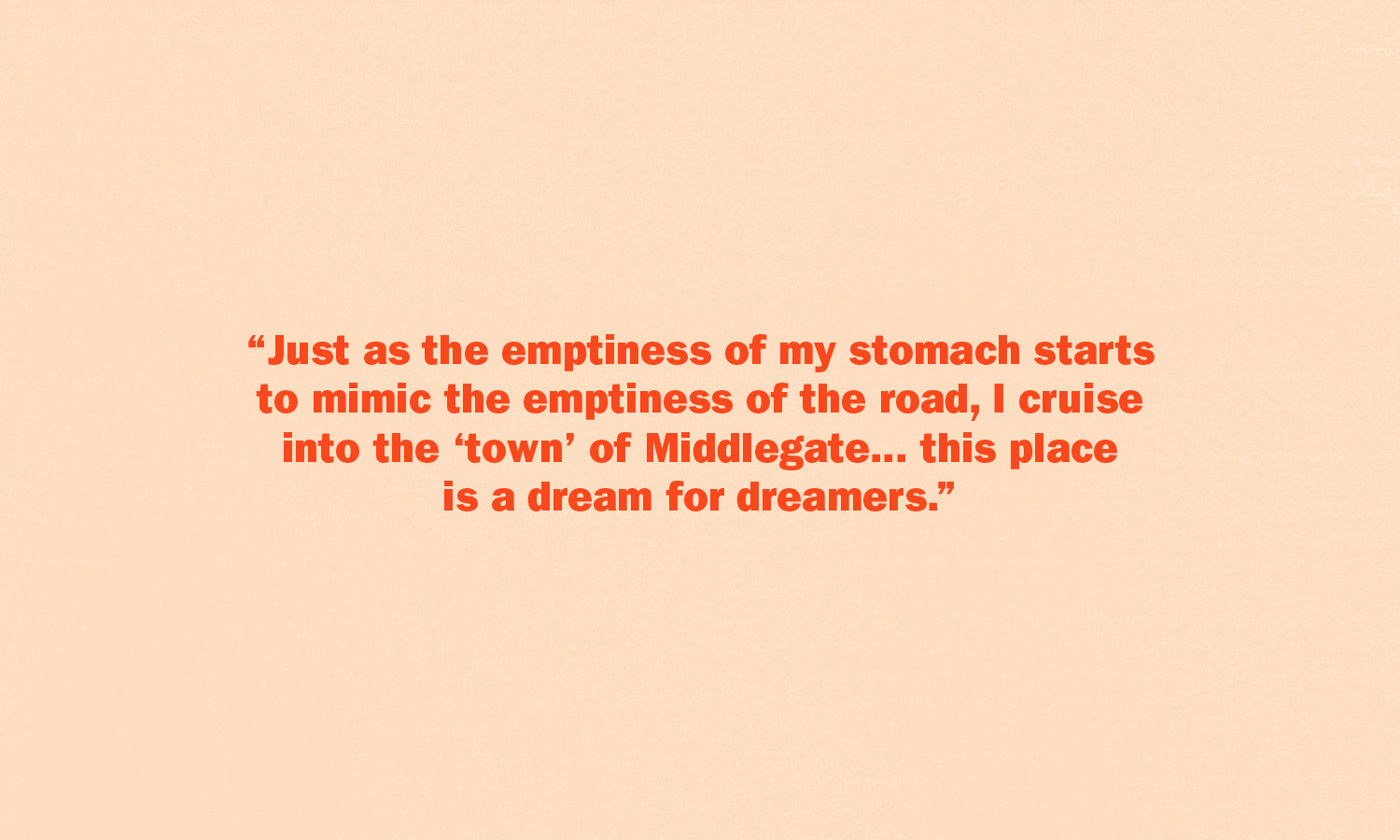

Above ground I check into the Stargazer Inn, located literally in the middle of nowhere, with a name that’s not just for the cute keychain. This is one of the darkest places on the planet, which, when night falls, treats you to an infinite star show–the Milky Way in the spotlight.
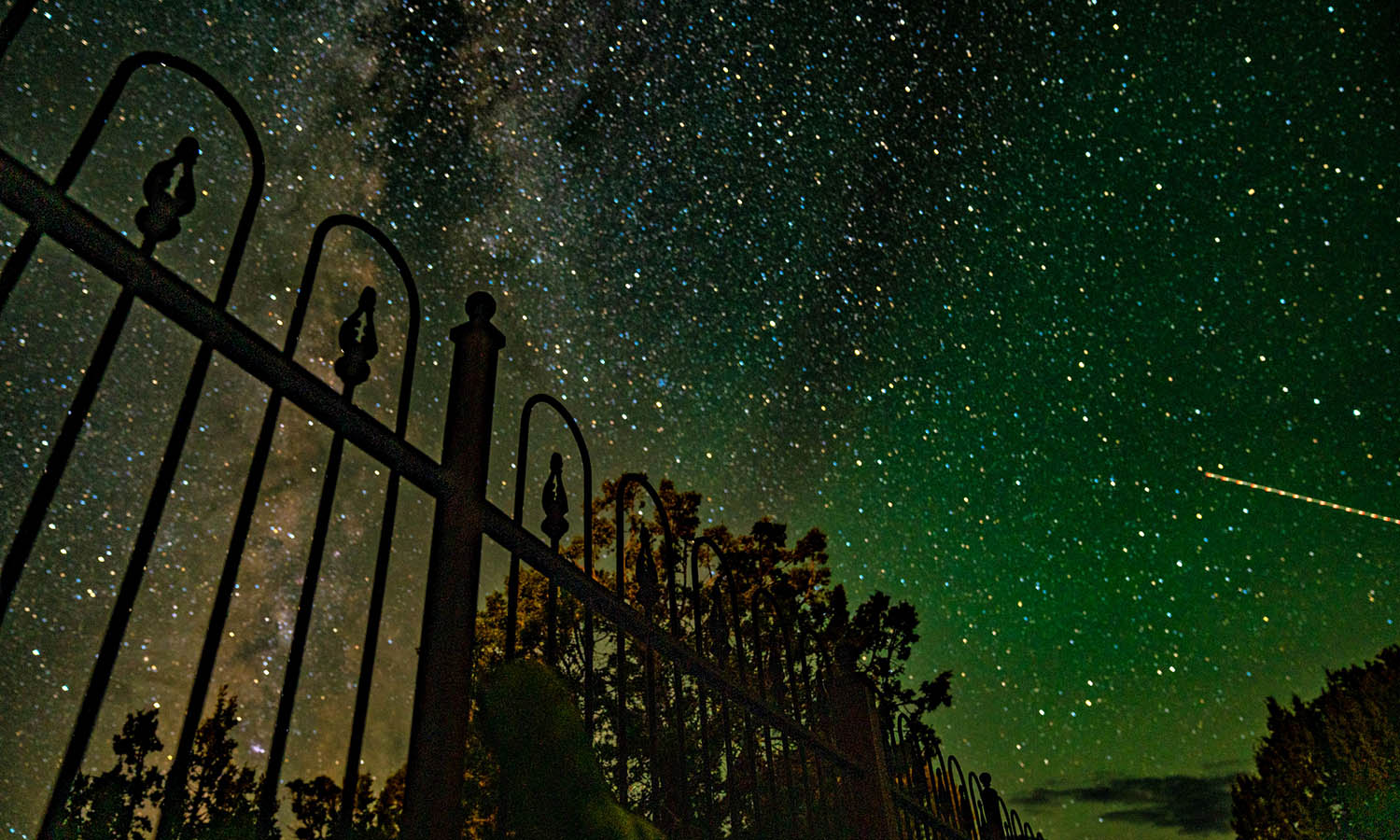

Having overdosed on nature and beauty I remedy myself with a night in good ol’ Vegas. Making a bee-line for ultra swanky speakeasy steakhouse Stanton Social I watch as they ceremonially light my dinner table side. You think it’s a gimmick until you put a morsel in your mouth; now I’m lighting all my food on fire before consuming.
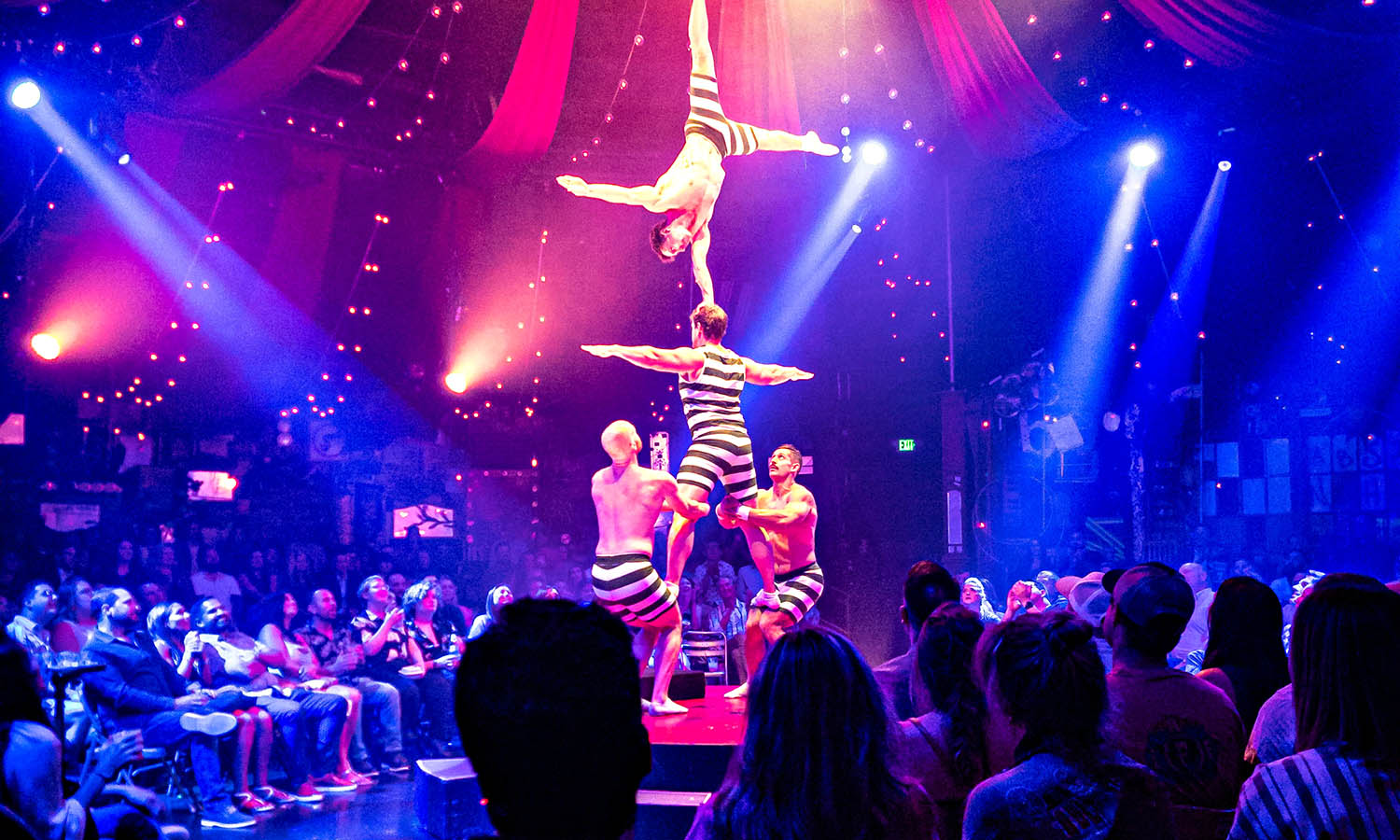

For the sweetest finish to an epic road trip I check out Absinthe, where there is no such thing as a bad seat. This incredibly funny, immersive, boozy spectacle happens in the round, leaving you slack jawed, flabbergasted, and quite frankly, in need of a vacation from an epic vacation as you sip on a drink and watch the circus performers put on quite the show.
Well fed with fire both in my belly and soul, I reflect on how far the loneliest road has taken me. I chuckle at the irony; all I’ve found on Highway 50 has been new friends, unique places, and meats that light the way to happiness.
But will this top and tail of pig fat and red pepper paste be enough to neutralise its nuclear stench? That’s yet to be determined.
Click PLAY to see some highlights


Just moments ago, I was told that hongeo-hoe is “the most challenging dish you can eat in Korea”. And while I wasn’t planning on eating raw fermented skate for dinner, now I can’t not eat raw fermented skate for dinner. Bourdain would be disappointed in me otherwise.
We’re in the middle of one of Jeonju’s famous makgeolli (rice wine) feasts, on a 10-day adventure with our mates at InsideAsia, where plates of seasonal dishes are stacked higher on the table with each kettle of wine that you order. It’s like the world’s best bottomless brunch—if brunch came with more sides of kimchi and less mimosas.
Click play to WATCH
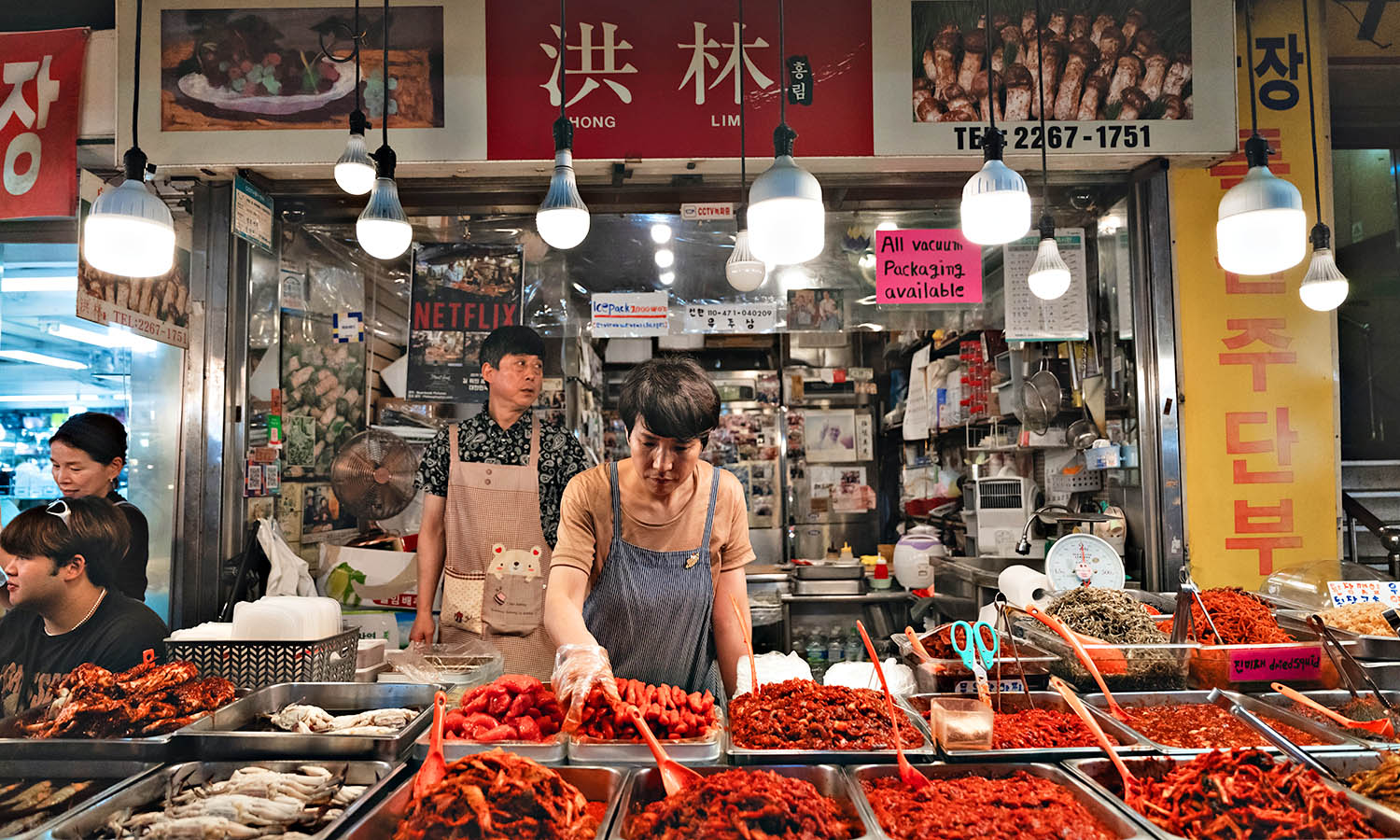

But back to the rotting fish at the end of my chopsticks.
Hongeo-hoe is interesting for several reasons—like, did you know skates don’t urinate like other animals? They actually excrete uric acid through their skin. Then as the flesh ferments, ammonia is produced which helps both preserve the fish and give it its powerful (note: nostril burning) aroma.
The dish can also be dated back to the 14th century, when Korean fishermen discovered skate was the only fish that could be transported and stored for long periods of time without salt.
In short, I’m about to eat a pungent slice of Korean history.
Hit PLAY! We dare ya…
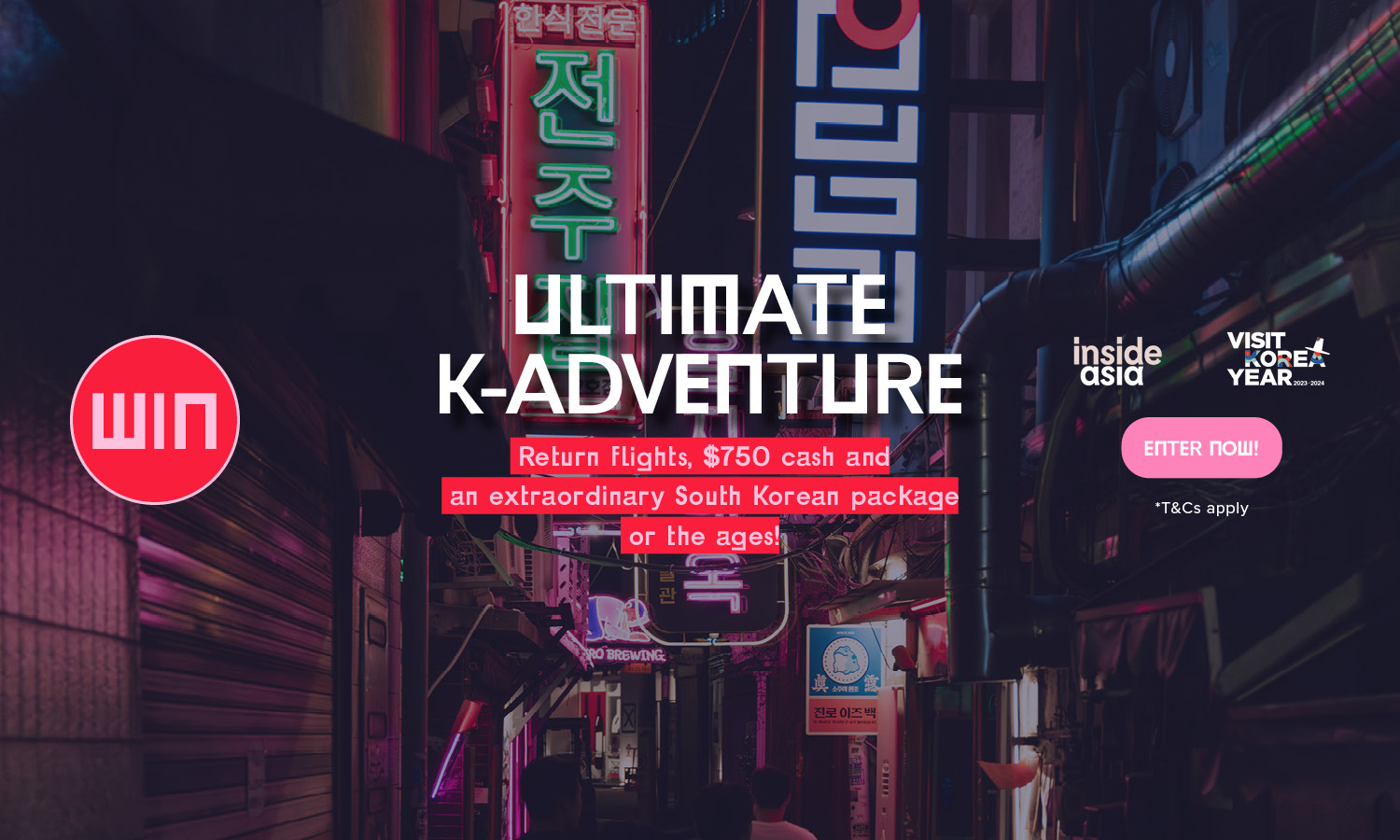

This is becoming somewhat of a recurring theme on this trip. Food culture here in South Korea is the ultimate example of tradition blending with modernity. In Seoul’s magical marketplaces you can find haejang-guk (hangover soup)—a local cure for too much soju—bubbling in pots beside stalls selling flame-torched marshmallow ice cream.
In Gangneung, a beautiful city on Korea’s east coast, we eat super traditional saltwater tofu then chase it with a barista coffee masterful enough to rival Melbourne’s elite. In Euljiro, or Hipjiro as the locals call it, we wander a maze of back alleys that hide everything from kitschy grandma-style kitchens to urban breweries; with a neon taco stand on one corner and a mapo-style Korean BBQ joint on the other.


This clash of K-culture—or should it just be Kulture?—doesn’t just apply to food. We spend our first morning exploring Changdeokgung Palace, a UNESCO World Heritage site built by the kings of the Josean Dynasty. Translating to ‘the place of prospering virtue,’ this palace and garden was mainly used by the royals as their chill out residence. On the grounds we walk through a gate of eternal youth (I swear my crows feet disappeared), wander beneath colourful terraced roofs guarded by mythical creatures, sit by a verdant lotus pond and learn all about Confucianism.
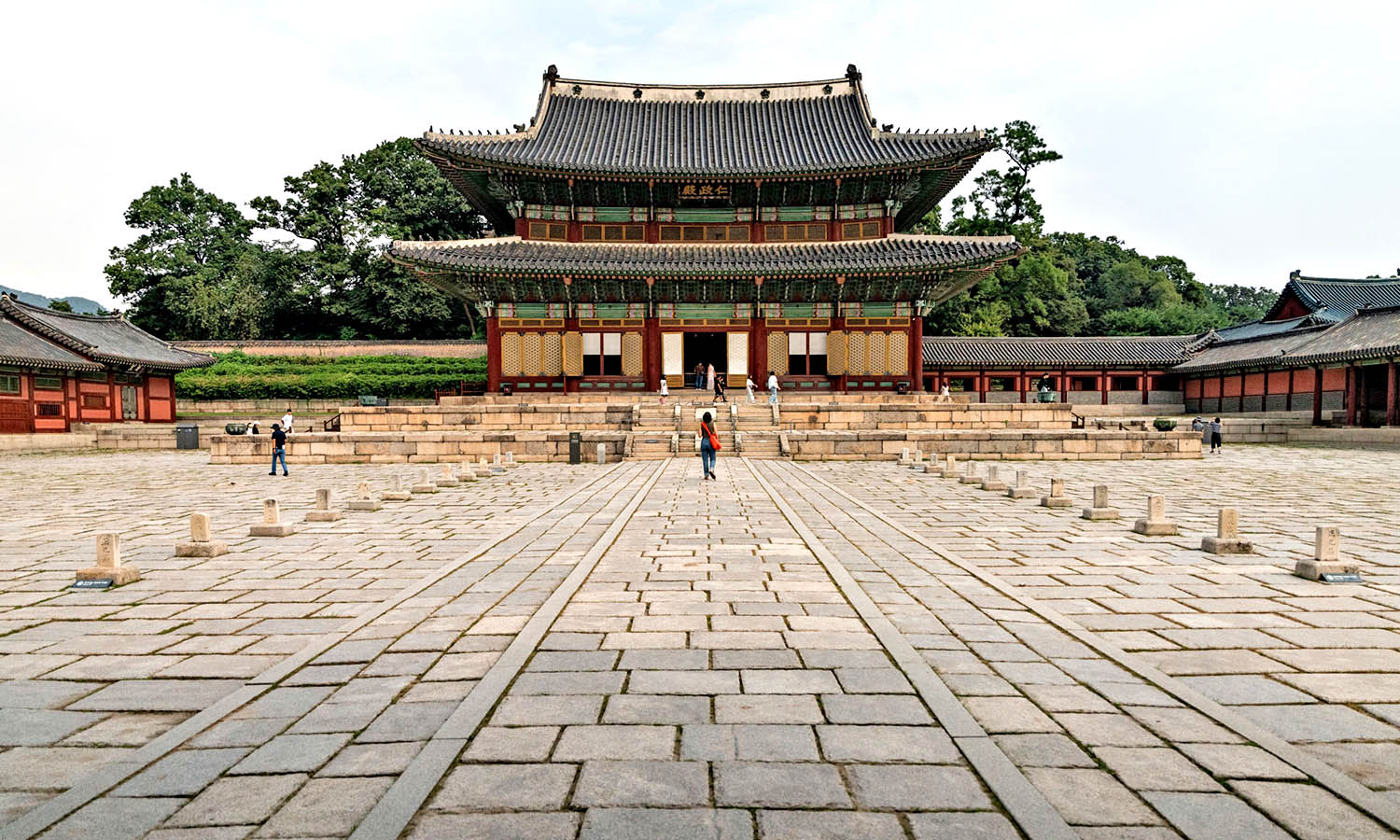

Our InsideAsia local guide, Alex, tells me his favourite saying is “you come into this world empty handed and you leave it empty handed”. I understand that this is meant to be a commentary on materialism, however I can’t help but think of Alex later that day as I’m navigating stairs at the baseball stadium, my hands full of Cass beers and chicken skewers. I don’t know what Confucius would think, but I reckon I might have found the meaning of life at a Samsung Lions game.
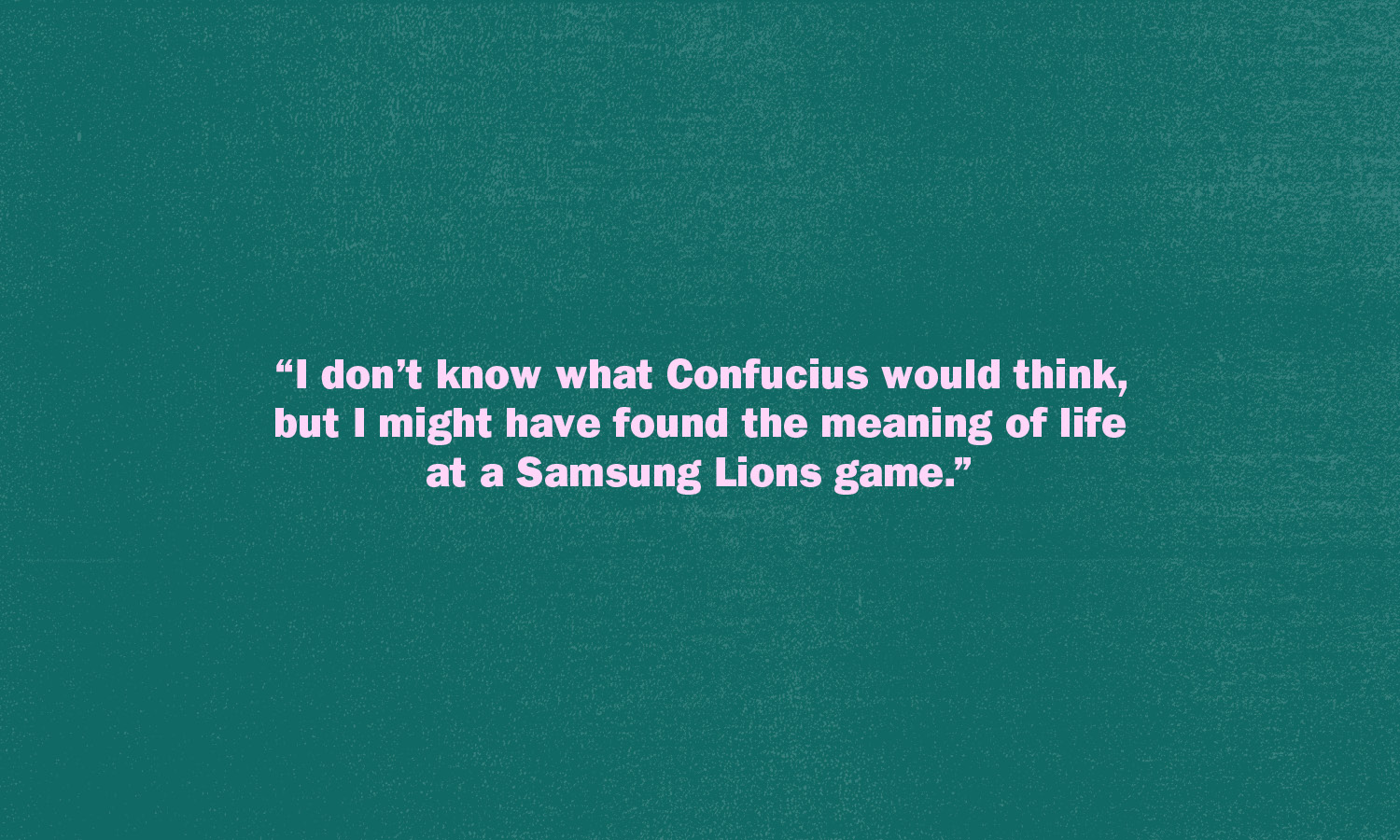

Click play to WATCH
I lose my voice at the baseball, but get it back the next day thanks to a bowl of Mangwon market chicken soup. The restaurant itself is a tiny 20-seater tucked behind a butcher shop, with one thing on the menu—poached chicken broth (heavy on the turmeric and ginger).
The restaurant is so discreet I would never have found it without the help of longtime expats and food experts, Ron and Joe. “I love the blend of the traditional and modern here at the market,” Ron says, adding more chilli to his bowl, “and I especially love all these little eating and drinking places.” Joe fills up my water glass and nods in agreement, “Millennials and Gen Z are really keeping Korean culture alive in places like this”.
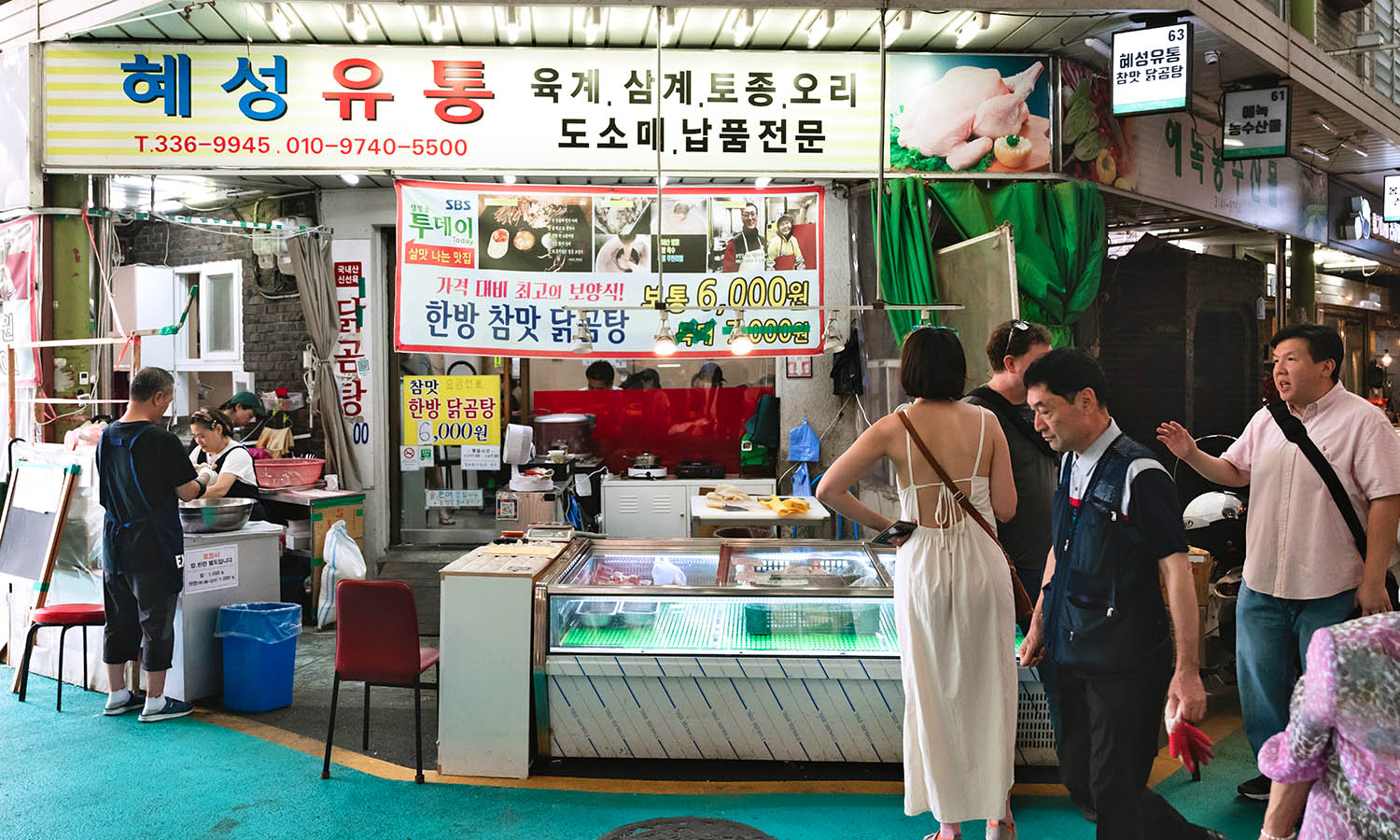

I don’t quite know what they mean by that until I meet Soyoun. Or should I say, until I follow Soyoun barefoot into a Gangneung pine forest in the rain.
That might sound creepy and/or romantic, but it’s actually neither. Forest bathing, especially in the rain, is considered a healing practice—good for boosting immunity and reducing stress. And as we navigate the surprisingly soft forest floor, our bellies full of clams (that she caught herself) and artichoke tea (good for circulation), Soyoun tells me how she left the chaos of Seoul to find solace in Gangneung’s coastal mountains. “I wanted to heal my mind and soul,” she says. “We have everything: the forest, the sea, the lake… I’m never sick here.”
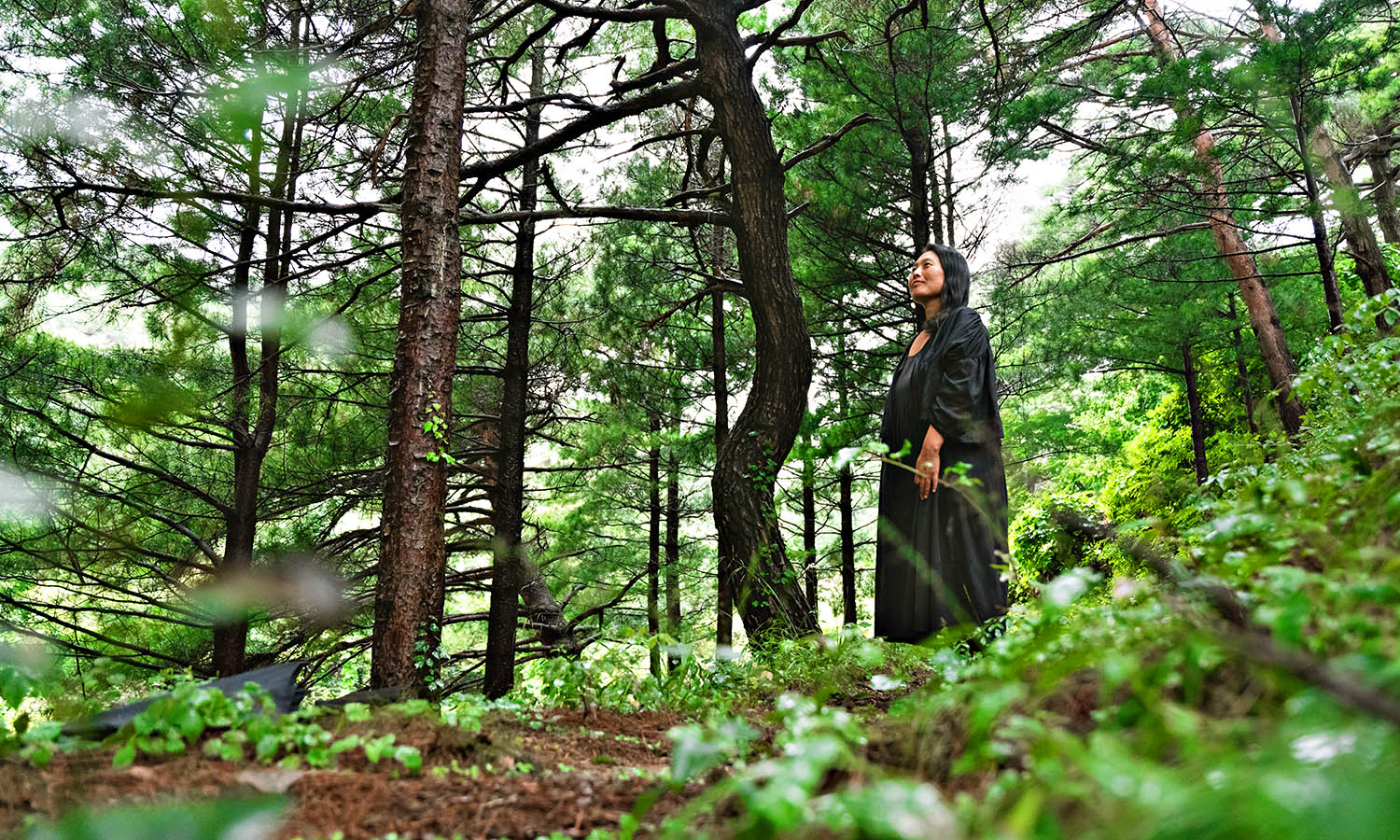

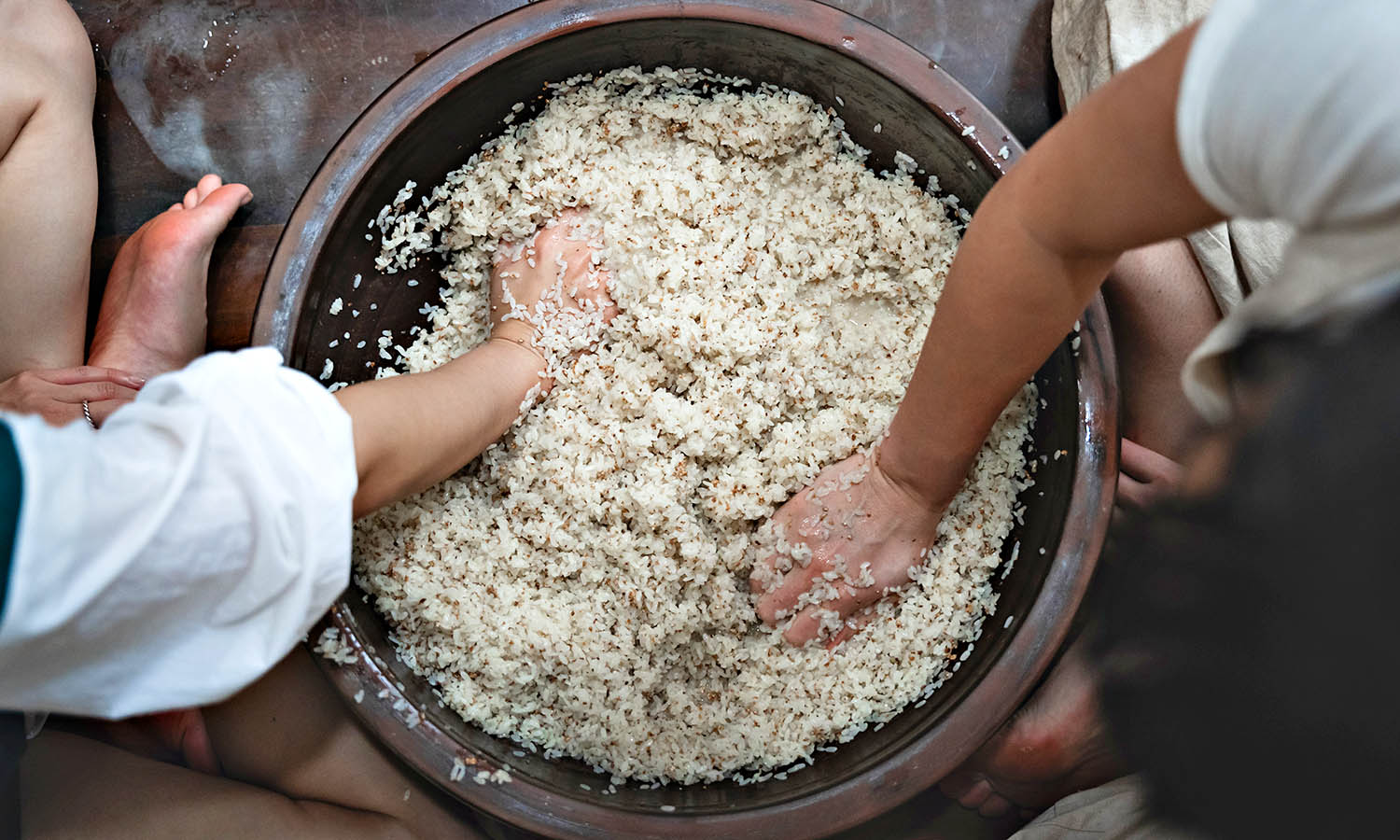

Later that afternoon, she lets me in on another wellness secret: 10mls of makgeolli rice wine a day will keep the doctor away. I’m actually elbows deep in yeast, rice and water, learning how to make makgeolli the traditional way when she tells me this. “Very nice,” she encourages, as I squash grains under my palm, “remember to put all of your good energy into it. Otherwise the batch might be bad.”
One bottle of makgeolli takes, at minimum, two-weeks to make. It’s a slow, even meditative, process. “I make wine this way, because I want to spread traditional Korean culture,” says Soyoun. “This isn’t just alcohol, it’s medicine.”
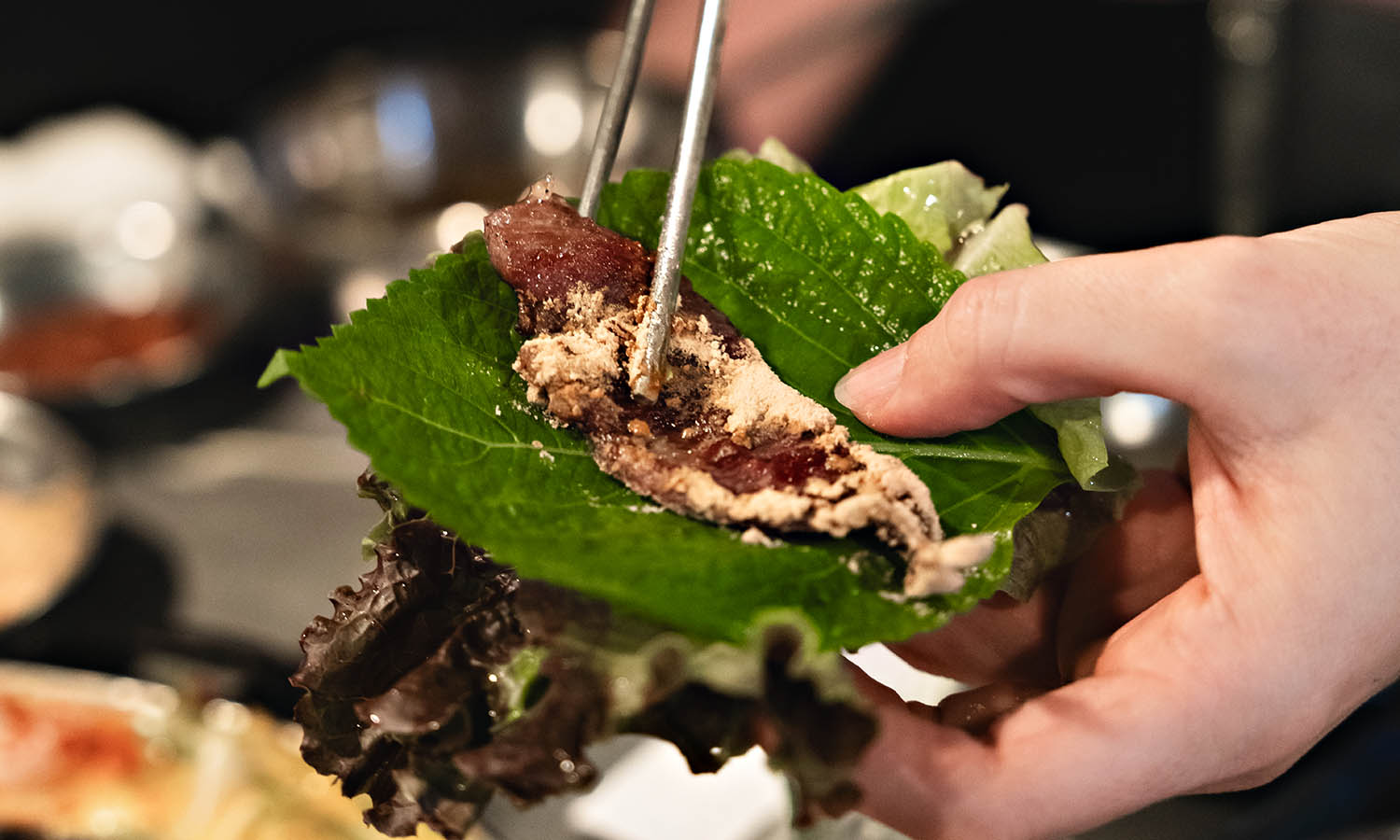

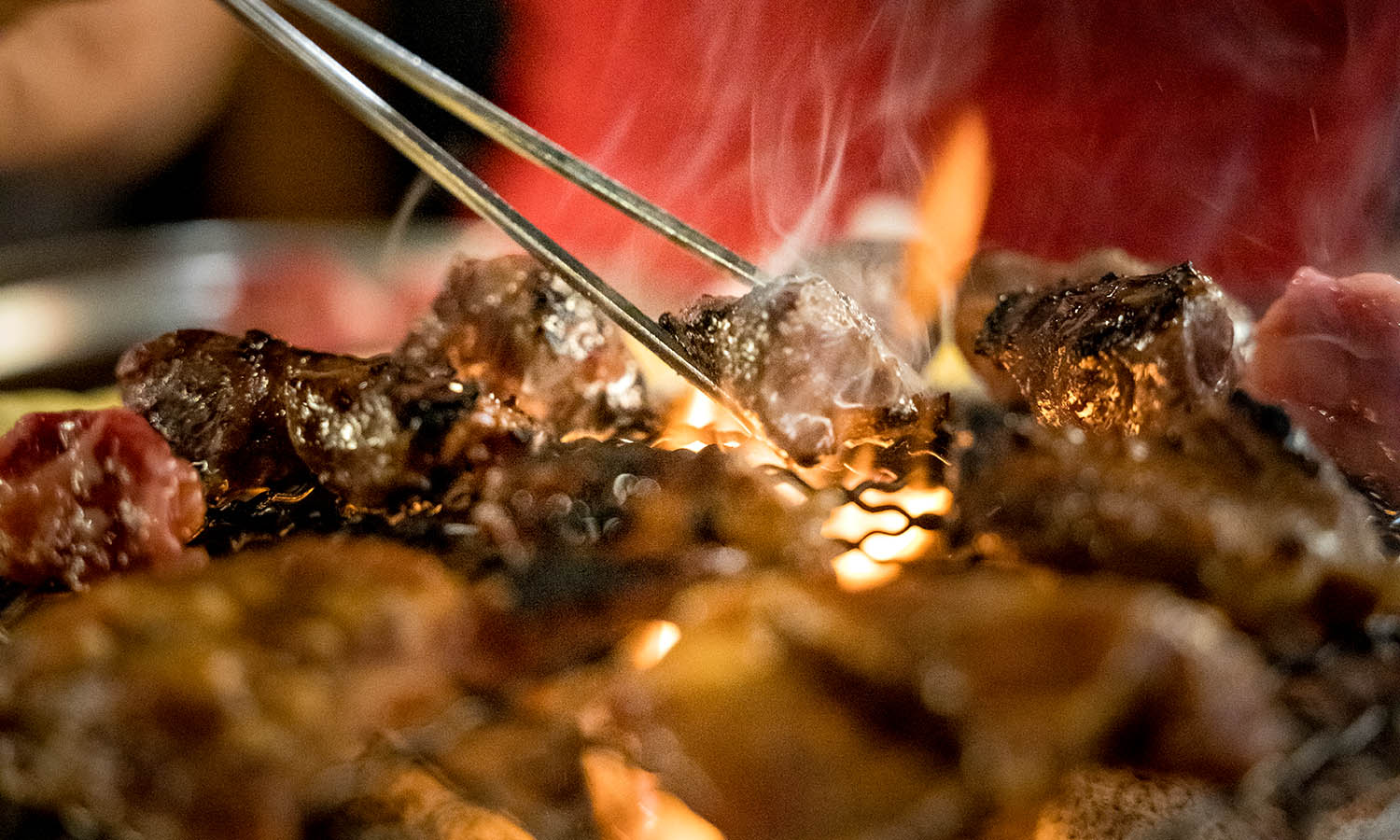

So as I raise the hongeo-hoe to my mouth, I remind myself that this too is a part of Korean culture. As I get a whiff of ammonia and my eyes water; as I struggle to chew and my gag reflex kicks in, I repeat it like a mantra. Remember, you’re eating a slice of history.
It takes several minutes, but eventually I swallow. A waiter walks past and gives me the thumbs up. Alex pours me a fresh bowl of makgeolli, which I down in one go.
Rice wine is medicine, after all. And it sure takes the sting out of skate.
get lost travelled as a guest of InsideAsia and Korea Tourism Organization.
The internet is full of people telling you to “treat yo’ self”. And we’re not any different.
Click play to WATCH
Travelling can be hard work. From lugging 25kg suitcases up Italian villa staircases to catching colds on long-haul flights, going on holiday can wreak havoc on the body. To cure all that ails you, here’s our top five weirdly therapeutic spa treatments from around the world. They’re an adventure in their own right:
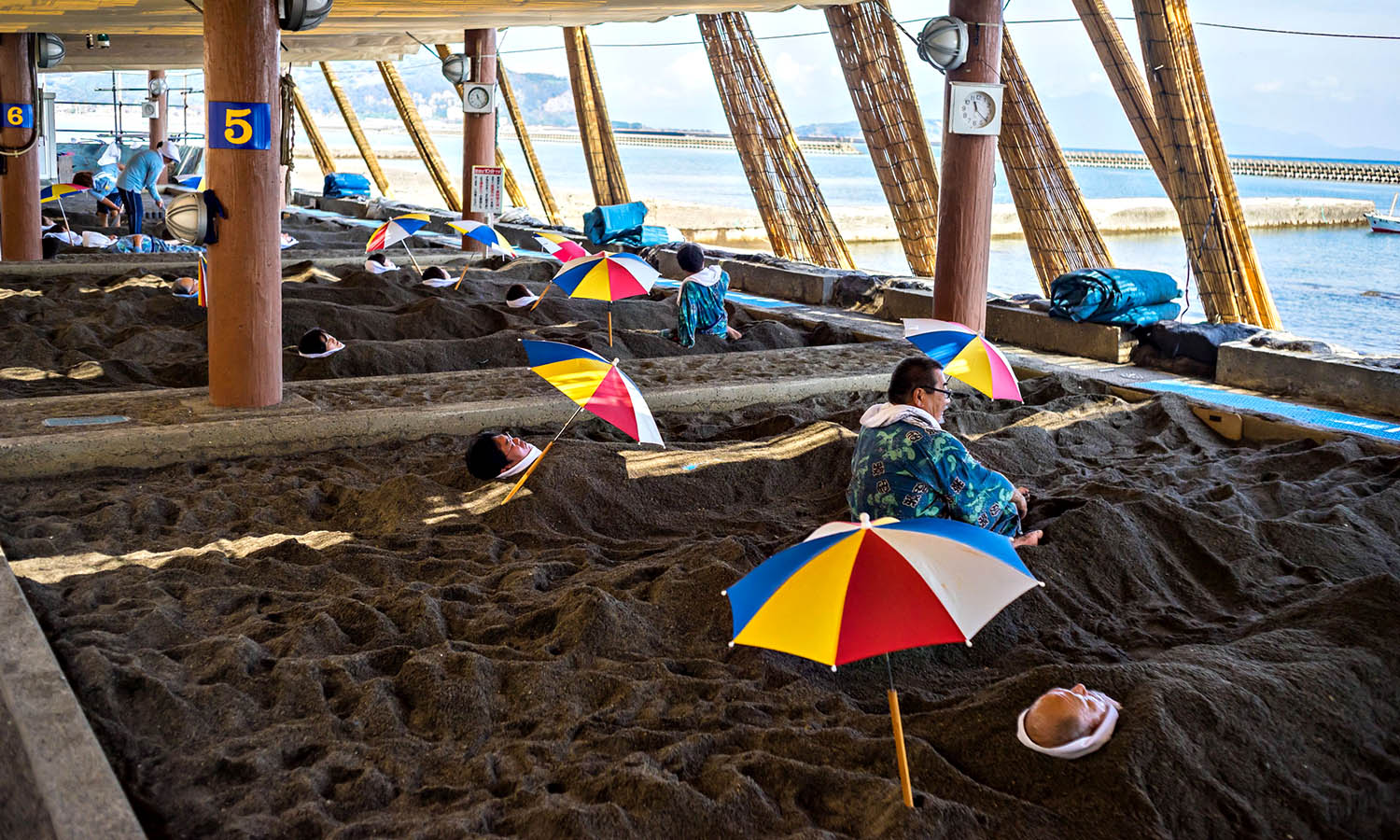

GET BAKED
JAPAN
Some people might find this particular practice comforting, others might find it claustrophobic. Either way, the Japanese swear by it. If you’d like to get buried up to your neck at the world’s only natural sand bath, get yourself to Ibusuki Onsen. Stat.
Now, this is not your standard sand—this is volcanic black sand. And this is not your standard beach—this beach has natural, geothermally-heated spring water flowing underneath it. Meaning the black sand is steamed at a warming 55 degrees celsius. Why go for the full burial? Apparently, it can improve blood circulation, help eliminate toxins and provide relief from ailments like rheumatism.
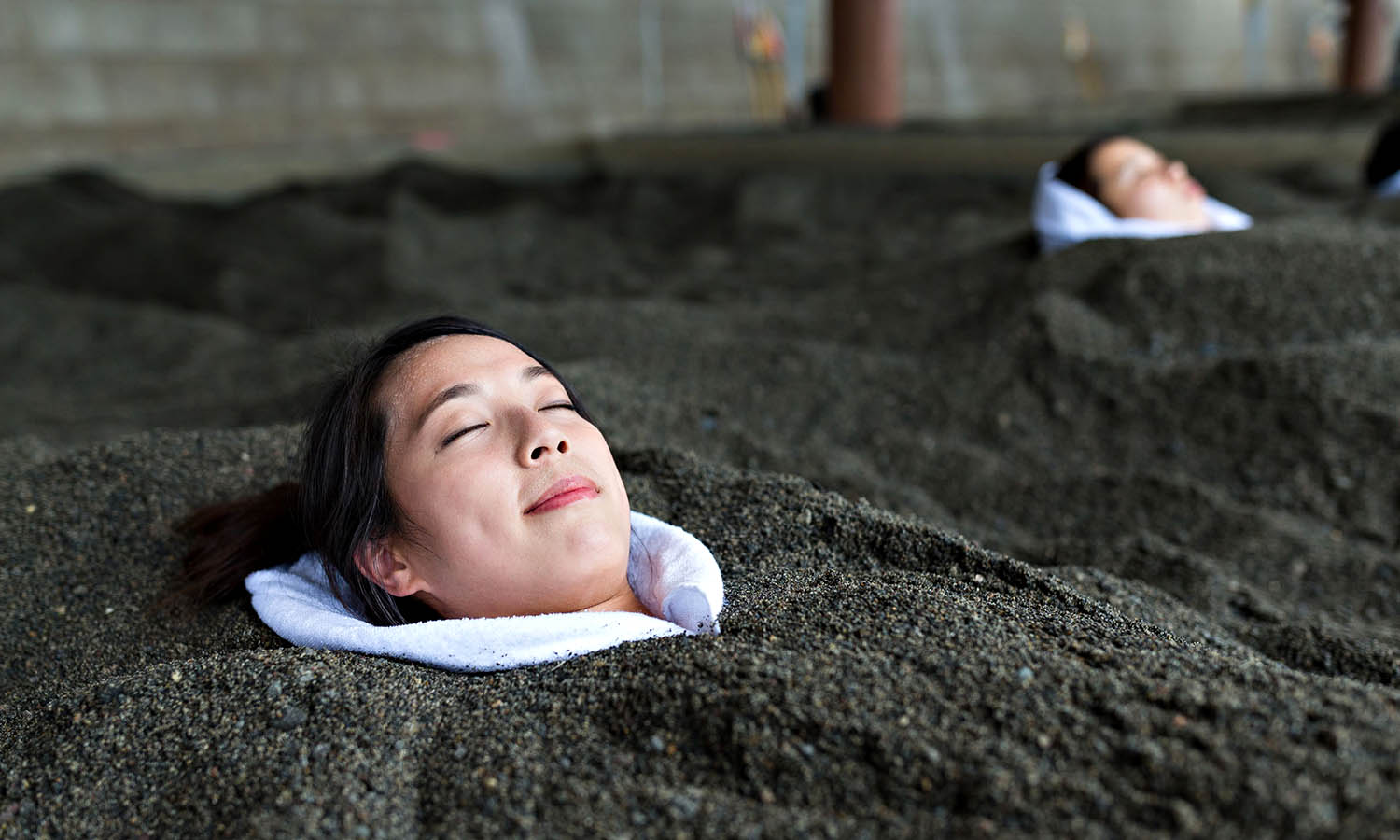

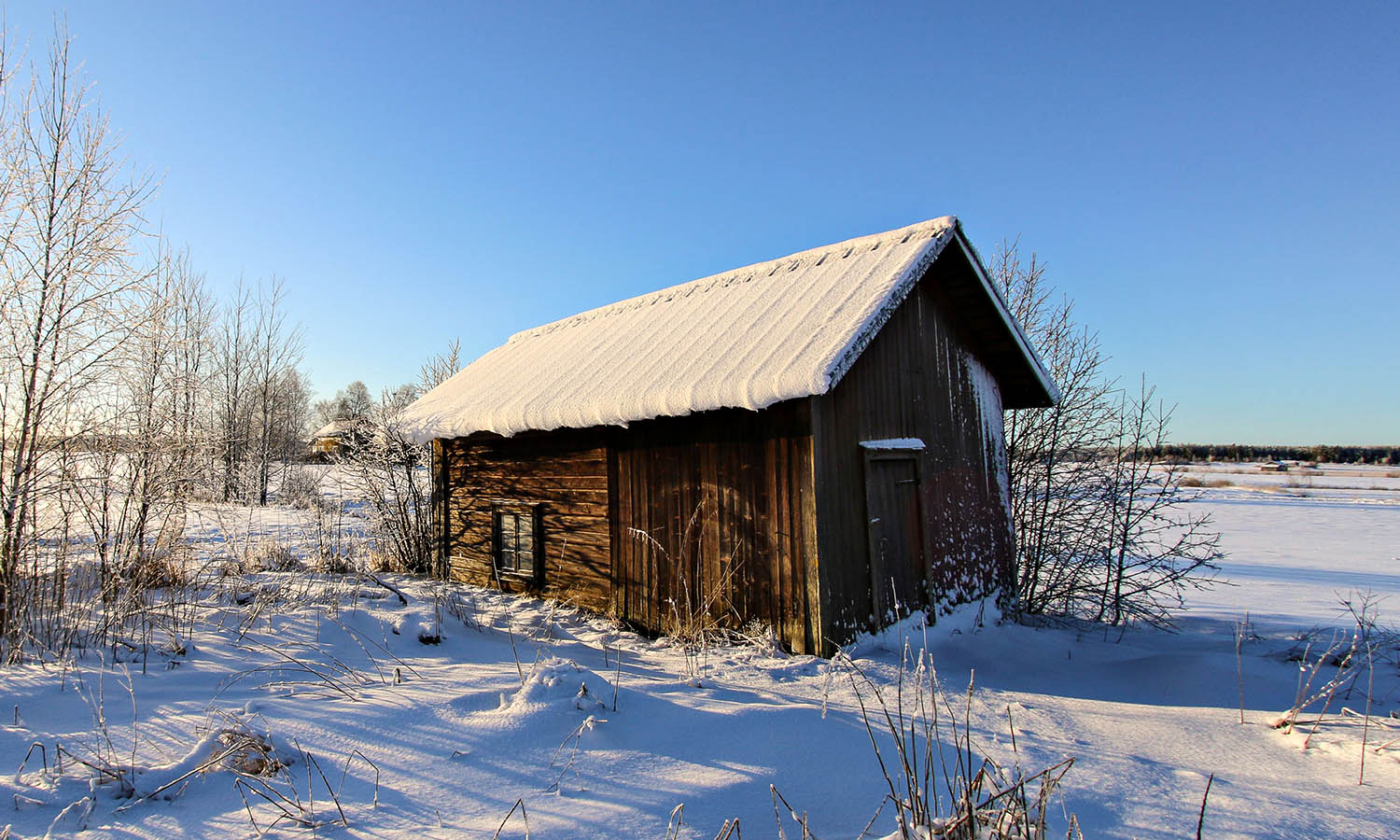

GET SMOKED
FINLAND
It’s no secret that the Finns, much like the Swedes and the Norwegians, love a sauna. They also love an ice cold lake plunge (we’re not so sold on that one). But why the cultural obsession with the sauna, and why in particular do they like it smokey? It’s a traditional thing.
In Finland they like to sauna as their ancestors did—in a small hut with no chimney so that the smoke stays trapped inside. The smoke is released through the door immediately before sauna-goers enter, but the scent and heat remains. Sauna-ing in general is known to improve heart health, reduce inflammation, detoxify the body and boost your mood, while the added benefit of the smoke is to preserve and purify the sauna space. If you want to go full Viking, we recommend a trip to the Lapland wilderness where you can alternate between a hot sauna and a frozen lake (if you’re brave).
Click play to WATCH
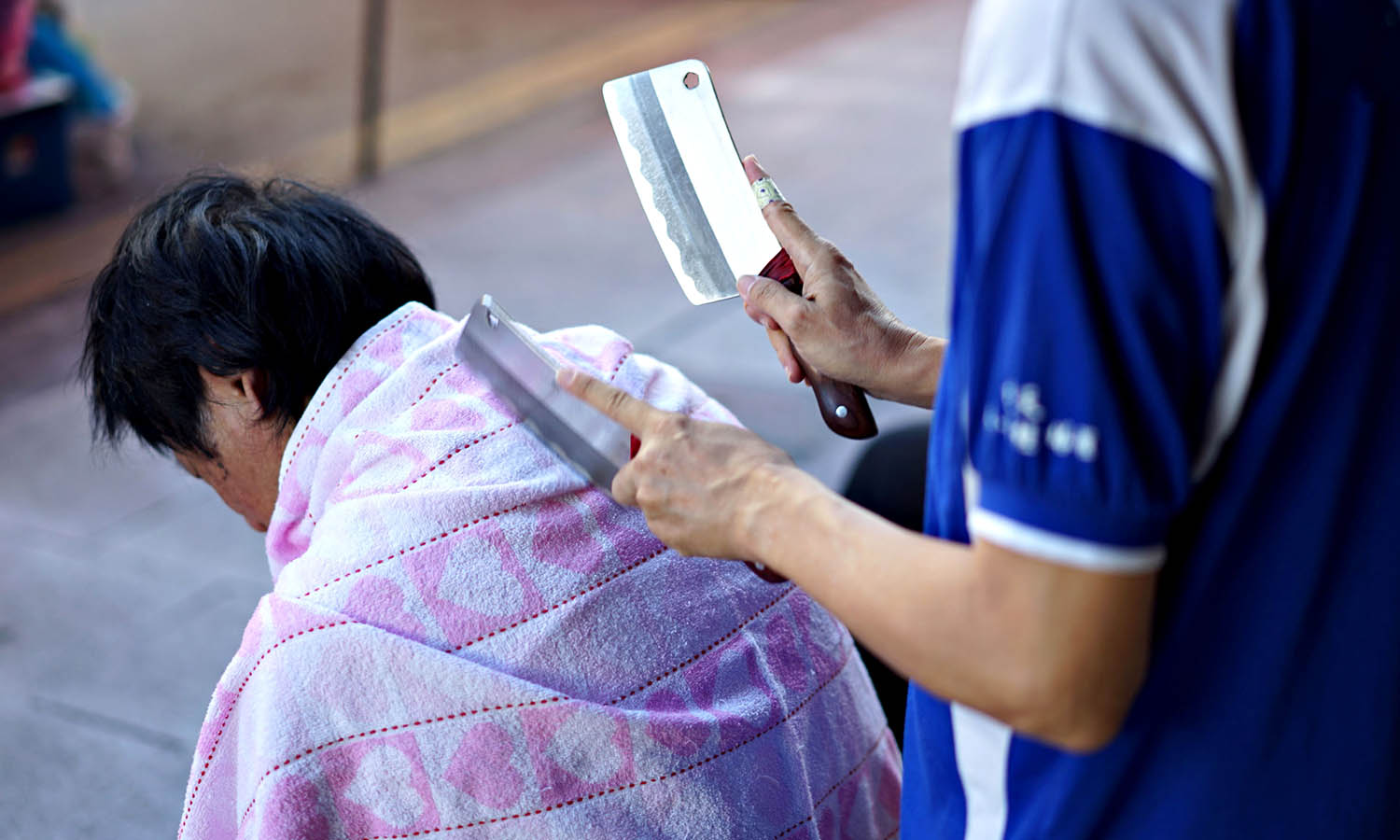

GET CHOPPED
TAIWAN
Welcome to the wild world of ‘daoliao’ or ‘knife massage’ as it’s known in Taiwan. This spa treatment is exactly what it sounds like—being repeatedly chopped on the back and neck by real (albeit dull) meat cleaver blades.
But this tradition looks more dangerous than it is. While it’s said to have first been practiced in China more than 2,000 years ago, the people of Taiwan are keeping daoliao well and truly alive in modern times. Probably because Daoliao is believed to have physical and emotional healing powers when done correctly.
Click play to WATCH
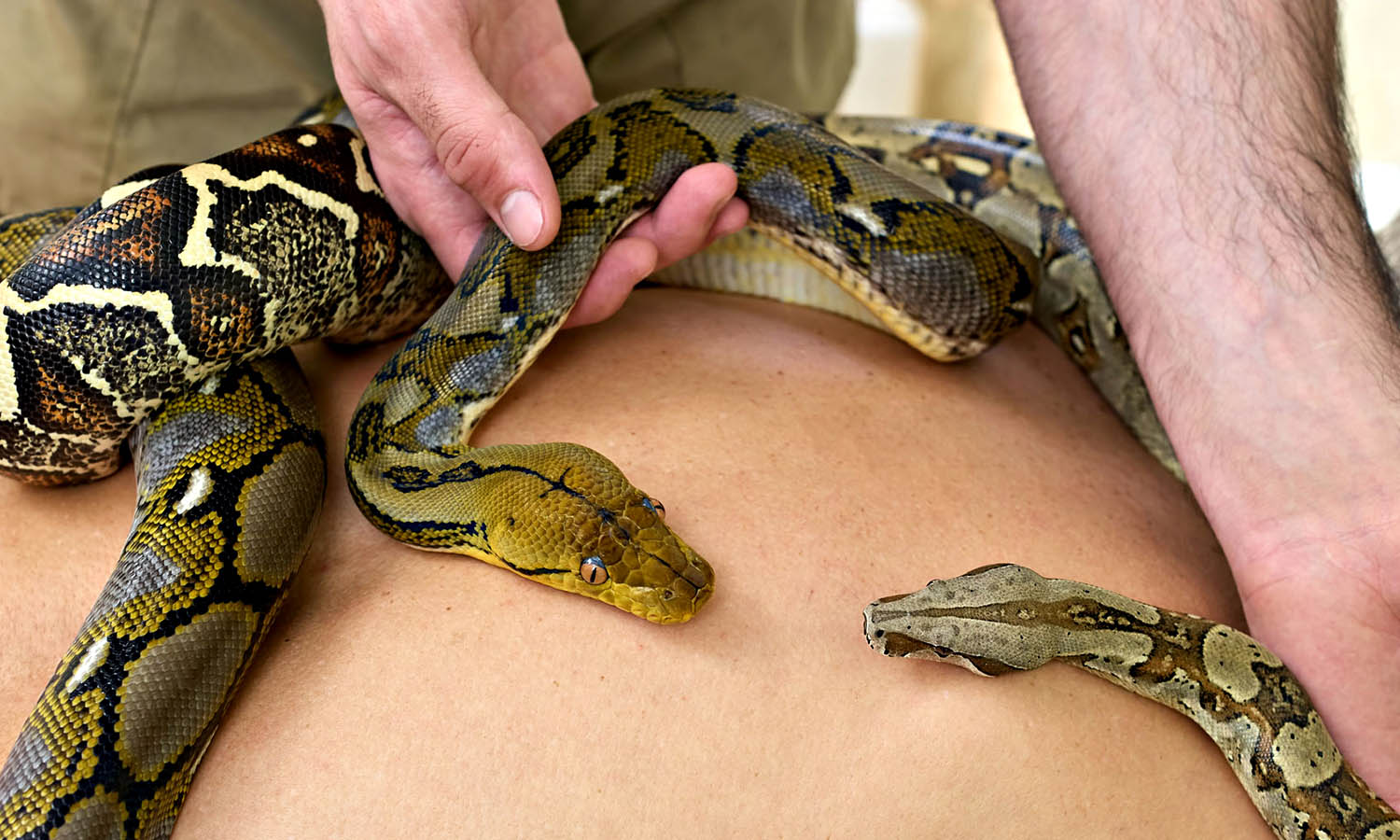

GET SNAKED
EGYPT
This has got to be one of the world’s most unorthodox ways to chill out. At this spa in Cairo you can be pampered, and slithered on, by a bunch of different non-venomous snakes. Like the small Abu Sweir, which makes light tracks across your back, and the big python whose heavy body squeezes and presses.
Snake massage isn’t just popular in Egypt though, you can find salons across Russia and Thailand, the Philippines and the USA offering some form of boa relaxation. Terrifying or relaxing? We’re unsure.
Click play to WATCH
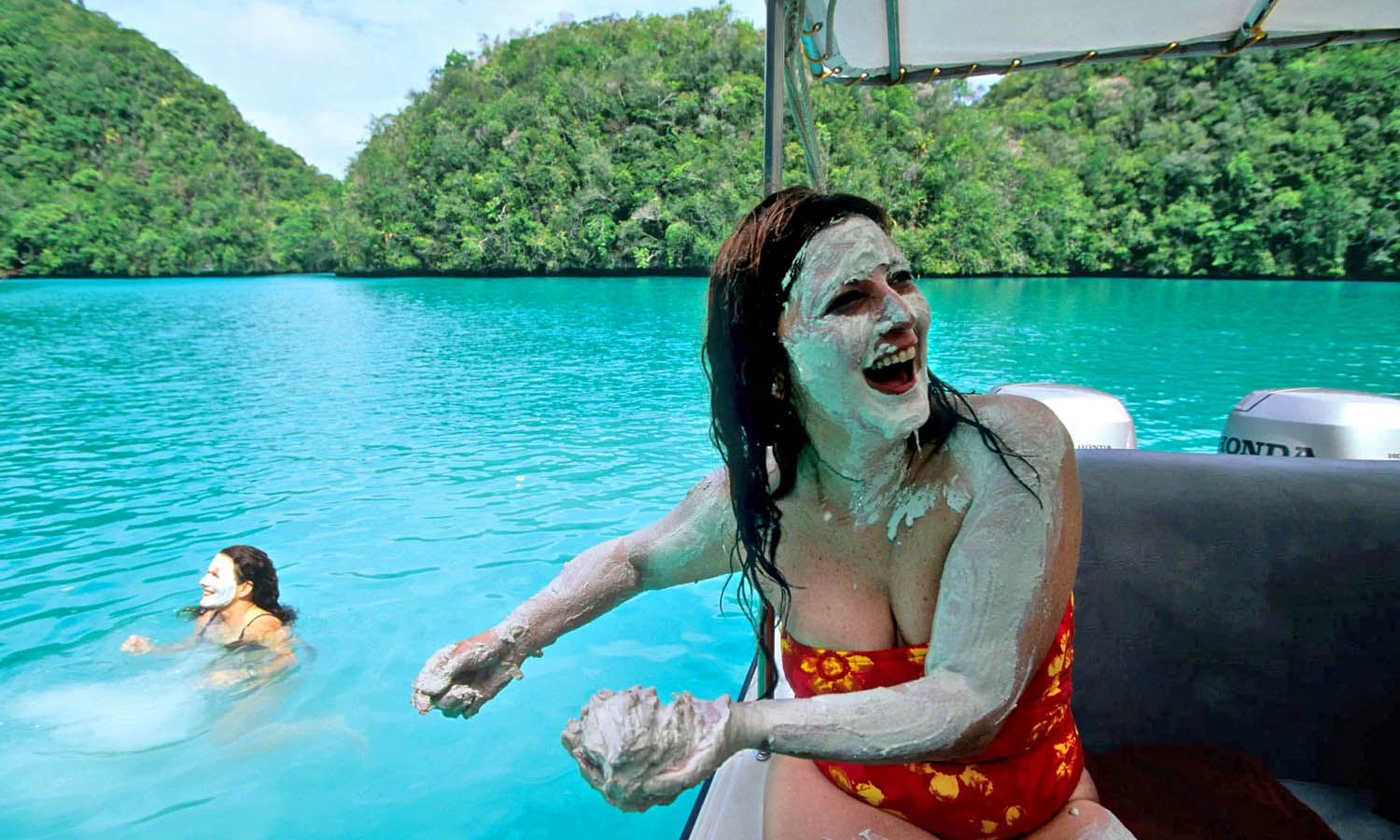

GET MUDDED
PALAU
A natural mud bath set amongst Palau’s 300 idyllic islands? Count us in. Jump on board a boat and cruise over to Milky Way Lagoon where the seafloor is caked with a very special type of white clay. Scoop it up, rub it all over your body, wait for it to dry and then rinse it off in the crystal clear waters.
Why bother? The locals reckon it will rejuvenate your skin and leave you looking younger. Even if it doesn’t, you’ve just spent a day exploring one of the world’s most pristine corners. It’s a win-win, really.
Click play to WATCH
Best in Travel 2024 is Lonely Planet’s 19th publication of the travel icon’s annual collection, featuring 50 must-visit destinations around the globe, celebrating its 50th Anniversary.
To celebrate the release, get lost are giving away a copy of Lonely Planet’s Best in Travel 2024.
We asked you where you wanted to travel in 2024, and you duly delivered. Here are some of our favourites, which almost took home this brilliant little coffee table book:
“Currently looking at the Stans (Turkmenistan, Uzbekistan, Kyrgystan, Kazakhstan) plus throw in Armenia, Georgia and Azerbaijan. Seem to be places that you don’t hear a lot about, are off the beaten track but might be hidden gems. It remains to be seen if they are but it’s something that my partner and I are keen to find out and will add to our dream of getting to 100 unique countries together.”
“Macau, with unique mix of Portuguese and Chinese, home of the phenomenal ‘House of Dancing Water’. Many hotels offer easy access to the jaw droppingly beautiful ‘Grand Canal Shoppes’. Feeling like you are in Venice strolling around the Venetian Gothic shopfronts under a gorgeous blue sky ceiling along the beautiful Grand Canal with sounds of lively music.
“Taking a gondola ride serenaded by a handsome gondolier, then soak in the atmosphere sitting by the ‘Grand Canal’ at Lord Stow’s Bakery savouring a legendary Portuguese Custard Tart, apparently you will remember your first bite forever.
“Macau, truly a ‘City of Dreams’.”
“In 2024, a hidden gem I’d choose to find, Bhutan’s serene valleys, in my mind. Nestled amongst the Himalayas’ grandeur, where nature’s purity is the true procurer.”
Cairo.
I just want to see the chaos, the majesty and the history and walk past a goat, a building that should be in a museum, and a McDonalds at the same time. Fascinating.
Drumroll please…
Tough to beat Paul’s sentiments for wanting to visit Berlin:
“While going through my late mother’s personal effects after her funeral, I discovered a grainy photo of my parents kissing at the Brandenburg Gate in Berlin. Shortly after that, dad was sent to the Eastern Front, was captured, and subsequently imprisoned in a Russian POW camp, After Germany’s surrender, he made contact with mum and a few weeks later they were reunited.
I now have a strong desire to visit Berlin, particular the Brandenburg Gate, in honour of my parents who have demonstrated so powerfully that romance and love are able to exist and flourish in the most horrific circumstances.”
The book is broken down into top 10 countries, cities and regions, plus the best value and most sustainable destinations from around the world. It’s 222 pages of epic travel inspiration and coffee table chic.
Mongolia was ranked as the number #1 destination to travel to in 2024, while Australia’s own Kangaroo Island was seen as the #2 region, a tremendous effort as they continue to bounce back from devastating bushfires of 2019/20.
Lonely Planet’s Best in Travel 2024 list is essential gift-giving for the traveller in your life. Available at $27.99 RRP from all bookstores around Australia, as well as online – click here to purchase.
BIENVENIDOS TO THE CONTINENT OF EXTRAORDINARY EXTREMES
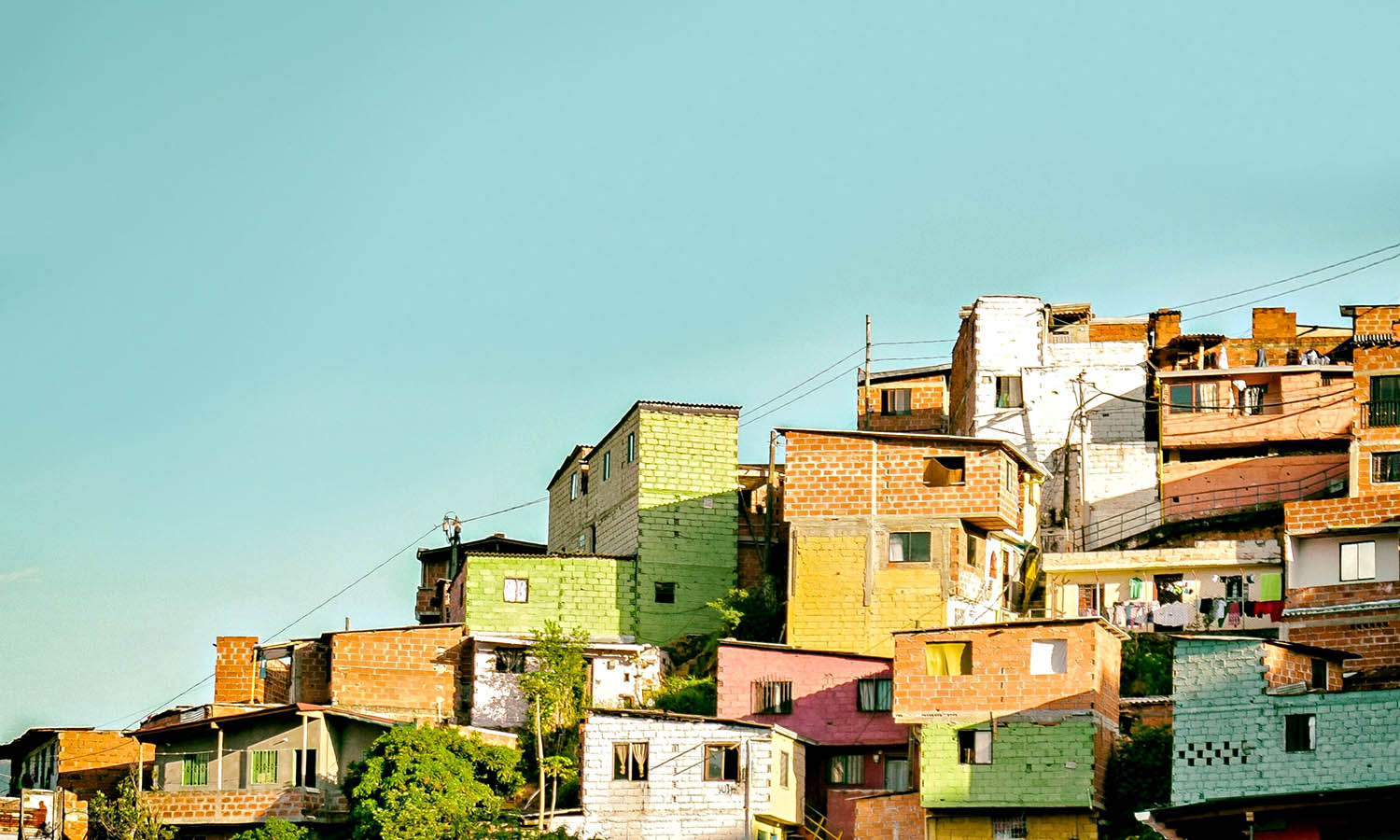

From Colombia down to Cape Horn and across the epic Andes, South America is home to everything from vast desert and tangled rainforest to immense glaciers and idyllic islands. Que bueno!
But this guide is not for the faint of heart. This is a get lost list—a curation of super unique, very wild, often challenging experiences designed to immerse you (well and truly) in the culture and landscapes of this ridiculous continent. Proceed with an open mind and sense of adventure.
Click play to watch
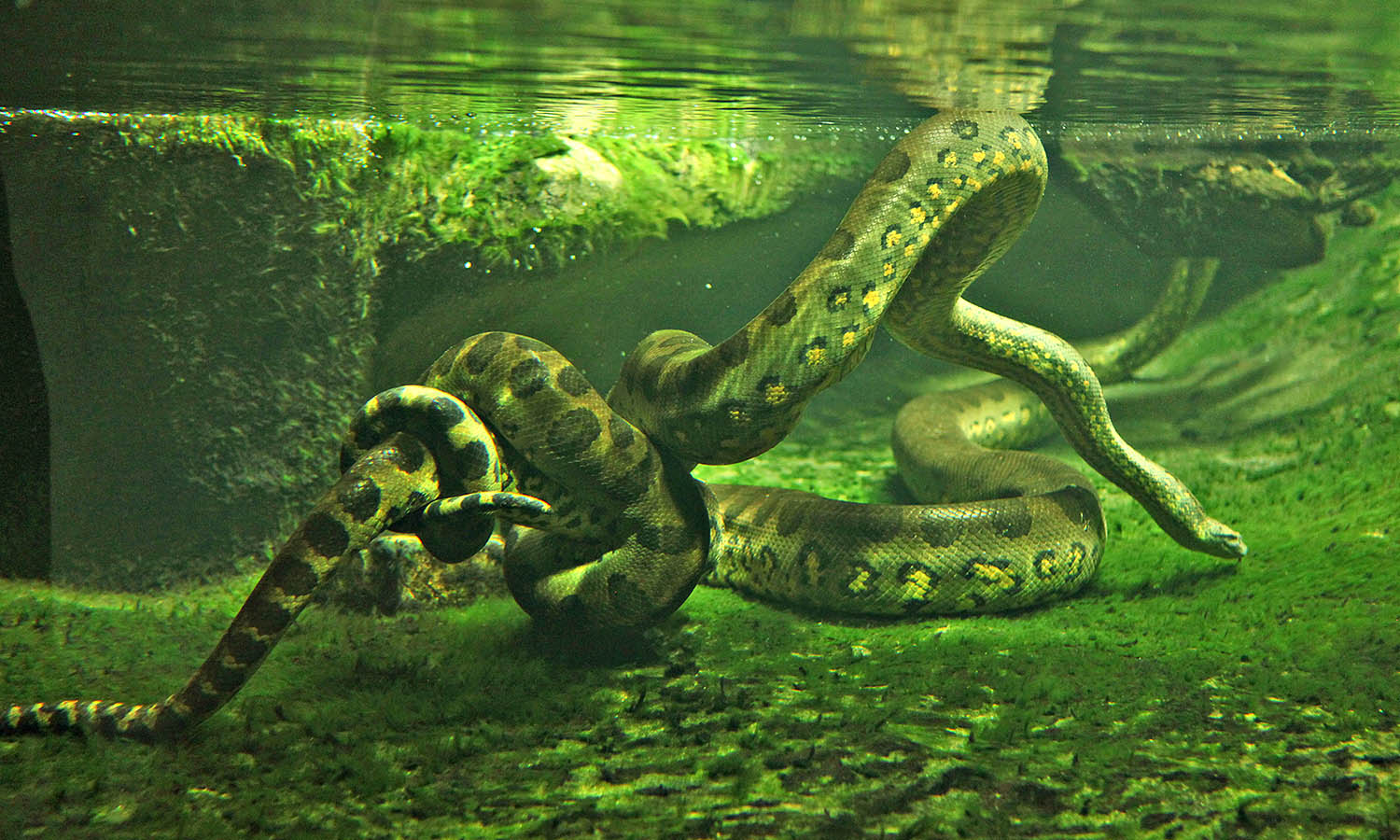

BRAZIL
This is surely one of the most ridiculous tour offerings we’ve ever seen. Which means it had to be included.
The gang at Big Fish Expeditions take keen travellers (with scuba licences) to Bonito, in southern Brazil, where you swim with the world’s largest snake. Why is it ridiculous? Because they’ve made movies about this very experience and we’re pretty sure it didn’t end well. For anyone.
That said, this adventure is for the more extreme daredevils and any serious snake lovers who want to get up close to a water boa. Just a heads up—these snakes spend their time underwater hunting for caimans and other river-dwelling prey. Terrifying.
Click play to watch
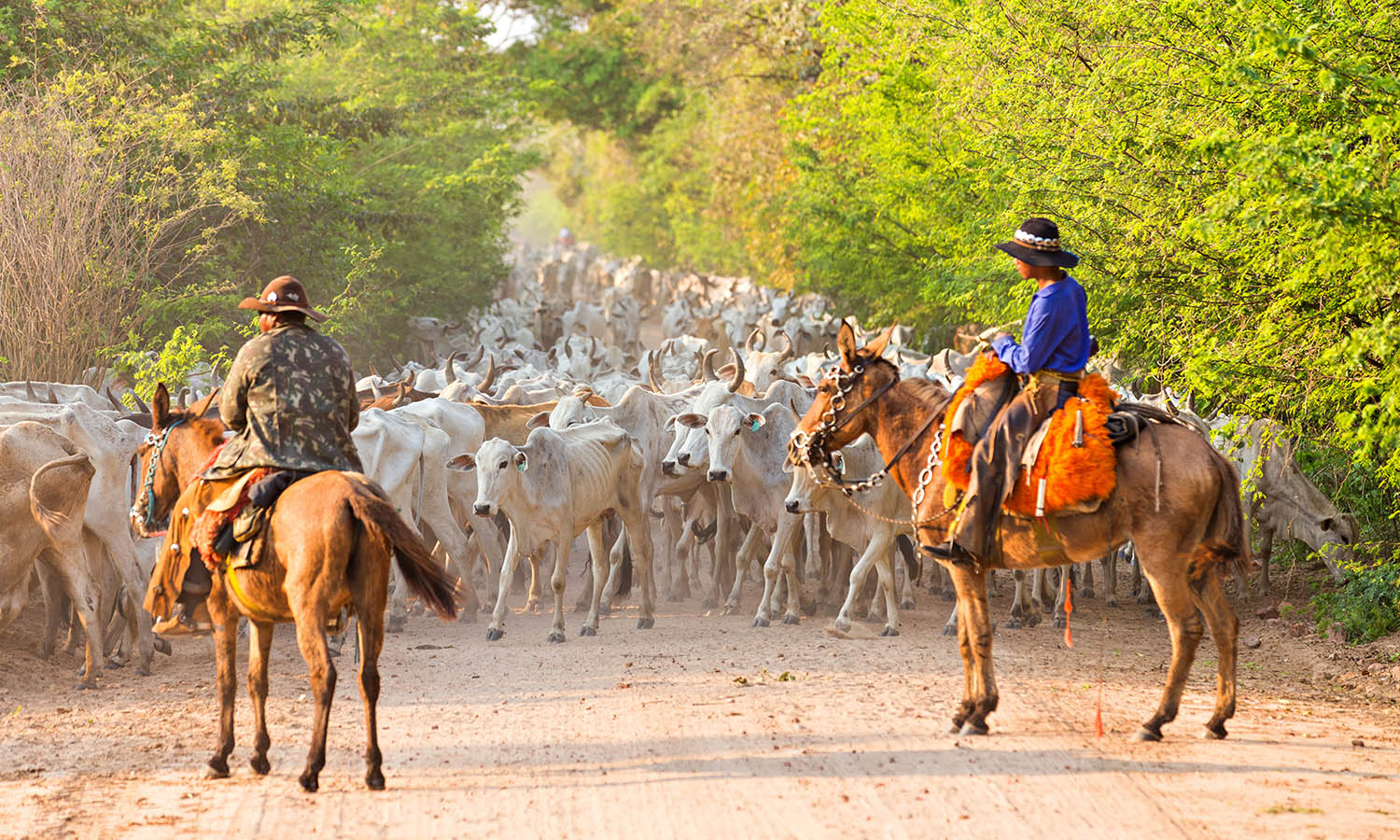

PARAGUAY
Horseback riding, gastronomic delights, rodeos, blissed out landscapes… here’s your warning: you may never want to leave the estancia.
Rural stays are an epic way to experience some of the Paraguayan way of life. Depending where in the country you are, keep an eye out for tapir and armadillo; and expect lots of good, locally-sourced food (often cooked over fire). Remember to stretch your glutes after a day in the saddle and practicar español!
Click play to watch
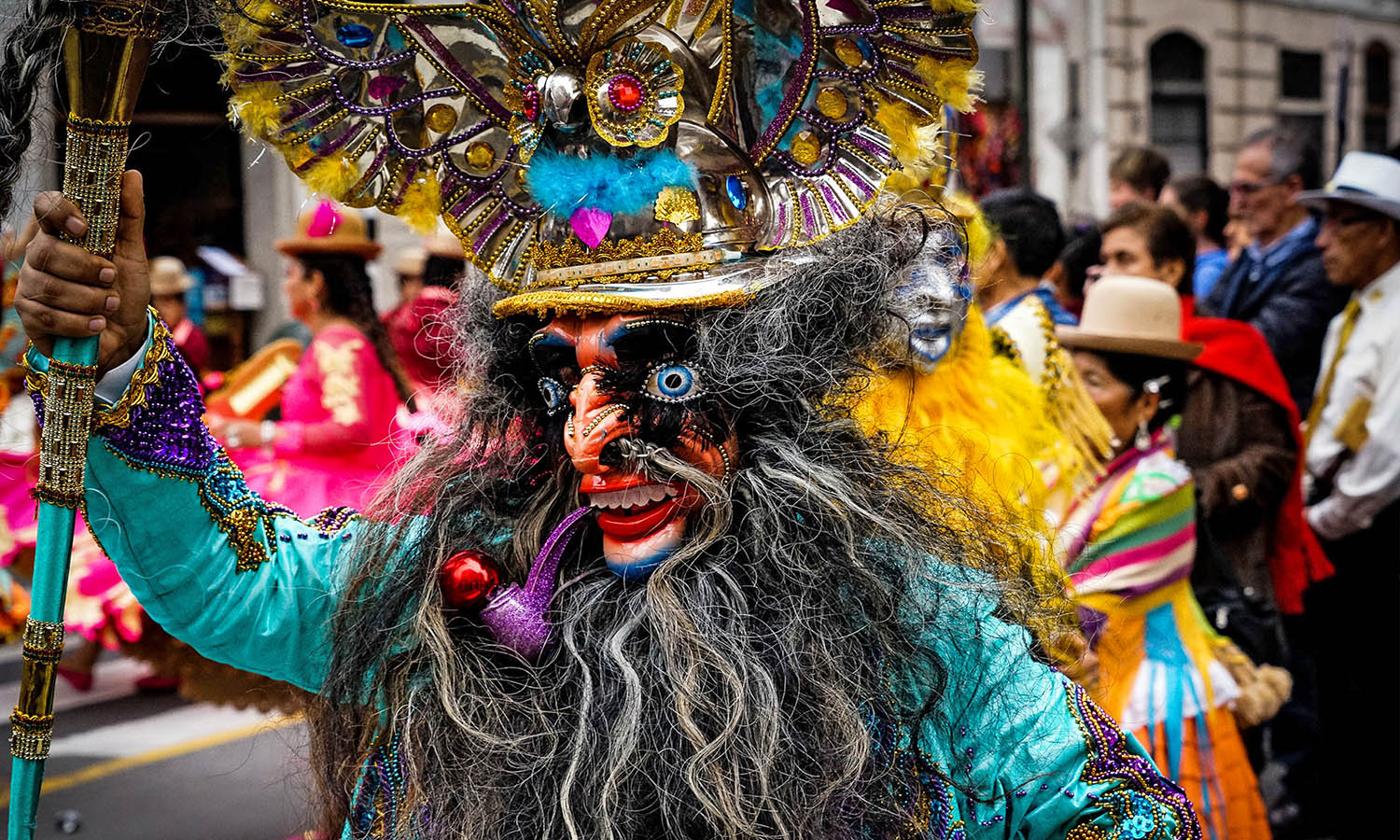

PERU
Festival fiend? Add this one to your bucket list. Held over four days in July—in a small town a few hours drive from Cusco—the Virgen del Carmen festival sees dance, art, masquerades and food come together in a magnificent community event.
Expect fireworks, parades and a final gathering at the cemetery to pay homage to the souls of the dead. Yep, you read that right. If you’re looking for an immersive Peruvian experience, this is the one.
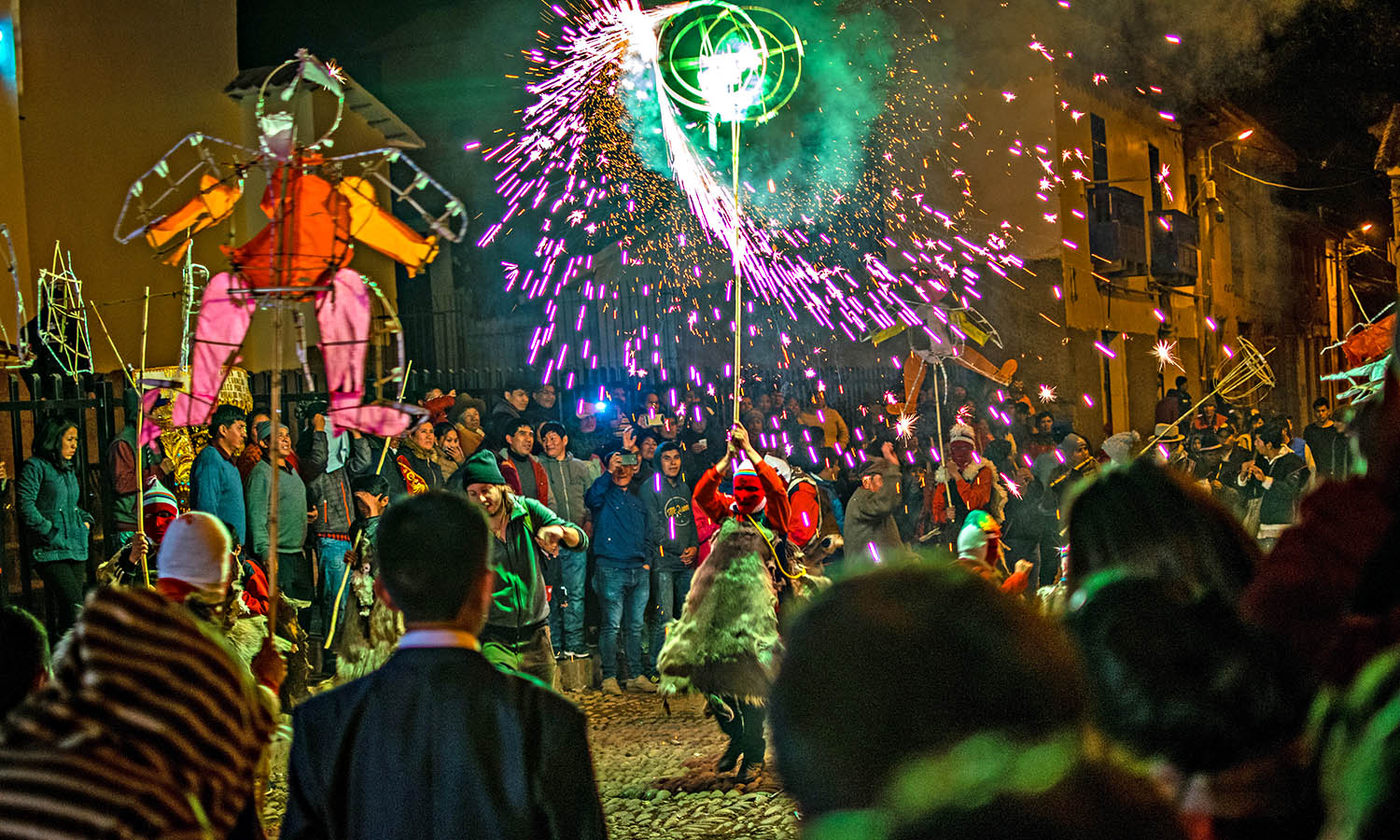

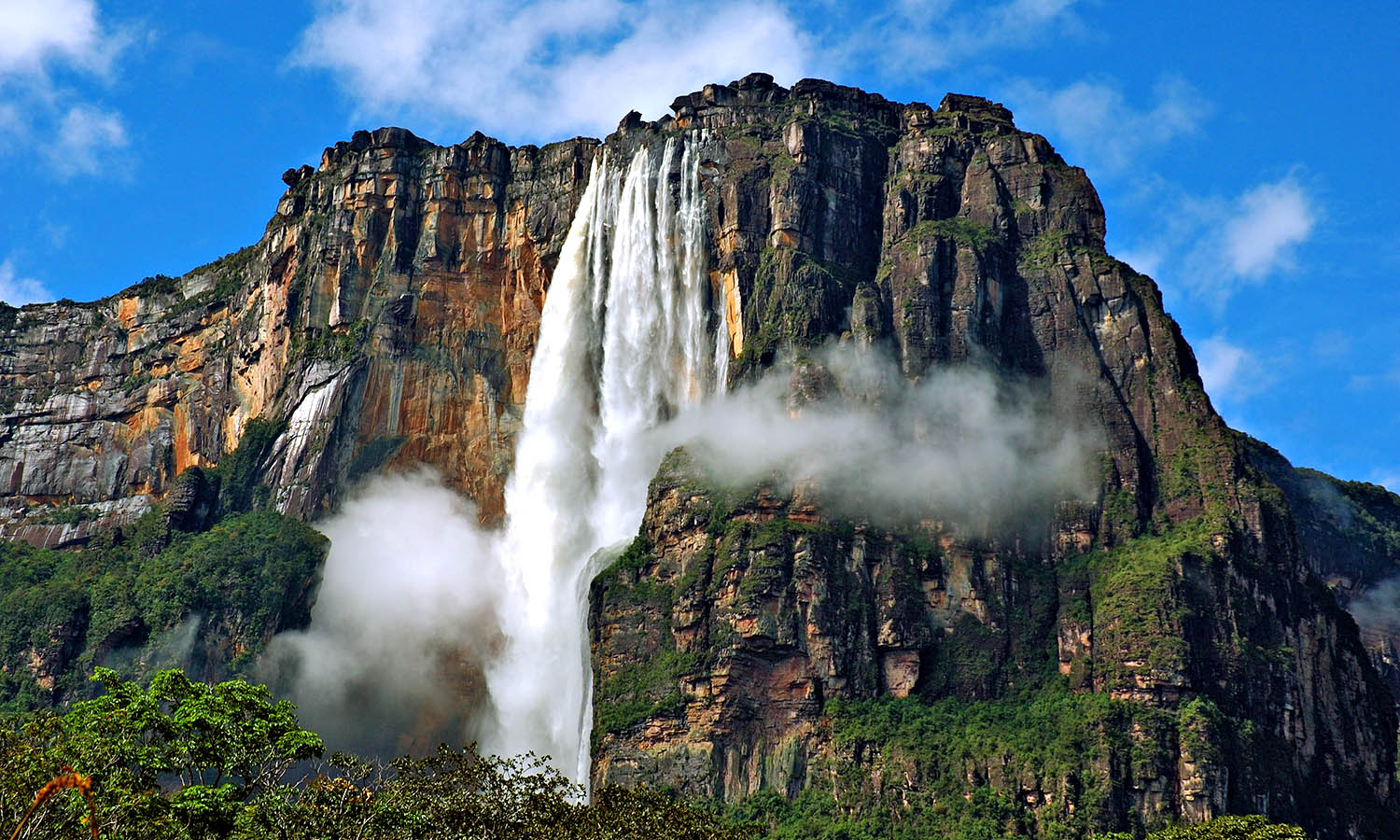

VENEZUELA
Angel Falls is the world’s tallest uninterrupted waterfall, standing proudly at 979 metres*.
At the foot of this behemoth of a natural gift is a swimming pool with a much, much smaller, waterfall (think of it as a replica) where you can strip off your kit and go for a swim / bomb / pin drop. This is an extraordinary corner of the globe for natural beauty; in the same national park is Mount Roraima, boasting some of the best trekking in the world a set of cliffs that inspired Sir Arthur Conan Doyle’s The Lost World (1912).
That said, Venezuela is currently in a time of political and economic instability, we recommend this is one for the bucket list.
Click and see WHERE ANGELS FLY
*Estimations of South Africa’s Tugela Falls indicate that waterfall may be 983 metres high, but this has not be confirmed and measurements are ongoing.
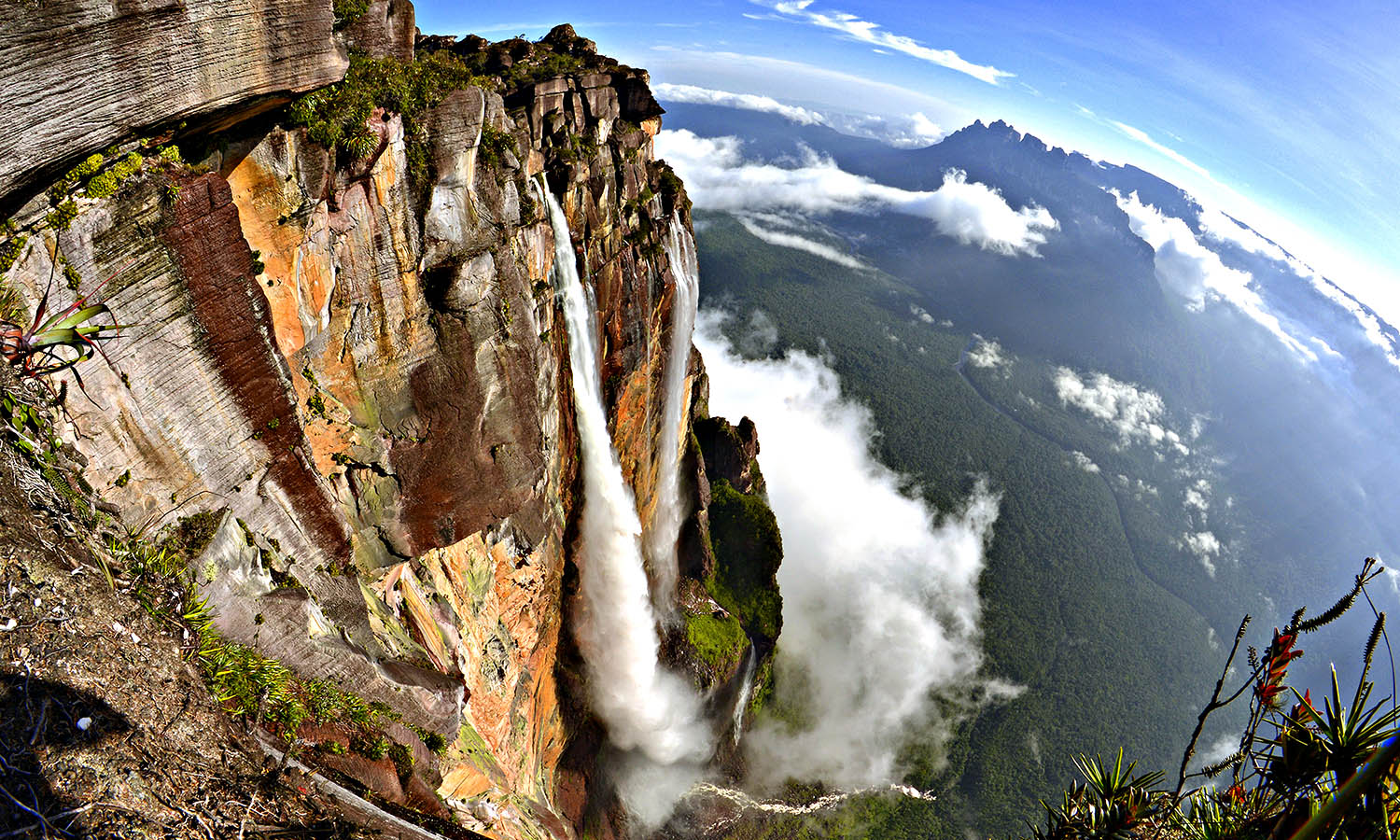

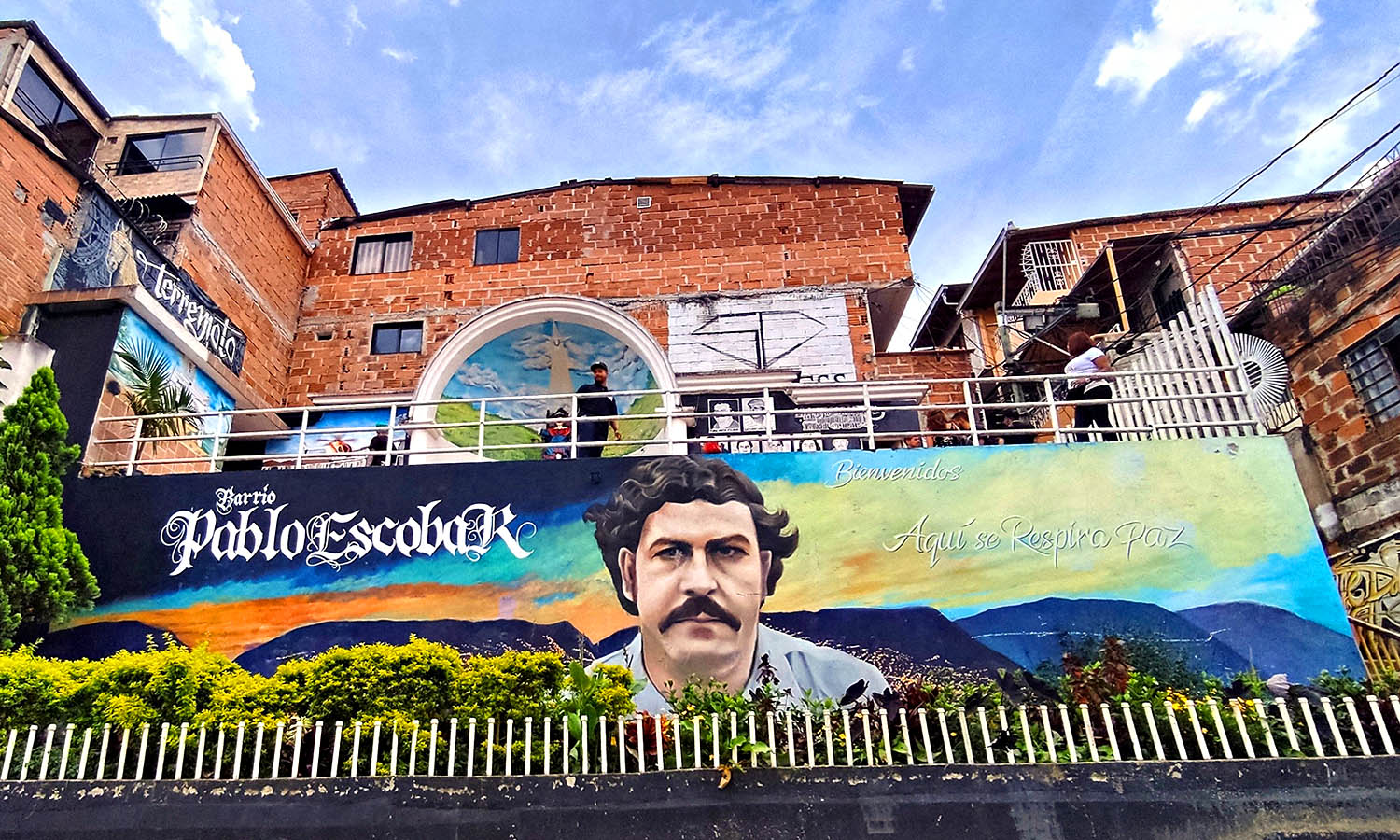

COLOMBIA
We’ve all seen Narcos, and we’ve all sent the meme of Pablo Escobar wandering aimlessly around his abandoned mansion. He is in some ways, a figure of entertainment for us Westerners.
What we haven’t seen is the devastating effects the kingpin drug lord had on his own people— you don’t become the wealthiest criminal in history without leaving a trail of destruction. The thing we like about the Real Pablo Escobar Tour in Medellin is that it retraces history without glorifying it again.
It equally inspires awe at the empire he built (which is genuinely astonishing) while not shying away from the negative impacts on local communities—not something every true crime tour offers. See the prison he built (for himself) and the soccer stadium, but also catch a glimpse of where he is buried. You’ll also hear first-hand experiences from local Paisanos and Costeños peoples.
Click for THE DOWN LOW ON PABLO
Click play to watch
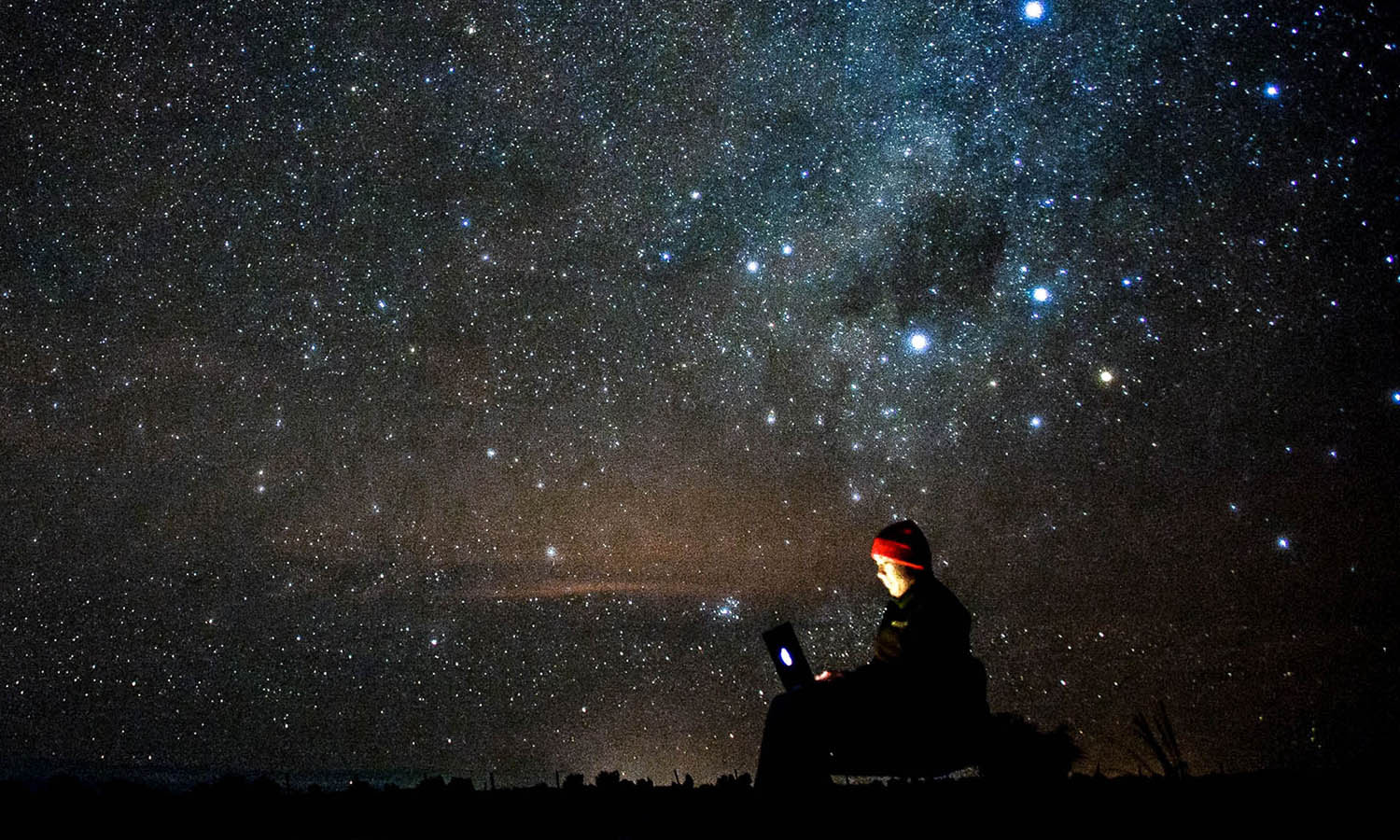

CHILE
The Mars-like Atacama Desert is known, almost universally, as the best place for stargazing. And it’s for good reason.
The combo of high altitude and low humidity means this pocket of Chile gets an average of 200 cloudless nights a year. So you’re (almost always) guaranteed great night sky conditions. If you want some serious #education, join a group and learn about the local Indigenous peoples’ relation to the stars and how the constellations impacted their everyday lives. Or just grab a blanket (nights get cold), cuddle up to your travel buddy and watch the Milky Way have its moment.
Click to SEE THE STAR ATTRACTION
Click play to watch
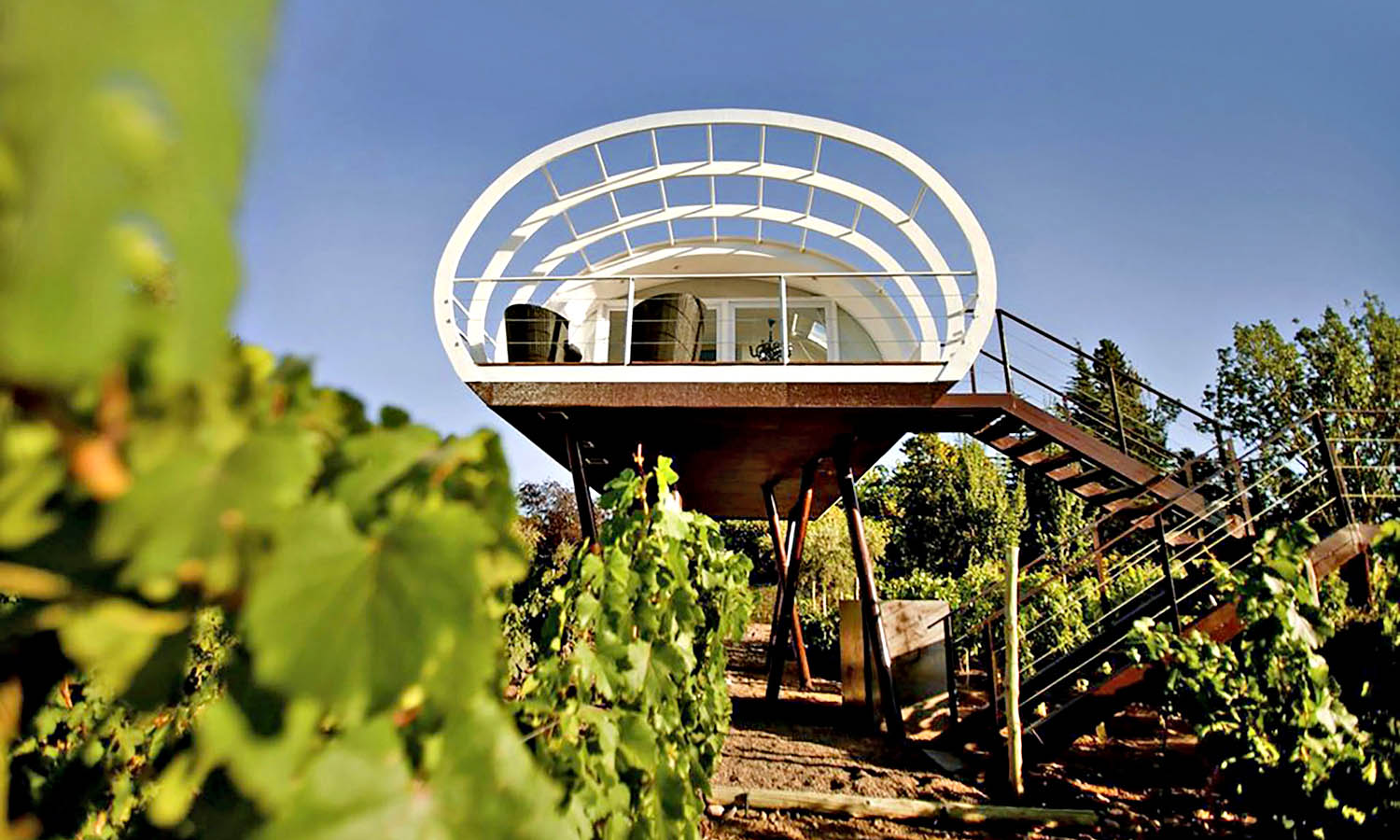

ARGENTINA
For those of us chasing a little more indulgence, Entre Cielos (translating to Between Skies) is a luxury spot that’s home to 16 ‘vineyard lofts’.
You couldn’t get closer to the wine if you slept in the cellar door. Imagine: you wake up to views of the Andes Mountains, you’ve got Argentinian Malbec on tap, a hamam spa around the corner and some of Mendoza’s finest dining just a stroll away. This is the good life, travel doesn’t always have to be hard.
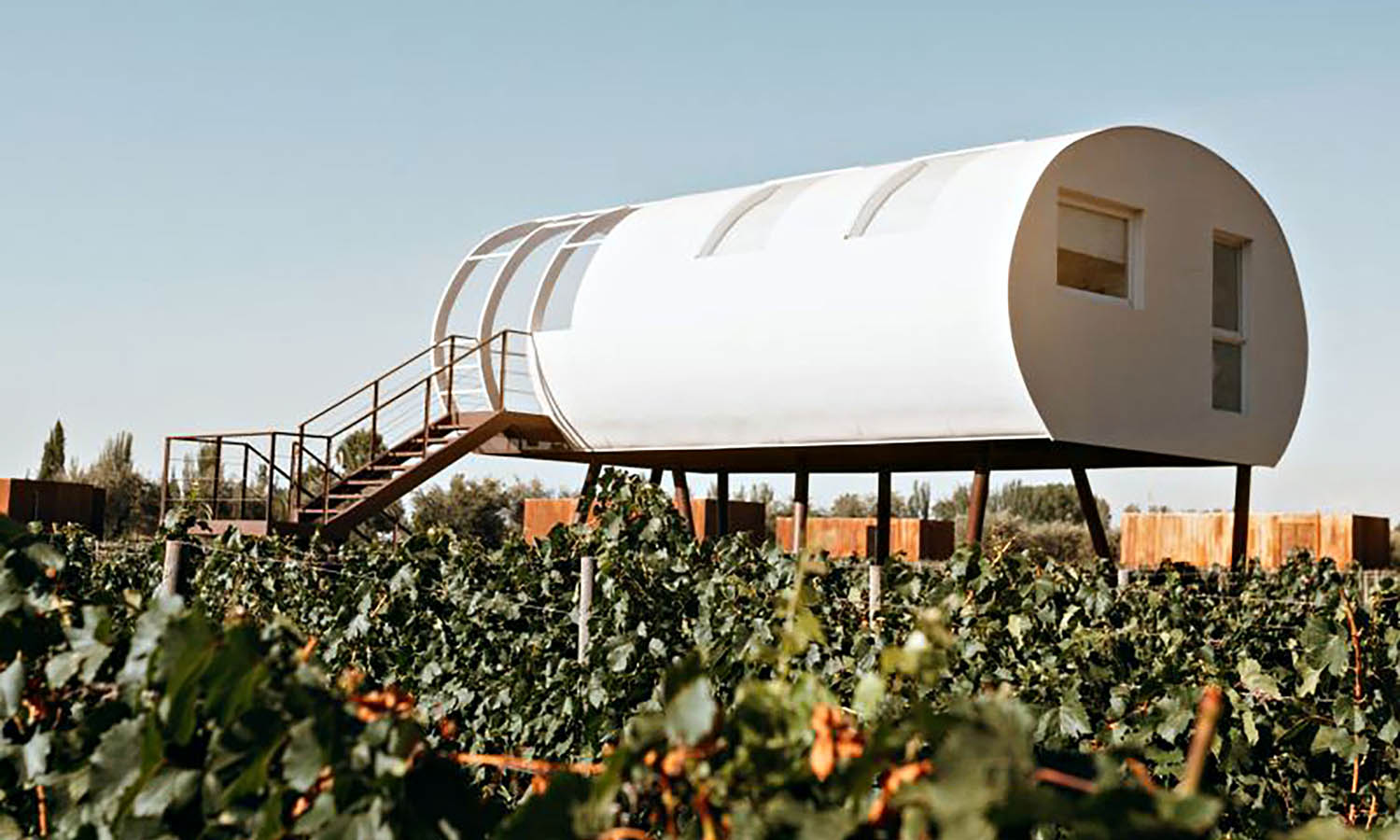

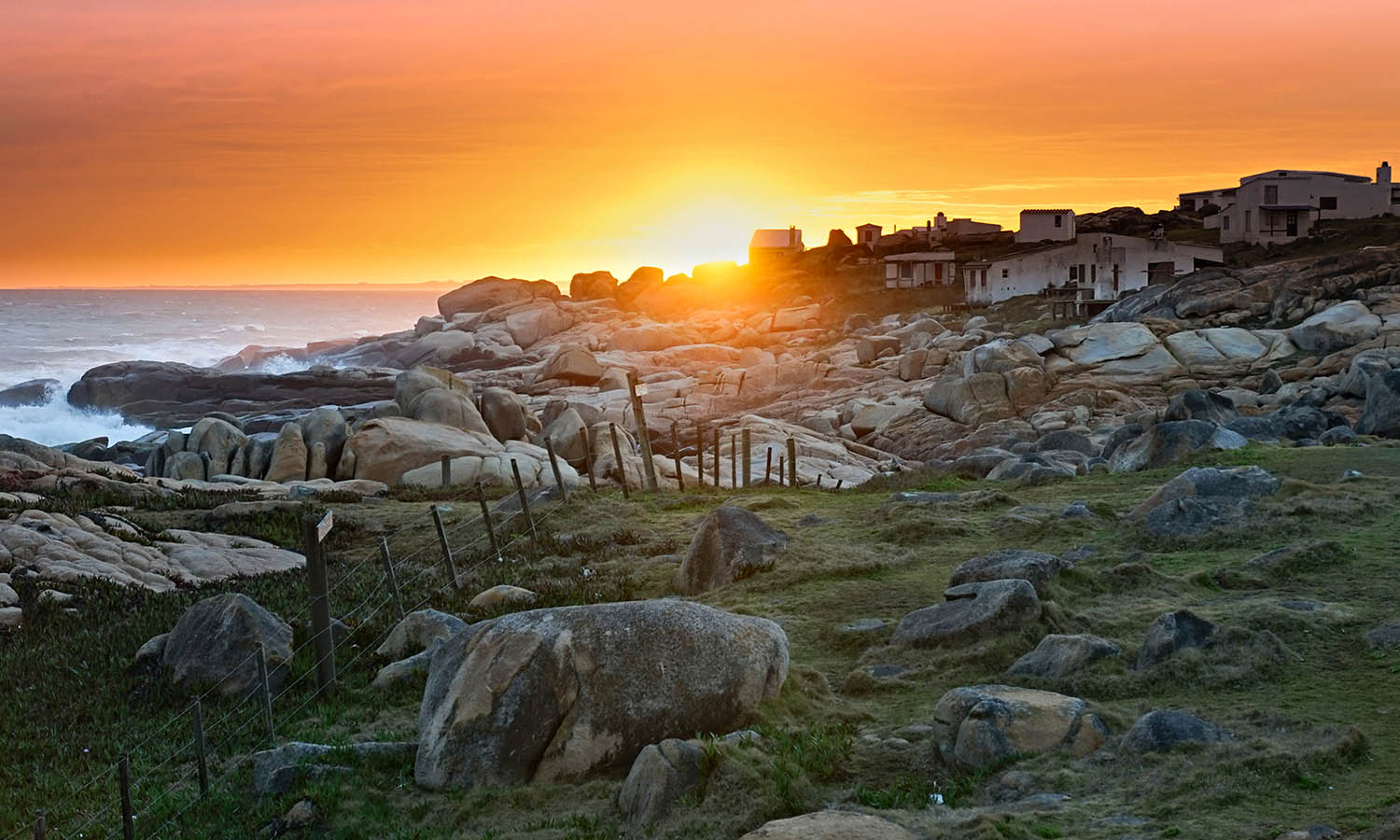

URUGUAY
Cabo Polonio is basic, in the best kind of way. We’re talking uninterrupted coastline, no electricity, minimal infrastructure, no late-night bars (or any loud nightlife, full stop).
It’s curious, it’s magical and it’s beloved by locals. This is not a dire state of economic affairs, this is a village united by their values. Everyone who inhabits Cabo Polonio chooses to exist like this: low key and in touch with nature. You can surf, you can sit by beachfront fires, you can cook over a stove top with your headlamp. This is pure peace and wilderness. Just don’t ask for the wifi password.
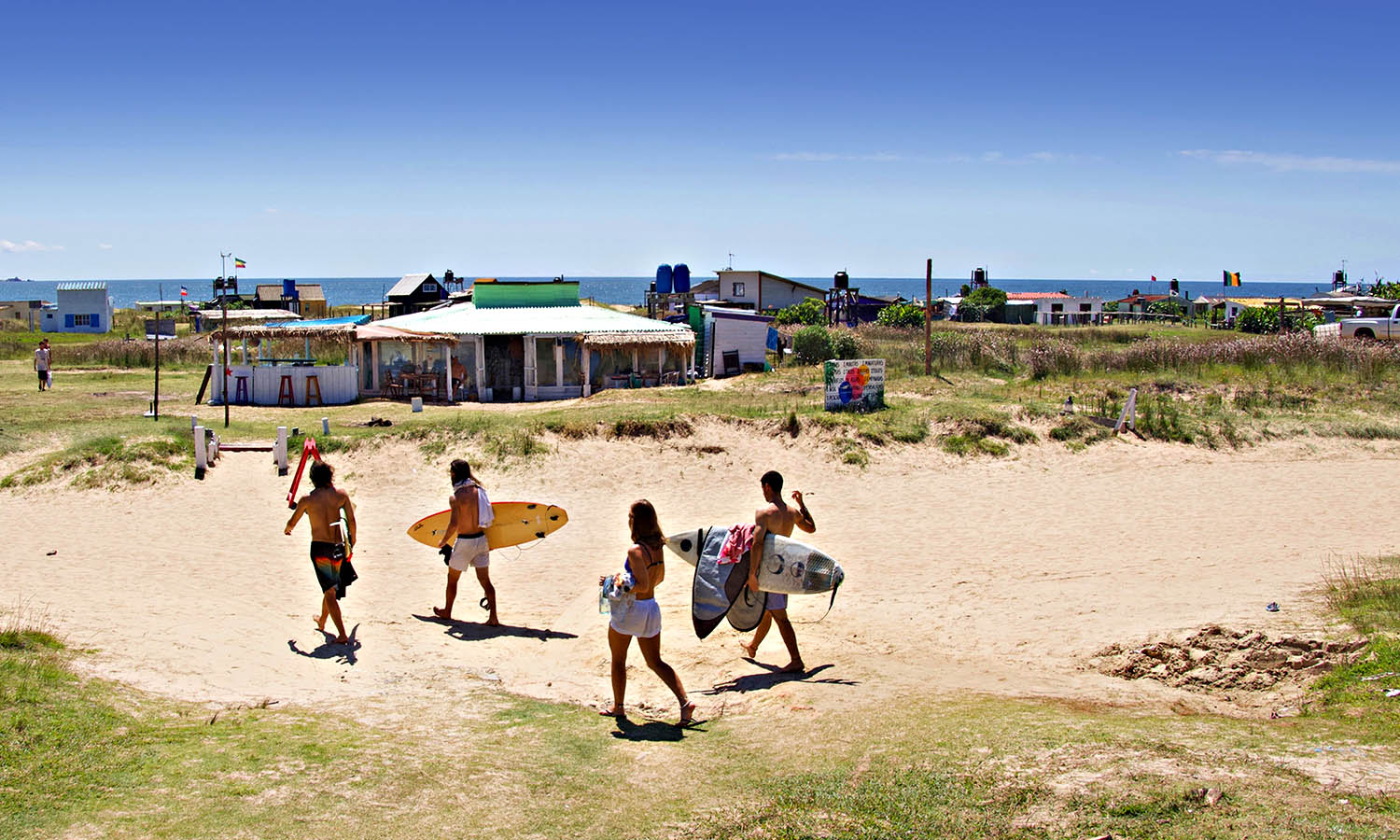



BOLIVIA
We don’t normally encourage hard drug taking at get lost, but we are interested in entrepreneurial spirit and independent thinkers with business initiative. Which is where Route 36 comes in.
Cocaine is on the menu at La Paz’s Route 36, which is (allegedly) the world’s first Cocaine Bar. We think it’s unlikely this business model will take off, a la Starbucks, so it might remain the only cocaine bar for a while. We can’t tell you where it is, because the location changes every month. We can tell you what they serve there: beer (it is a bar after all) and coke, which is distributed freely and easily (local police are paid to turn a blind eye). You can find the bar via word of mouth, and it’s probably the safest place to partake of nose candy in Boliva—low bar we admit. Very different to Route 66 further north.
Click for A VERY DIFFERENT ROUTE
Click play to watch
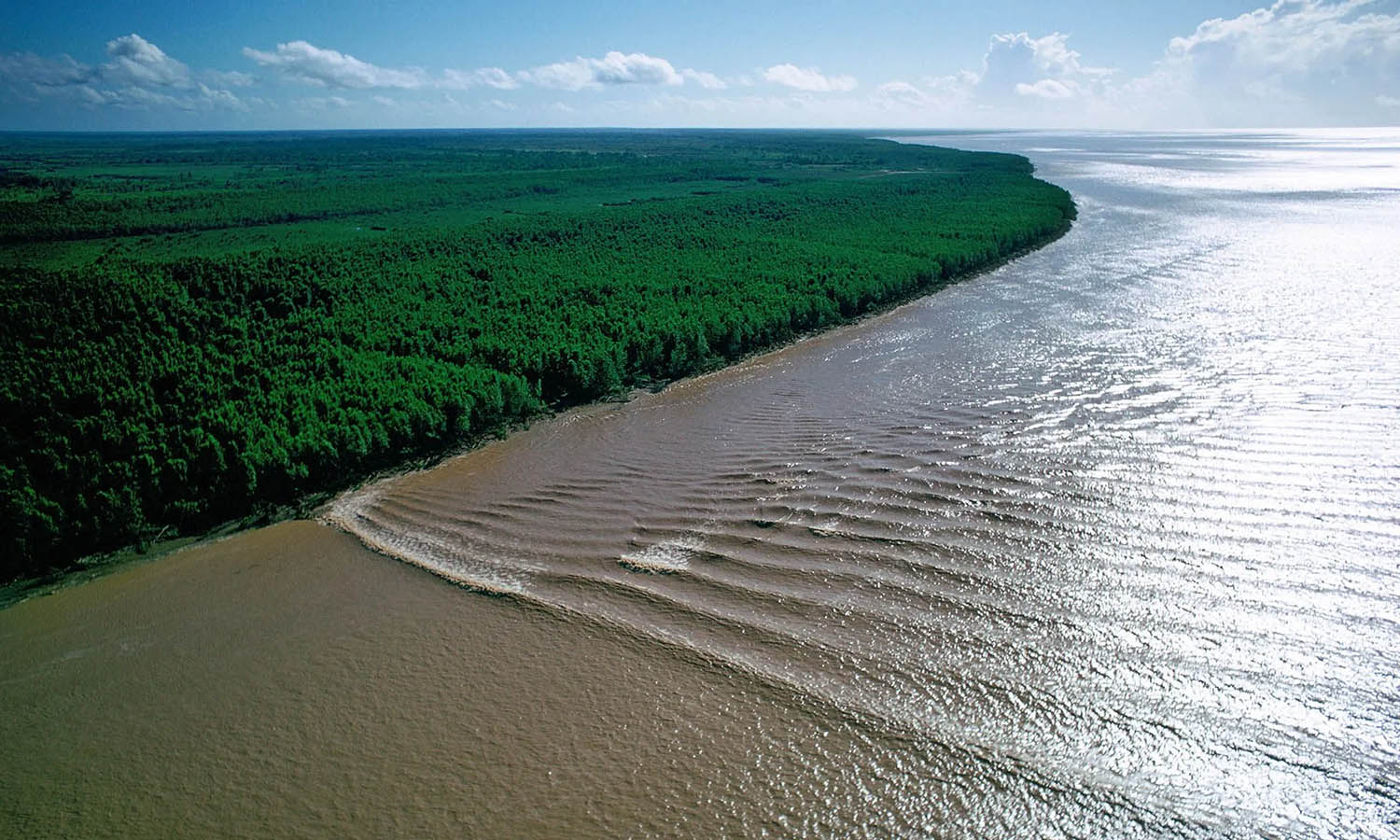

BRAZIL
A few times a year, deep in the Amazon, a true monster—Pororoca—rears its head.
Pororoca means ‘great roar’ and ‘destroying everything’ in local dialects, and it’s not difficult to figure out how they came up with that one. A powerful tidal bore which thunders upstream on the mighty Amazon for as long as 800 kilometres, and as high as four metres, Pororoca is both feared and revered. The tidal phenomenon is best observed on biannual equinoxes in September and March during a spring tide.
Most surfers would rejoice at the prospect of a wave that lasts kilometres—not so much at the prospect of sharing it with crocodiles and schools of piranha that are swept along with it. Still, a select group of maniacs attempt it every year and currently the world record ride stands at a mighty 12.5 kilometres—and has stood for the last 20 years.
Click play to watch
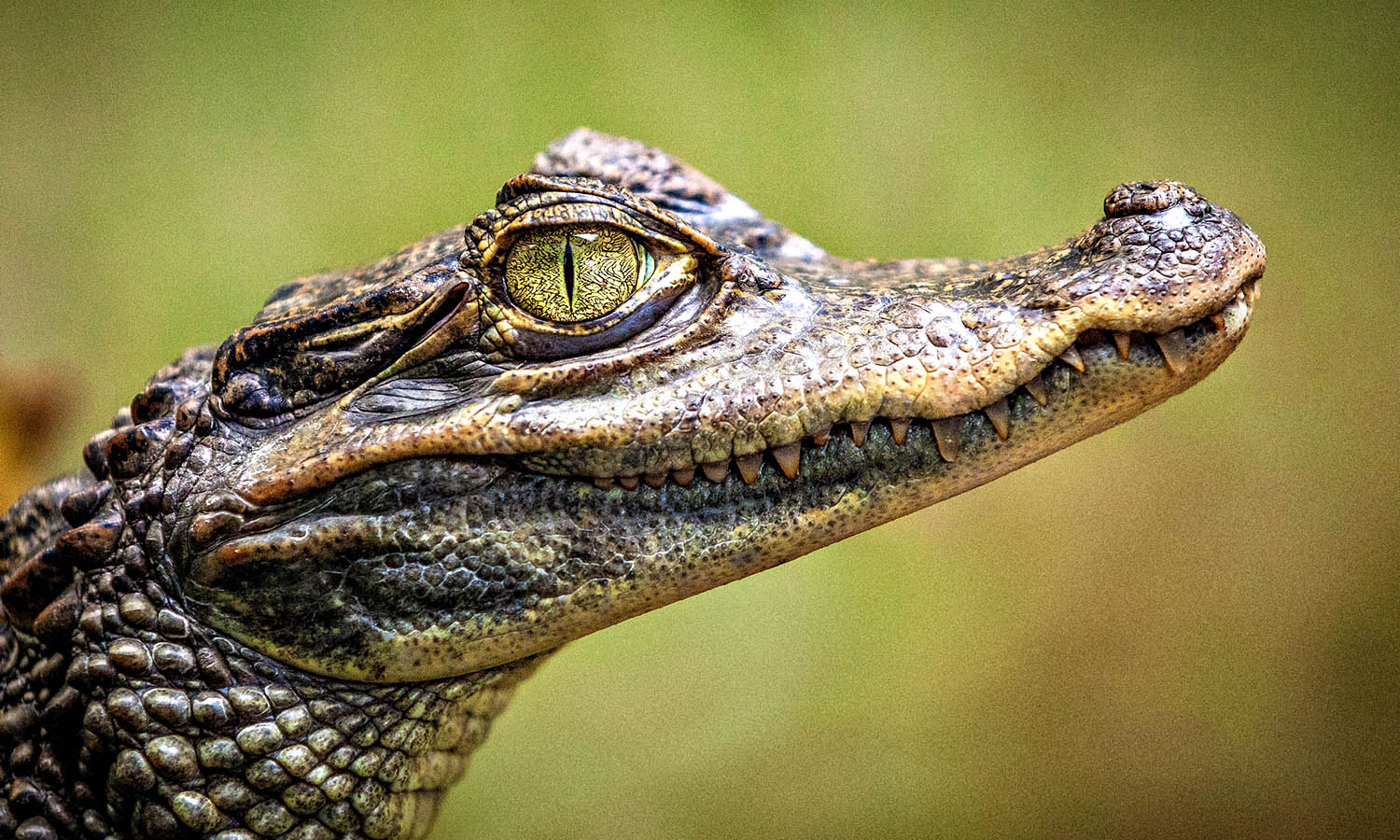

GUYANA
Hold up, you’ve never heard of Guyana?
Tucked on the coast between Brazil, Suriname and Venezuela, Guyana is a slice of wild paradise. In fact, it’s 95% wild paradise. From epic savannahs to winding rivers, pristine beaches and lush rainforest. What this pocket of South America offers is total, unparalleled adventure. Even more extreme is this two-week jungle survival course where you’re thrown into the depths of the rainforest with an instructor and team of local experts to hone your skills amongst the jaguars and caimans.
Click play to watch
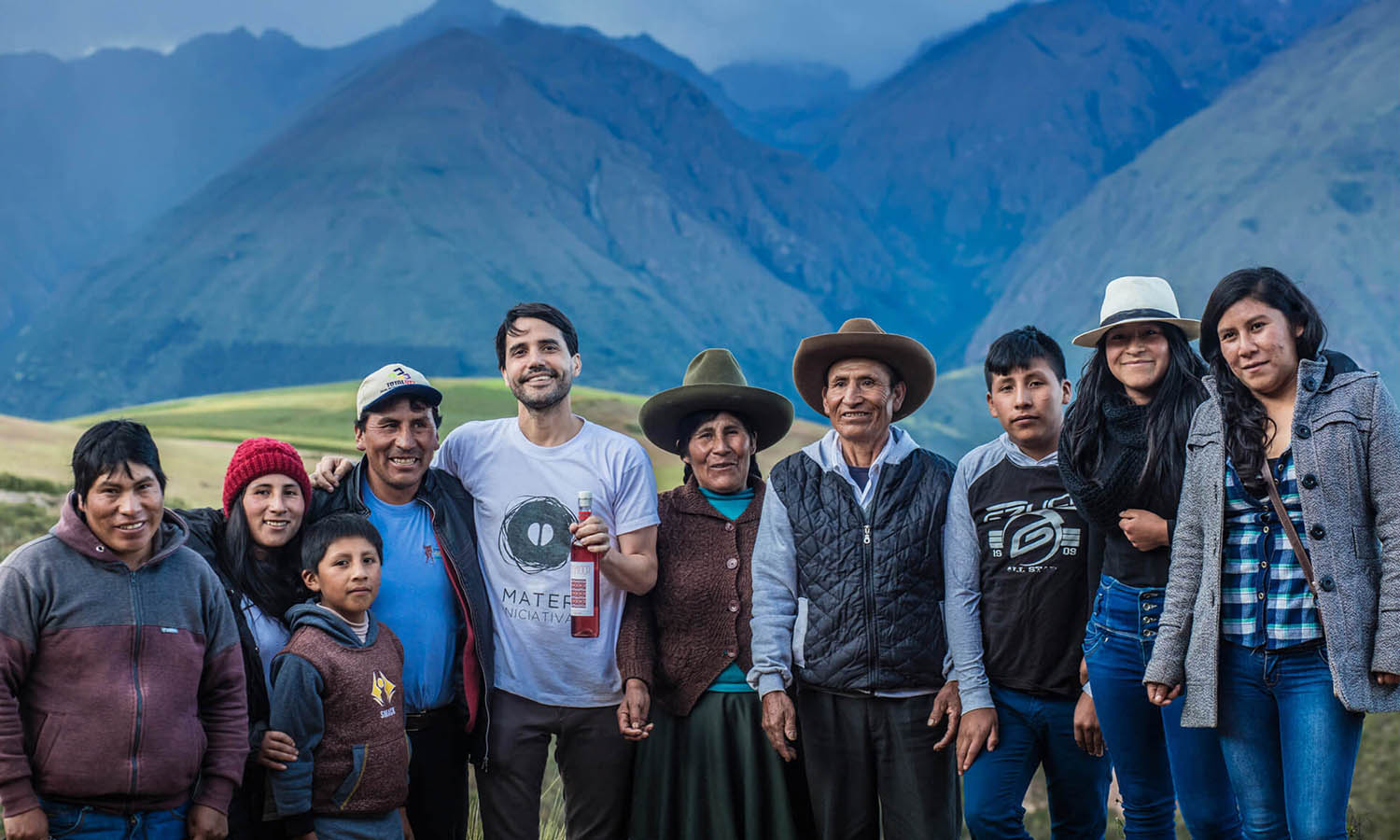

PERU
Perched 3,568 meters above sea level and overlooking the Moray ruins in the Sacred Valley of the Incas, sits Michelin star chef Virgilio Martínez Véliz’s acclaimed restaurant Mil.
The coolest thing about Mil, besides dishing up absolutely exquisite culinary fare, is it’s mission helping Peru reconnect with it’s Indigenous roots.
The restaurant works (or ‘collaborates’) with Mater Iniciativa, an organization employing anthropologists, biologists and a number of other technicians all with titles ending in ‘ologists’ who among other things, team up with local Indigenous communities to re-discover new varieties of potato and other rare plants that are found throughout Peru. Mil is fine dining of the highest order, at the highest altitude. And much more than that.
Click for MOUNTAINOUS, INDIGENOUS, DELICIOUSNESS
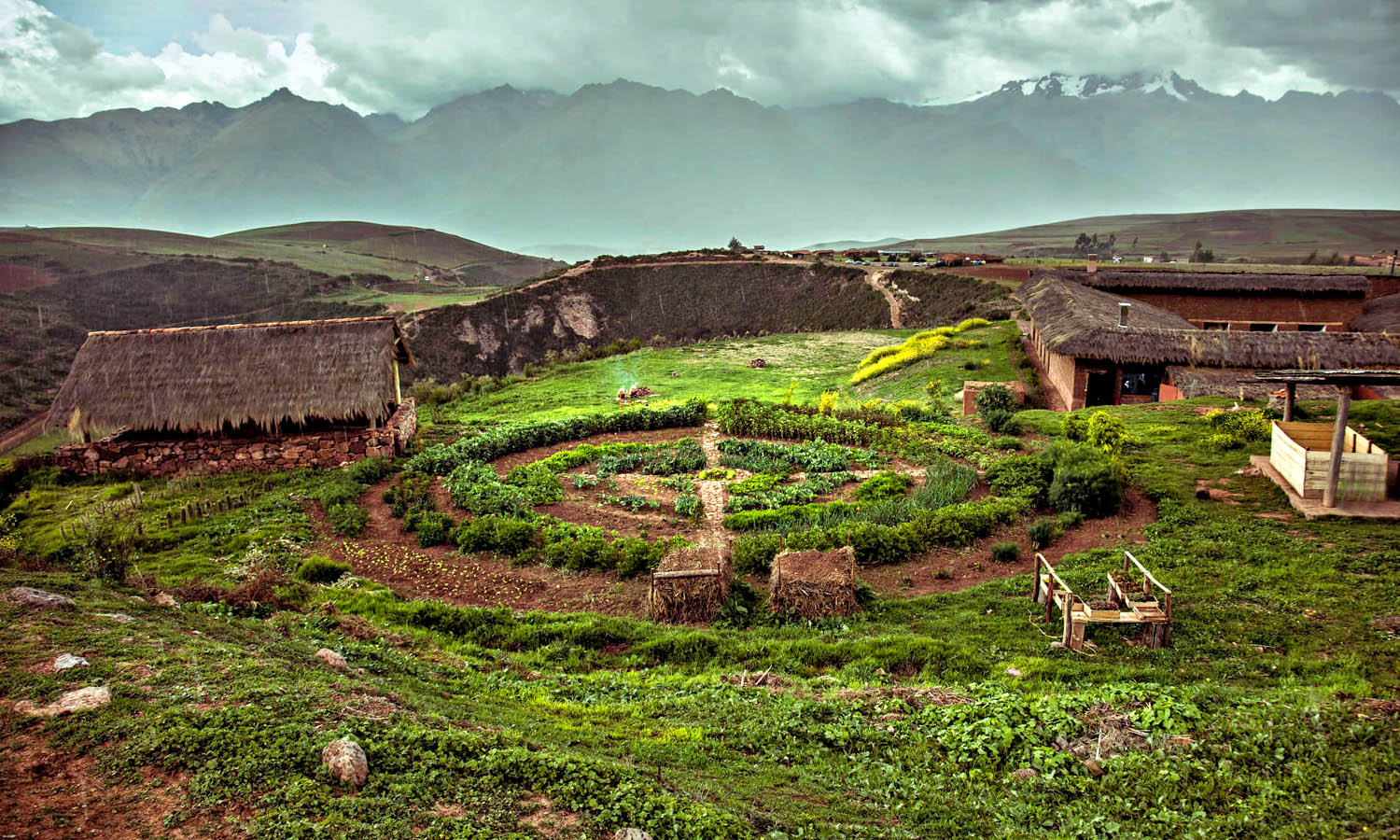

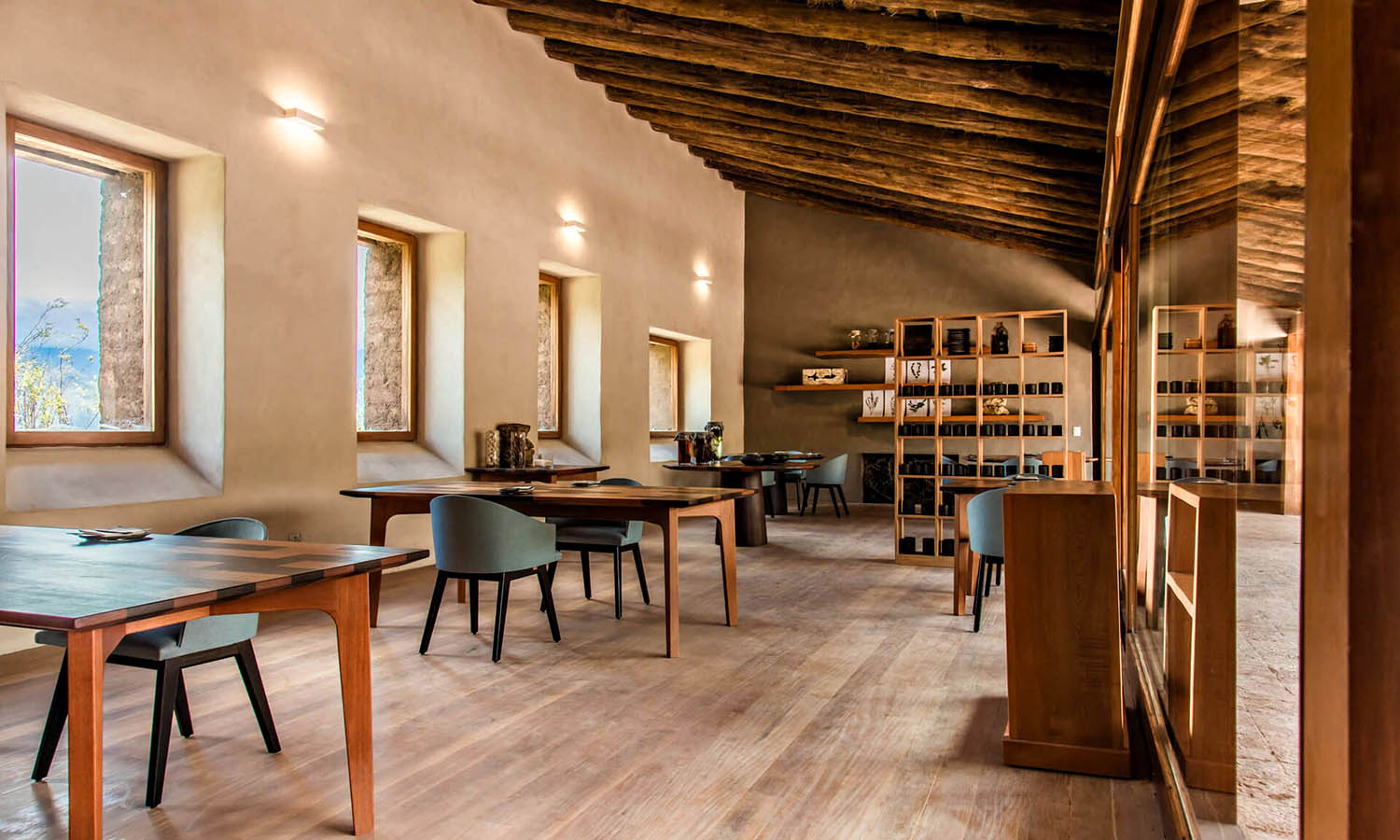

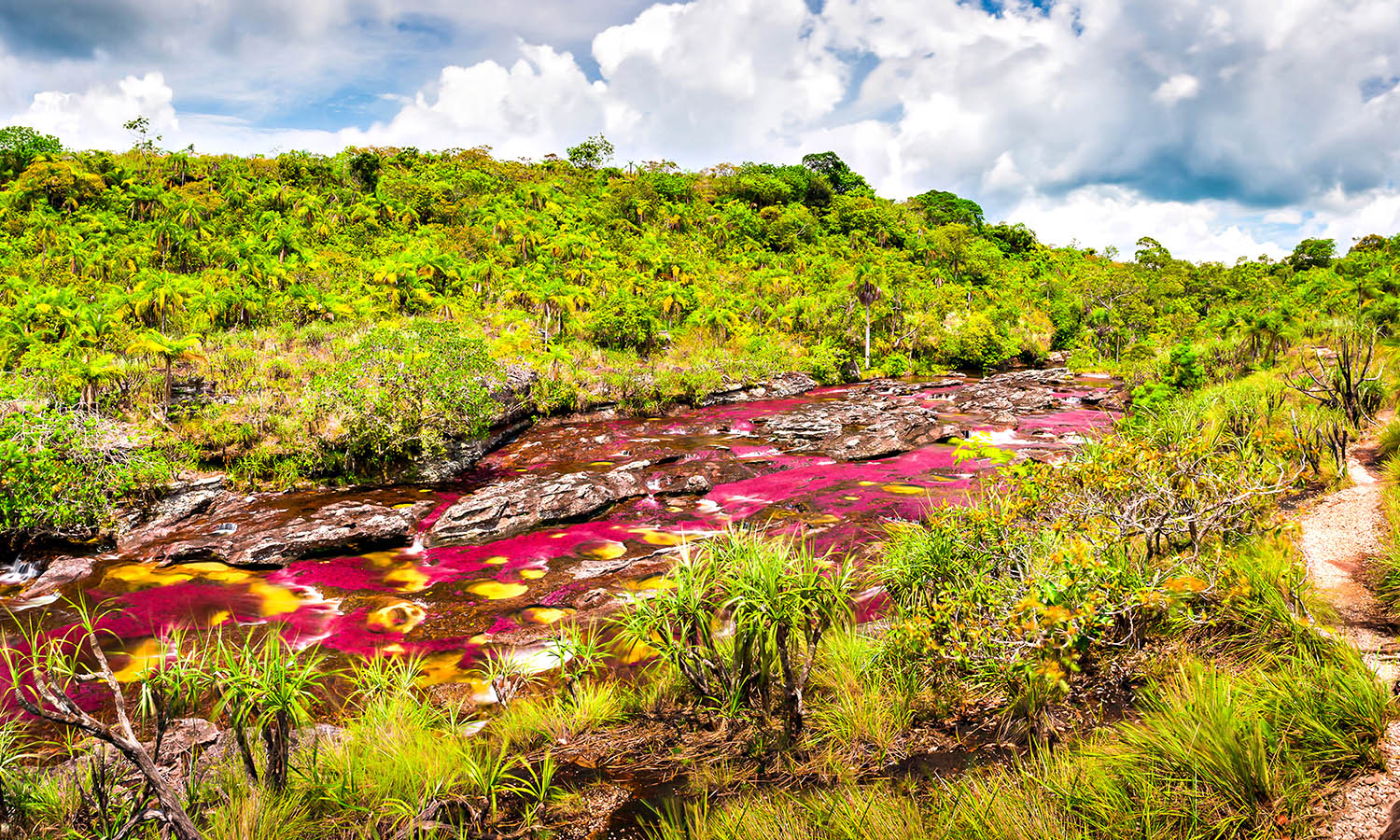

COLOMBIA
This is one for the nature / photography buffs who are up for a remote journey to an isolated corner of Colombia. Sounds like an adventure, right?
It is. Caño Cristales, also known as ‘the river that ran away from paradise’ is considered one of the most beautiful rivers in the world and a bloody phenomenon unto itself. For a very, very brief period of time every year, the river actually blossoms in an explosion of colour. For just a few weeks between September and November, the river is a rainbow.
To get there, fly into nearby La Macarena airport, head to Serranía de la Macarena National Park and then grab a donkey. Some swimming is permitted, but leave your sunscreen at home! The chemicals can destroy the ecosystem.
Click and I CANO SEE A RAINBOW
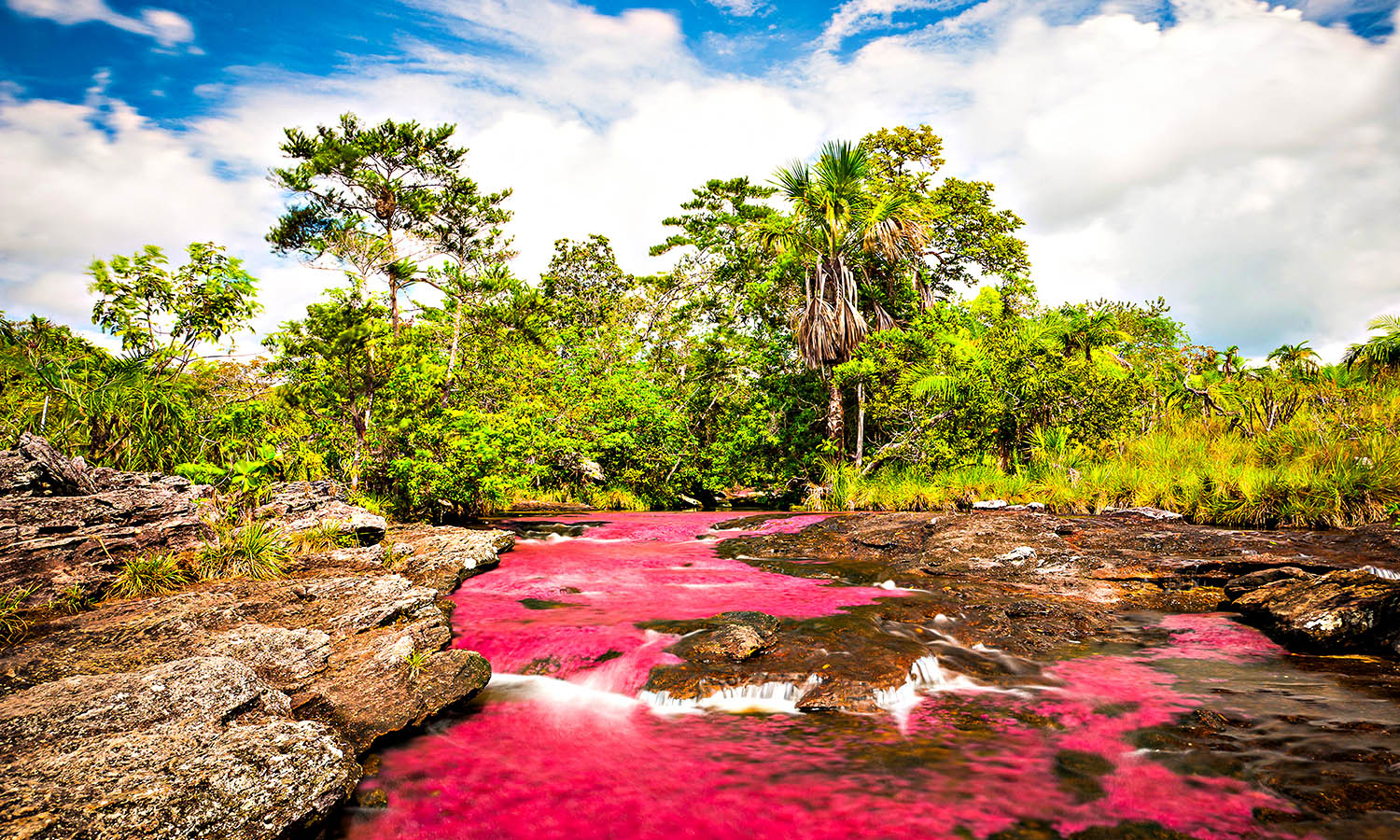

My husband and I are virgins.
Oh, we’ve talked about it heaps, but never actually done it.
Now here I am, faced with ‘The Beast’, wondering what exactly I’ve got myself into.


Long, lonely roads winding through the ethereal landscape of southwest Utah help us bond with ‘The Beast’—our DriveNow RV. And like the Mojave Desert tortoise we spot at our first stop, with our home on our backs for the next eight days, our mantra is to take things slowly.
Click play to watch
“We don’t see many of these,” says Chad, our cycling guide, as we pull our bikes off track. Unfazed, the prehistoric creature lumbers past, scaly legs kicking up puffs of desert dust in its wake. “They’re endangered.”
Cycling with a local guide in Snow Canyon State Park is a mellow intro to a state where small treasures can be overshadowed by the famed ‘Mighty 5 National Parks’. Tucked into folds of soaring rainbow-coloured cliffs chiselled over millions of years by wind and water, the canyon is like a gallery of precious art.
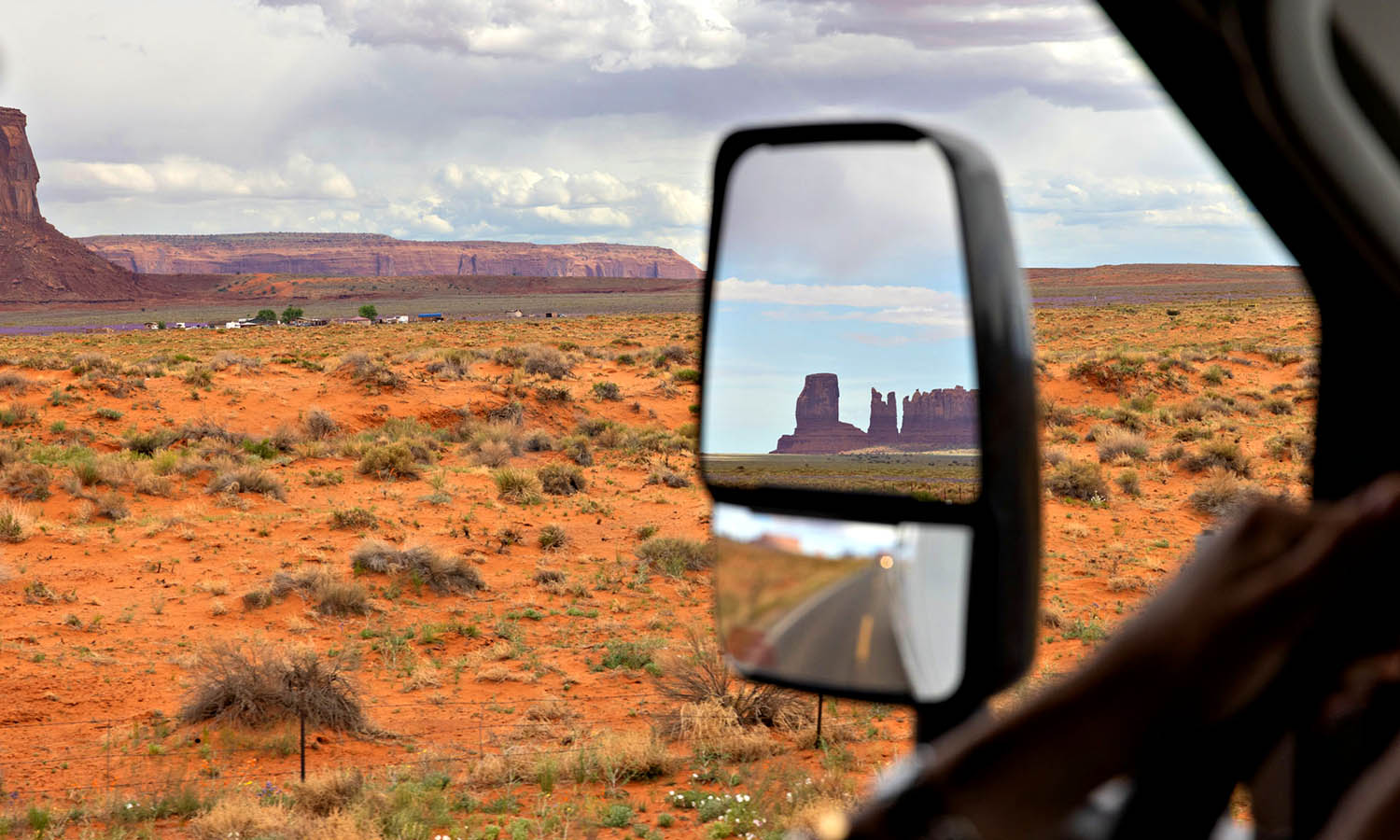

Click play to watch
We follow Chad along trails dotted with wildflowers; through a narrow slot canyon; and clamber over swirls of polished slickrock to the top where the fading sun rays are turning the rock fire red. “When I’m standing up here, it makes me think no matter what’s happening in the world, there’s hope,” says Chad, spreading his arms towards the horizon.
As each day unfolds, we embrace the grandeur of our surroundings. I ride a mule named Porky to the floor of Bryce Canyon; act out movie scenes in Monument Valley; and dance like no-one is watching on top of Muley Point.
Click play to watch
In Zion National Park, I pretend to be disappointed that Angels Landing, the hairiest of all hikes in Utah, is temporarily off limits. To make up for it, we hike the short, steep Canyon Overlook trail, tramping over bridges and along precarious ledges with gobsmacking views, before a leisurely bike ride on the Pa’rus trail that snakes alongside the Virgin River. With record spring snowfalls, the lifeblood of southwest Utah is running high, and I find myself pedalling to the rhythm of the river.
Another day we hike through a canyon where the terrain changes faster than a chameleon. Following the Calf Creek Falls trail in Grand Staircase-Escalante National Monument through 12 micro-climates, from arid rocky overhangs to lush wetland forest, we’re rewarded with a 40-metre drop of frigid water cascading over tiger-striped sandstone cliffs.


The geological richness of Utah is balanced by its Indigenous cultures.“Hozho is an important word in our language,” says Louis Williams, a proud member of the Diné tribe of the Deer Springs clan. “It’s the equilibrium, the connectiveness between nature, and our mental, physical and spiritual state.”
We’re walking beside Louis in Bears Ears National Monument. As owner and operator of Ancient Wayves River and Hiking Adventures, he shares his passion for his ancestral land with people from all over the world. “I haven’t met many Aussies though,” he says with a smile as wide as the canyon we’re standing in.
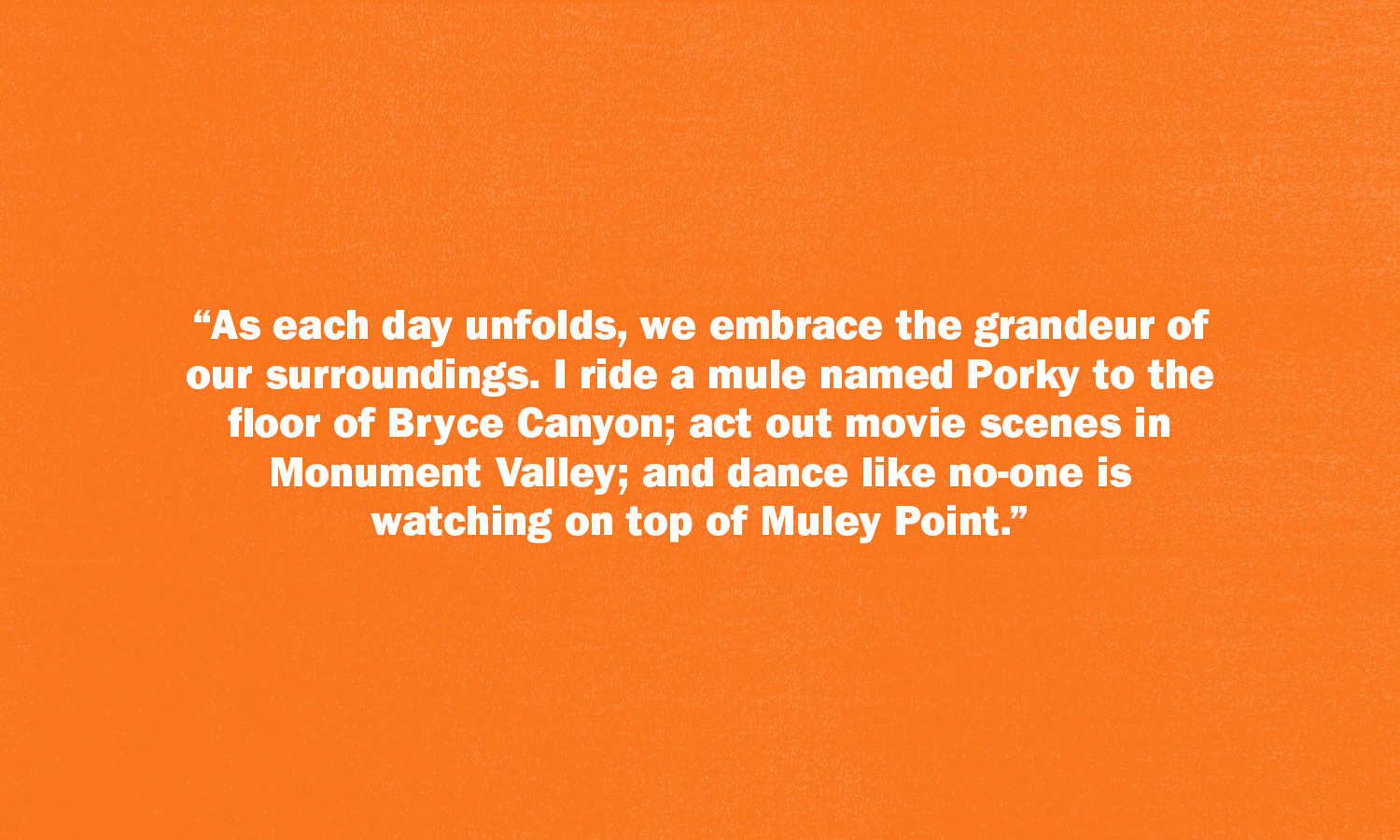

Traversing a dry creek wash trail in Cedar Mesa, Louis describes the significance of the desert flora surrounding us. “We make rope from the leaves of the yucca plant and shampoo from the roots. Juniper needles keep negative energy out of our homes, and we weave baskets from sumac.”
As the sun starts to cast shadows across the canyon, Louis quickens the pace to reach the ‘surprise’ he wants to share with us. “This is a granary where my ancestors stored food,” he explains.
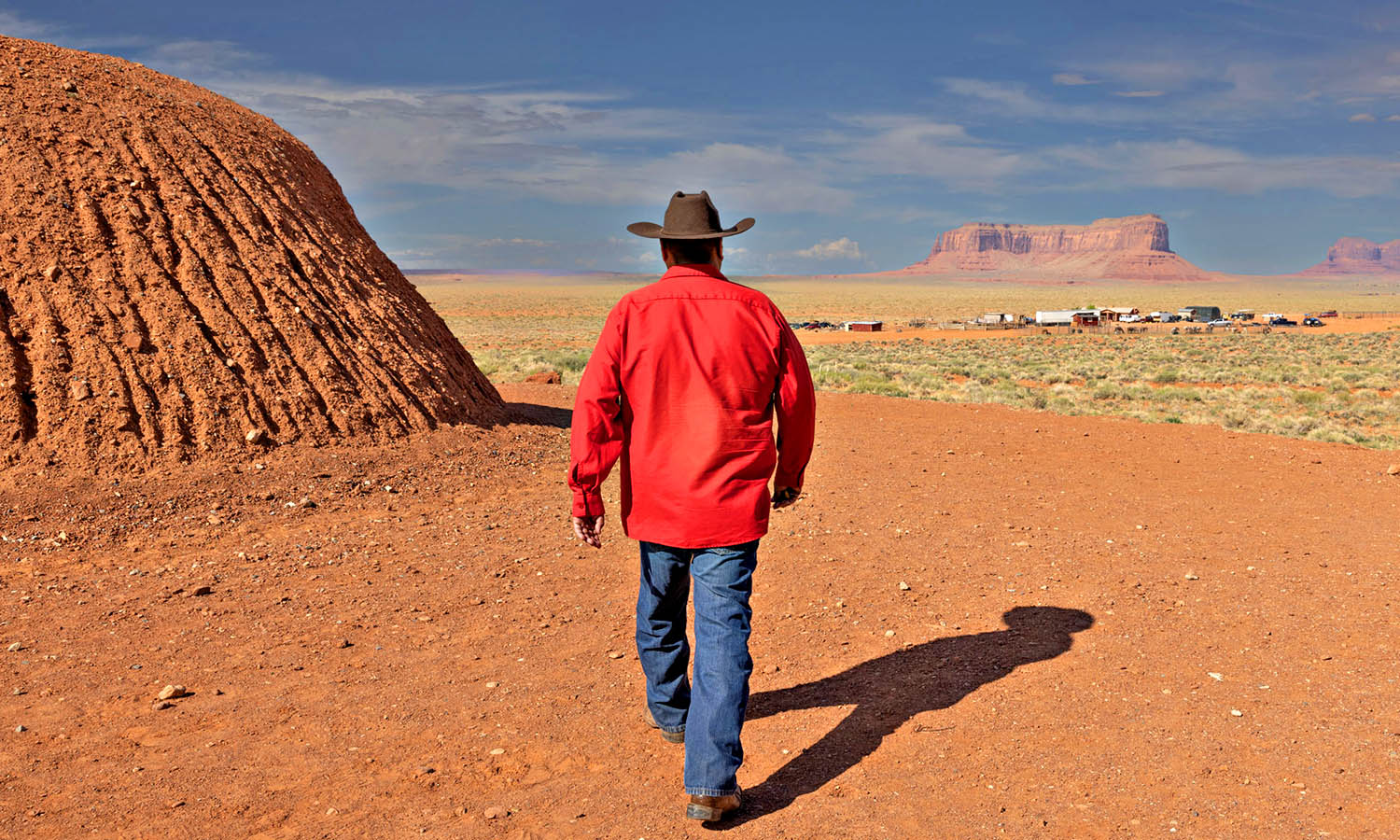

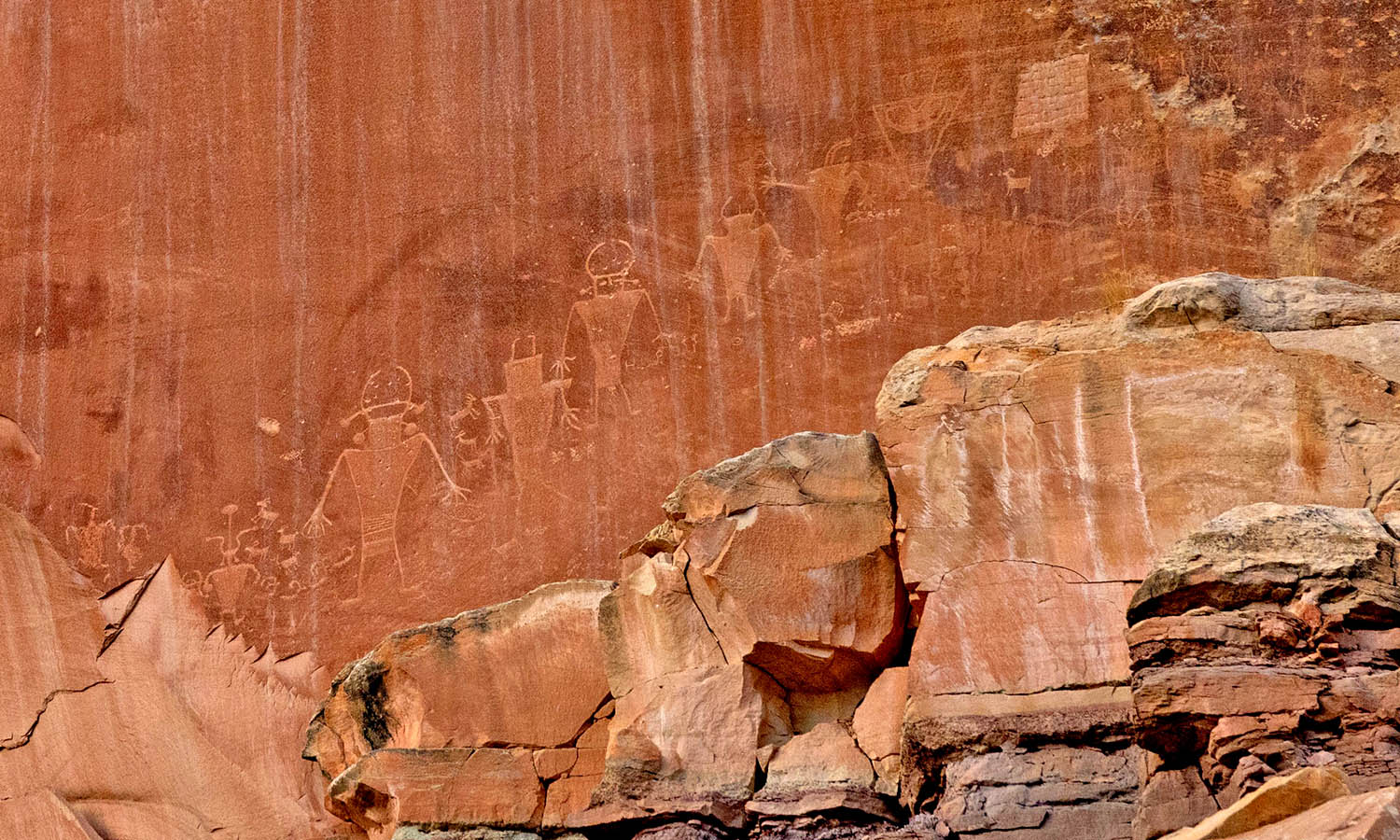

Hidden beneath a massive sandstone rock, the ruins of this architectural masterpiece—built between 700 and 2,500 years ago and known as ‘the house on fire’ for the way the light catches the rock at certain times of day—is perfectly intact.
As we peek through its windows, I try to visualise Indigenous Puebloan life. “Squash, corn and beans were their staple crops,” Louis says. “They put food in pottery urns, lit a small fire inside the rooms and sealed up the windows. Once the fire sucked out all the oxygen, it went out and the food was preserved.”
A pictograph of a hand and sherds of broken pottery scattered in the sand adds to the profoundness of the site.
Click play to watch
After action-packed days, nights bring another dimension entirely. Setting up camp for us RV newbies is remarkably simple. Hook up the hose for fresh water here, connect the power cable there, and we’re all good.
Van life is very much the way of life in Utah. RV parks are friendly laid-back places to do as much or as little as you like. Sometimes we cook dinner, other nights we take the recommendation of locals and head to a restaurant or diner.
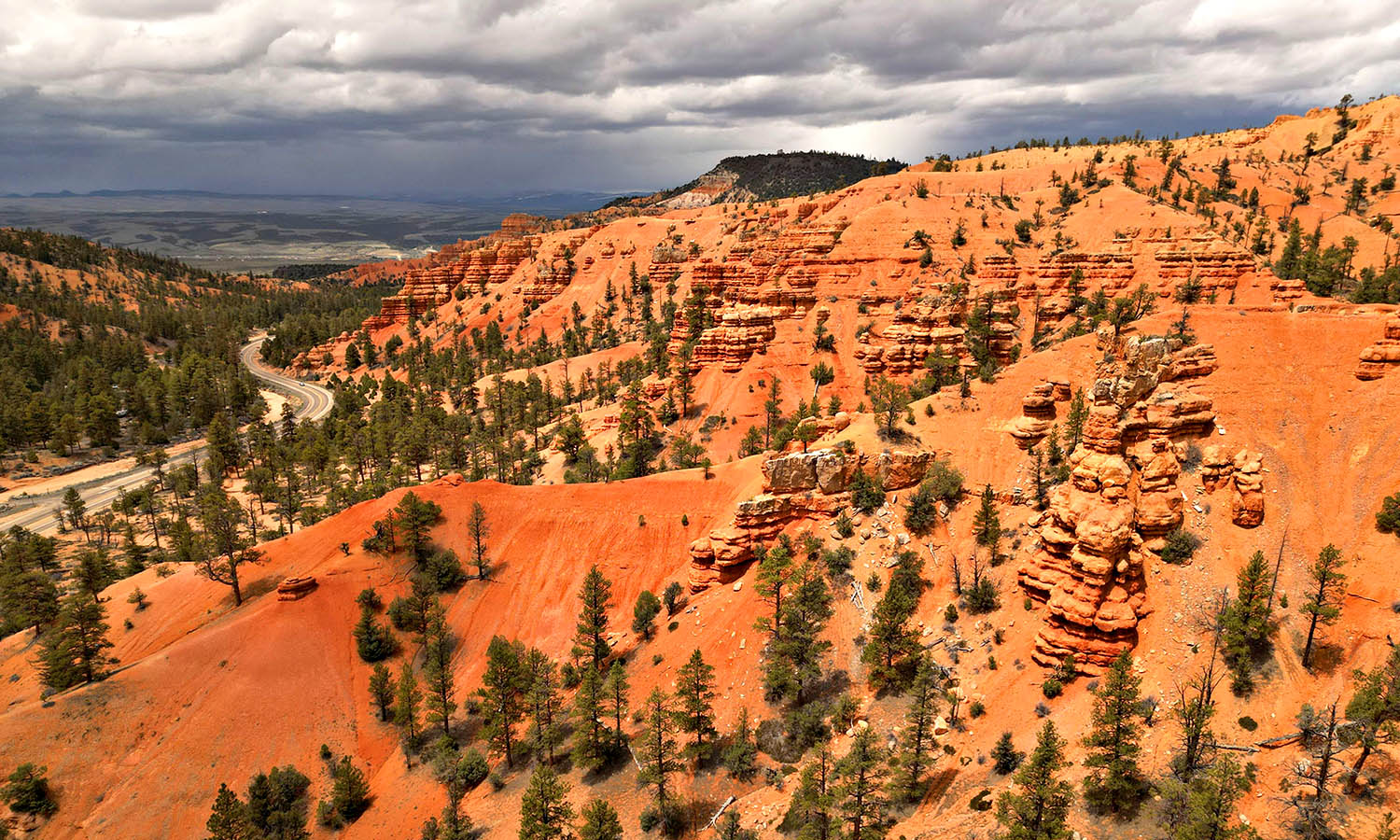

“Don’t miss Patio Diner in Blanding,” says everyone we seem to meet. This family-run hole-in-the-wall is straight out of an episode of Happy Days. And what’s even better is their burgers live up to the hype as ‘the best in the southwest.’
However, cooking dinner at Yonder in Escalante is the RV roadie highlight. We pick up a DIY food pack from the onsite shop and sit around the campfire cooking chicken and veggies. We eat too many ‘smores and sip on a fine US chardonnay beneath a big sky crammed with stars.
Eight days, 1,700 kms, and untold adventures in ‘The Beast’ now turned ‘Bestie’. With the RV cherry popped, I’m only left wondering, what took us so long.
Writer was hosted by DriveNow Rentals and Utah Tourism Office.